
Touropia Travel
Discover the World

12 Top Attractions & Places to Visit in Madagascar
By Spencer Leasca · Last updated on May 4, 2024
One of the last major areas on Earth to be settled by humans, the natural beauty and ecological diversity of Madagascar makes it feel like a country forgotten by time.
Located off the eastern coast of Africa in the Indian Ocean, Madagascar is home to thousands of plant and animal species found nowhere else in the world. Madagascar’s extraordinary natural diversity has earned the country the nickname “the eighth continent”. From the iconic lemurs and baobab trees to the vibrant chameleons and intricate orchids, each step reveals the island’s remarkable and endemic treasures.
Beyond its spectacular wildlife, things to do in Madagascar also include exploring its diverse landscapes. Travelers can trek through lush rainforests, traverse spiny deserts, and marvel at limestone formations that defy imagination. At the same time, the intoxicating rhythms of traditional music, the delicious flavours of the local cuisine and the warm hospitality of the Malagasy people will captivate you.
Visit the top tourist attractions in Madagascar to discover for yourself the natural, cultural and historical diversity that is this country. You’ll instantly fall in love with it.
12. Ranomafana National Park
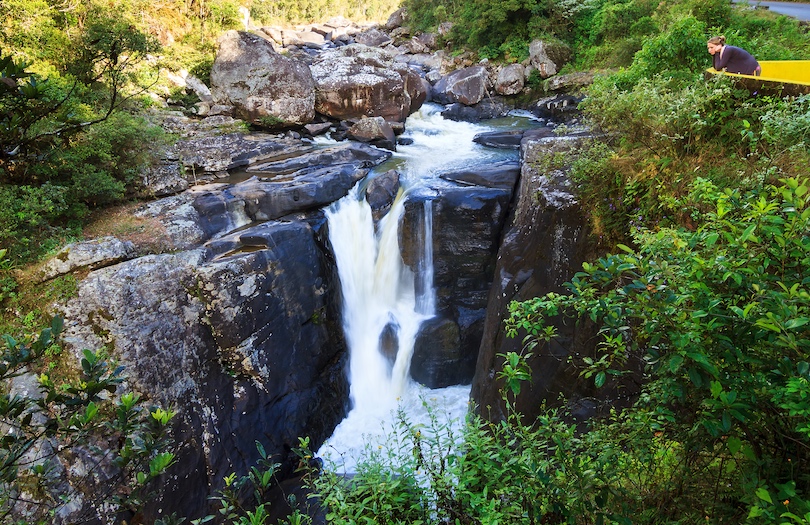
Sprawling across the Vatovavy and Haute Matsiatra regions, stunning Ranomafana National Park boasts incredible biodiversity and breathtaking landscapes.
Located in southeastern Madagascar, the park’s name means ‘hot water’ in Malagasy. It refers to the numerous thermal springs – many of which are reputed to have curative powers – found in the adjacent town of Ranomafana.
Visiting Ranomafana National Park offers a chance to witness unique wildlife, including endangered species like the golden bamboo lemur and the elusive fossa. Exploring the well-maintained trails, you’ll encounter cascading waterfalls, picturesque streams, and diverse plant life that ranges from orchids to towering ferns.
Organised tours are mandatory at the park, with experienced guides educating tourists about its ecosystem and conservation efforts. But for a truly immersive experience, consider staying in nearby eco-lodges and participating in night walks to observe nocturnal creatures.
11. Tsingy Rouge Park
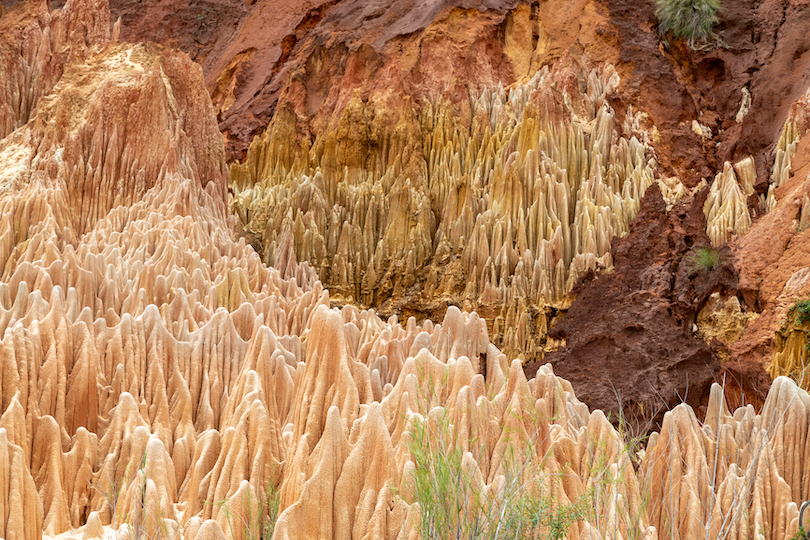
Tsingy Rouge Park presents one of the more unique and breathtaking sites in Madagascar.
Situated within the southwestern part of the island, it is renowned for its stunning red limestone formations, resembling a labyrinth of sharp peaks and spires.
A mesmerizing geological wonder, a visit to Tsingy Rouge Park provides a surreal and otherworldly experience. The rusty-red color of the towering limestone structures creates a striking contrast against the surrounding greenery. It is even more magnificent under a cerulean sky.
The park is home to various species of plants and animals who have adapted to this rugged environment, such as lemurs, reptiles, and different bird species.
Exploring the park’s intricate network of trails and bridges is best done with a local guide. They will navigate the challenging terrain and take you to lookouts that showcase tremendous panoramic views.
10. Lemurs’ Park in Antananarivo
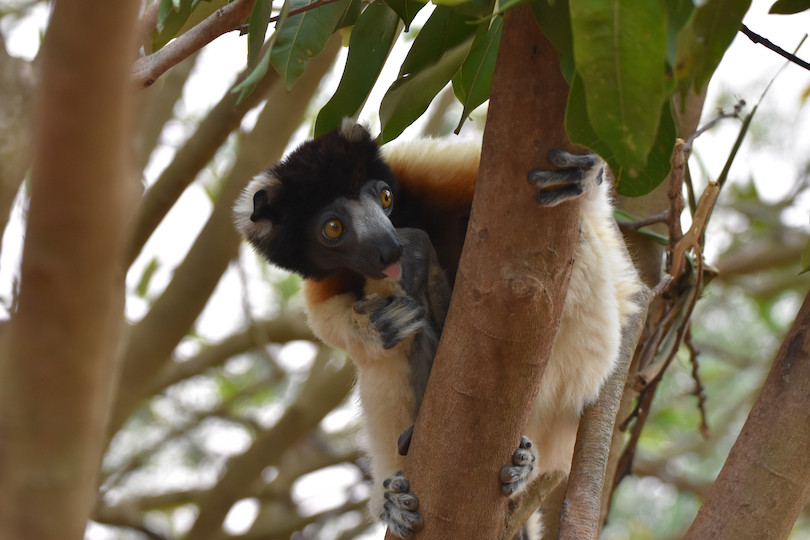
You’ll want to head to Lemurs’ Park if you’ve never seen a Lemur.
Located near Antananarivo, the capital city of Madagascar, the park provides a safe and natural habitat for several species of this prosimian. Offering an educational and immersive experience, it allows visitors to observe these fascinating primates in a semi-wild environment.
Guided tours provide valuable insights into the animal’s behavior, their habitat’s ecological importance, and the park’s conservation efforts.
As you are led through the park’s lush vegetation, you’ll encounter lemurs of different species, including ring-tailed lemurs, brown lemurs, and sifakas. These playful and curious creatures often come close, offering an opportunity for unique and memorable interactions.
Aside from the primates, Lemurs’ Park also features botanical gardens with diverse endemic plant species, providing you with additional insights into Madagascar’s rich biodiversity.
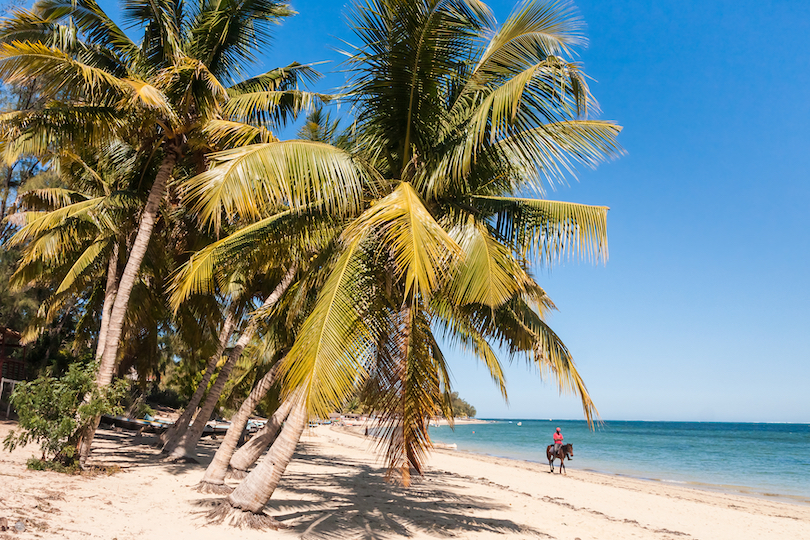
Those wanting a serene and laid-back beach experience should head to Ifaty.
A charming village on the southwestern coast, the white sandy beaches of Ifaty provide a picturesque setting for sunbathing, swimming, and leisurely walks along the shore.
The most popular things to do in Ifaty are snorkeling and diving, as it contains diverse marine ecosystems surrounding the region’s coral reefs. They are home to a dazzling collection of colorful fish, turtles, and other fascinating sea creatures.
Beyond the beaches, Ifaty is a gateway to the nearby Reniala Nature Reserve, where visitors can explore the spiny forest, a distinct ecosystem characterized by peculiar flora and fauna. Guided walks in the reserve offer opportunities to encounter baobab trees, rare bird species, and even the endangered radiated tortoise.
8. Masoala National Park
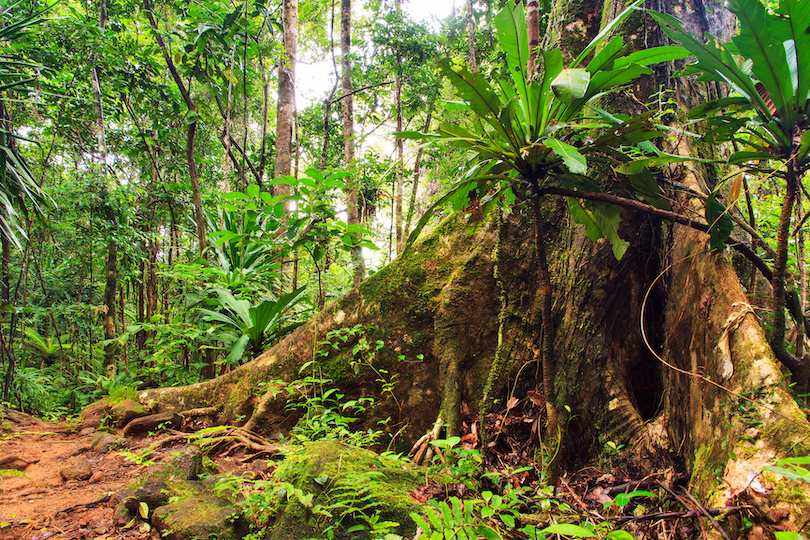
Over on the northeastern coast of Madagascar, Masoala National Park is a magnificent tropical rainforest sanctuary that is one of the largest protected areas in the country.
Only accessible by boat through the Gulf of Antongil from Maroantsetra, the park encompasses pristine beaches, dense rainforests, and numerous other diverse marine ecosystems. It is home to several rare and endemic species, including the wonderfully named aye aye, the red-ruffed lemur, and the colorful helmet vanga bird.
The best chance of seeing them is by hiking through the lush forest trails. However, should you prefer your explorations to be underwater, the park is also home to magnificent coral reefs. Favoured by snorkelers and diving enthusiasts, you should see plenty of turtles among the marine life.
7. Andasibe-Mantadia National Park
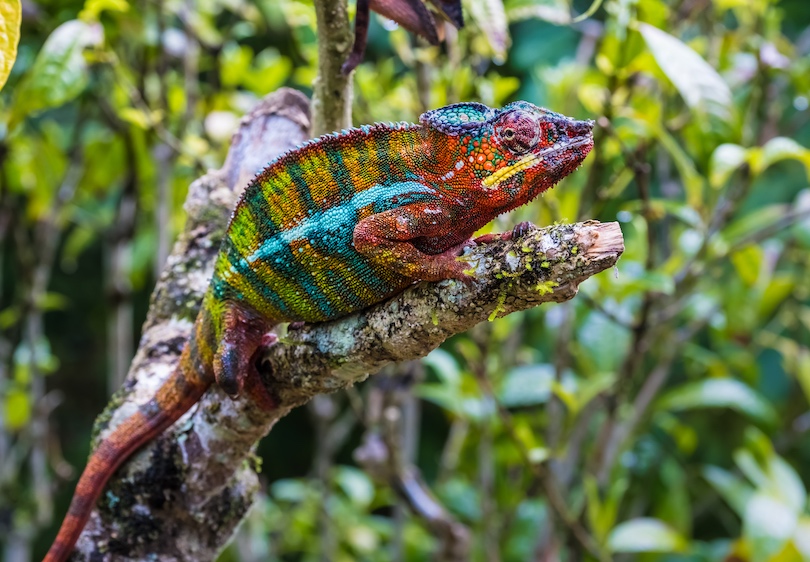
Nestled on the island’s eastern side, Andasibe-Mantadia National Park is an enchanting destination.
As its name suggests, it comprises two sections: Andasibe and Mantadia. Both are renowned for their lush rainforests, unique fauna, and mesmerizing landscapes.
If you come here, you will be able to encounter the indri lemurs. The largest living lemurs are known for their distinctive calls and acrobatic leaps through the trees, which will captivate your attention.
Guided walks along well-maintained trails provide riveting experiences, allowing visitors to appreciate the park’s lush vegetation, towering trees, and spectacular, cascading waterfalls.
To enhance your experience, consider embarking on a night walk, where you can witness nocturnal creatures and listen to the symphony of the forest.
6. Royal Hill of Ambohimanga
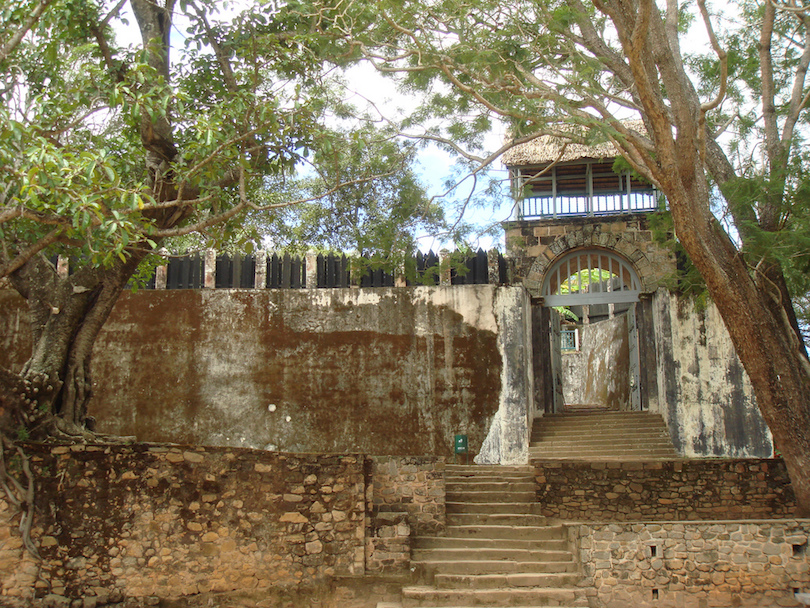
If you are interested in the history and culture of Madagascar, visiting the Royal Hill of Ambohimanga is a fascinating and enriching experience.
Located just outside Antananarivo, this sacred hill is a significant cultural landmark that holds great importance as the former royal capital of the Merina Kingdom.
Offering a fascinating glimpse into Malagasy history and culture, it features ancient royal palaces, tombs, and traditional houses that showcase the architectural and artistic heritage of the region.
Travelers can also wander through its peaceful gardens, marvel at panoramic views of the surrounding landscape, and learn about the customs and traditions of the Merina people. The site also includes a museum where artifacts and exhibits provide insights into the kingdom’s history and rulers.
5. Isalo National Park
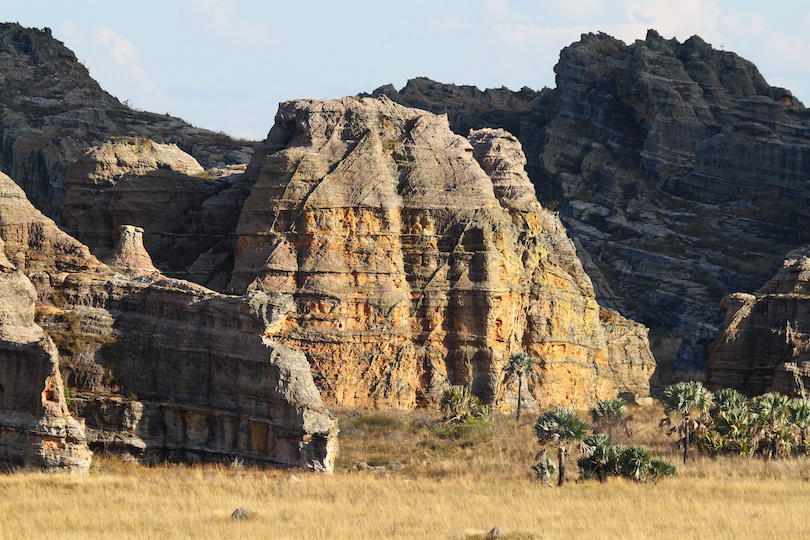
Isalo National Park is a true gem you should try to visit. Nestled in the southwestern part of Madagascar, the park features stunning landscapes, unique rock formations, and diverse wildlife.
Visiting here allows you to explore its vast canyons, deep gorges, and picturesque oasis-like pools. The park’s iconic sandstone rock formations also create a dramatic backdrop for hiking trails that lead to breathtaking viewpoints and areas with hidden waterfalls.
The park also has incredible flora and fauna, including lemurs, chameleons, and several colorful bird species. You may even spot the rare Benson’s rock thrush or the graceful ring-tailed lemur.
As in many of the country’s national parks, guides are required. Tours can be arranged to last as short as several hours or as long as several days.
4. Ile Sainte Marie
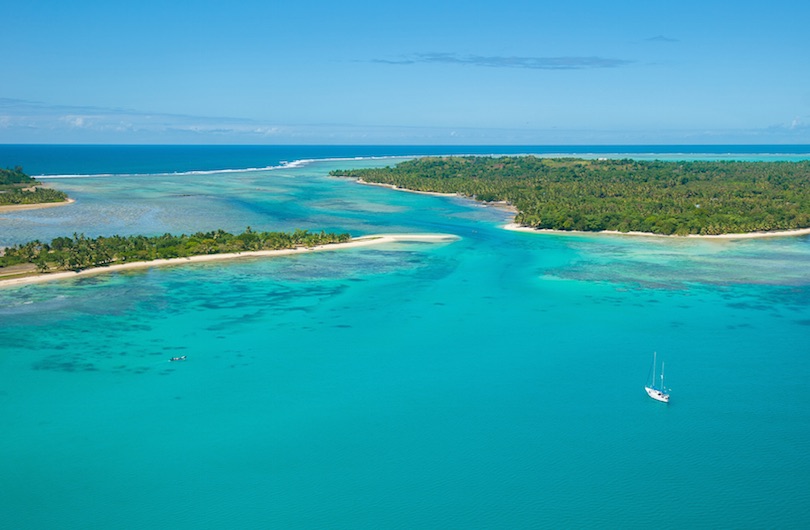
Sometimes referred to as Nosy Boraha, Ile Sainte Marie, is a stunning tropical paradise on the northeastern coast.
An idyllic island, it offers a fabulous blend of stunning beaches, crystal-clear waters, and a rich maritime history for visitors to enjoy.
Perfect for those wanting a tranquil escape from the mainland, its pristine white sandy beaches and swaying palm trees provide an excellent relaxing backdrop.
The island is a popular snorkeling, diving, and whale-watching destination. It is also steeped in history, as it was a notorious pirate haven in the past.
Exploring the remnants of pirate cemeteries and fortifications adds a touch of adventure to your visit. While the charming villages, where you can experience traditional customs and sample delicious seafood cuisine, provide a fabulous insight into the local Malagasy culture.
3. Avenue of the Baobab
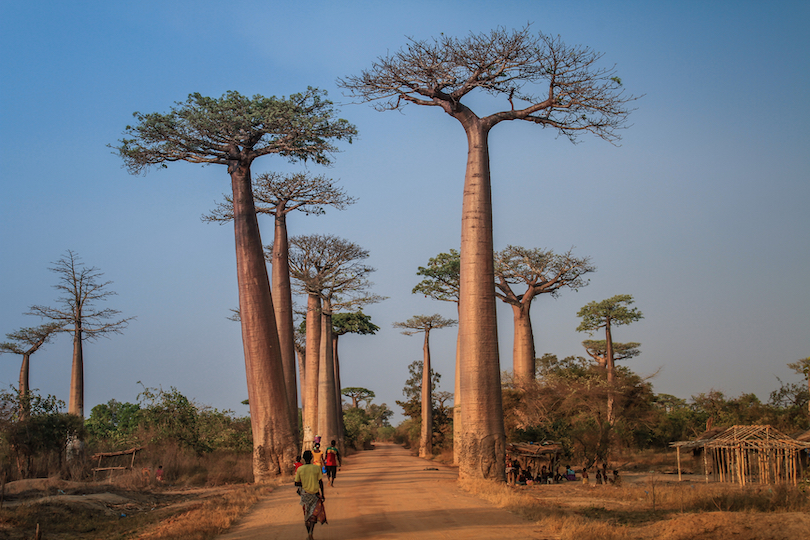
The Avenue of the Baobab, located near Morondava in western Madagascar, is a picturesque and iconic destination showcasing the country’s unique baobab trees.
This stunning stretch of road is lined with majestic baobabs, creating a magical and ethereal atmosphere as you traverse it.
Blessing tourists with a mesmerizing experience, it is especially noteworthy during sunrise or sunset when the warm light bathes the trees in a golden glow. At this time, make sure you have your cameras ready. The towering baobabs’ distinctive silhouettes make for incredible photo opportunities and an unforgettable sight.
The avenue is also a gathering place for locals, who sell local handicrafts and fresh fruits along the road. It provides another glimpse into the local culture and an opportunity to interact with the friendly Malagasy people.
2. Tsingy de Bemaraha Reserve
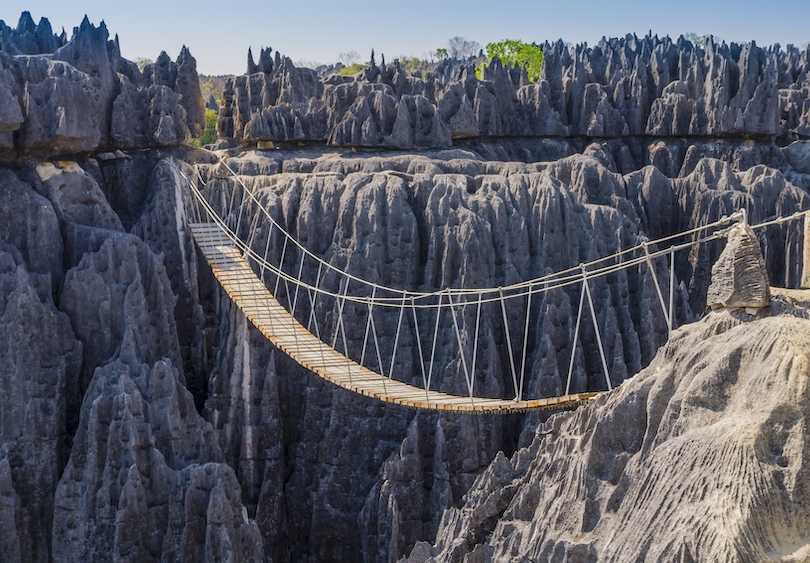
If you want to visit somewhere with a wow factor, head to the Tsingy de Bemaraha Reserve. Located in western Madagascar, it offers a once-in-a-lifetime journey into a world of geological wonders and ecological diversity.
What makes the reserve such an appealing destination to visit is its unique karst limestone formations. They create an otherworldly landscape of towering pinnacles, deep canyons, and intricate stone forests that must be seen to be believed.
If you visit the reserve, you can explore its rugged terrain through trails and suspension bridges. They enable you to admire the vast expanse of limestone needles, navigate narrow paths, and marvel at the spectacular scenery.
For those with a naturally adventurous spirit, there are exciting opportunities for rock climbing and caving within the reserve.
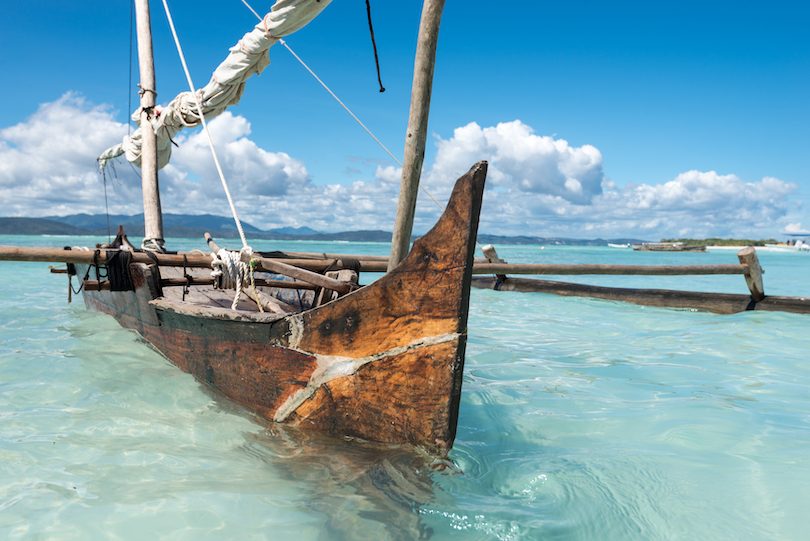
Nosy Be is the perfect destination for those wanting a tropical escape, combining natural beauty with warm hospitality and a relaxed island atmosphere.
Set just off the northwest coast of Madagascar, this tropical paradise possesses stunning beaches, sparkling turquoise waters, and lush forests.
Sunbathing, swimming and relaxing should be high on the agenda here. However, if you enjoy scuba diving and snorkeling, the surrounding coral reefs are home to a vibrant underwater world. You can expect to see colorful fish, sea turtles, and even dolphins.
The island is also renowned for its aromatic spices, particularly ylang-ylang and vanilla. Whilst there, you can visit several plantations to learn about the production processes and enjoy the delicious scents and flavors they produce.
Map of Things to do in Madagascar
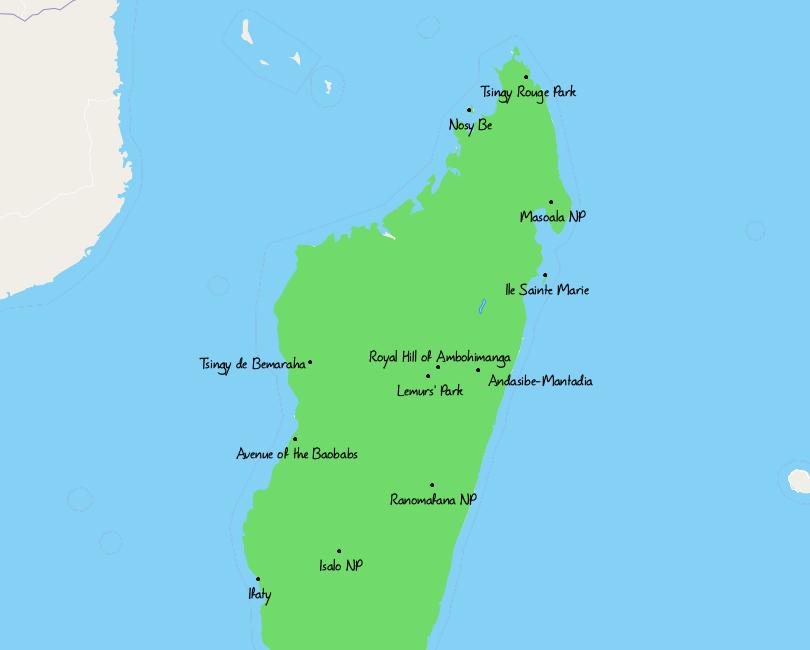
Share this post:
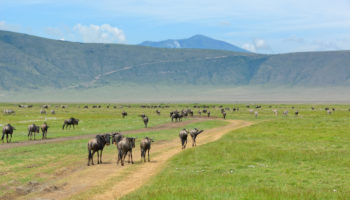
10 Best Countries to Visit in Africa
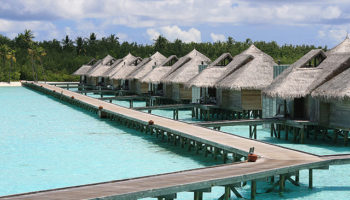
10 Best Luxury Resorts in the Maldives
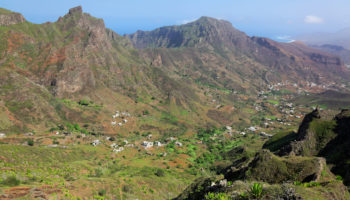
10 Best Cape Verde Islands
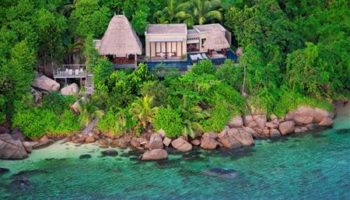
10 Best Seychelles Luxury Resorts
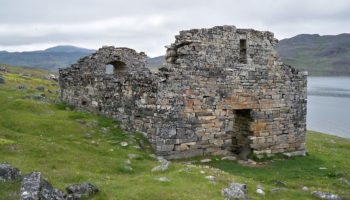
Discover the Hvalsey Church in Greenland
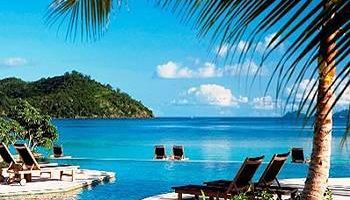
10 Best All Inclusive Resorts in Fiji
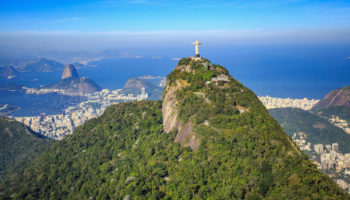
21 Best Places to Visit in South America
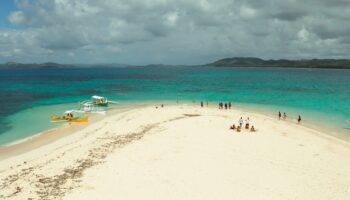
23 Most Beautiful Islands in Asia
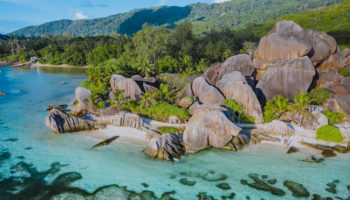
15 Best Things to Do in the Seychelles
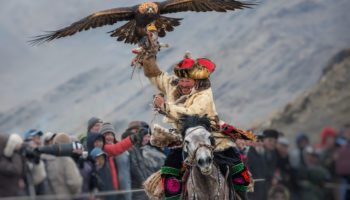
15 Best Things to Do in Mongolia
Reader interactions.
August 14, 2020 at 7:23 am
I’m not sure, but if that Royal Hill of Ambohimanga is the one in Antananarivo, then it got burned down/destroyed a couple of years back. I remember there being lots of blood everywhere because the people made lots of sacrifices in order to appease the ancestors due to the house of the king being destroyed. It still looks okay, but it definitely isn’t majestic anymore. Just normal ruins and a good place to play hide and seek.
May 2, 2016 at 6:21 am
Those are rather the mass tourism destinations of Madagascar. The big Island has much more to offer including some nature hotspots rarely visited. Madagascar has still to be explored
May 26, 2015 at 6:33 am
I’m planning my trip there, thanks for this list ! However it seems like a big country… two weeks will be too short to visit it.
April 29, 2015 at 9:21 am
I have never been, but Madagascar sounds like one of the best places to go! Thanks for a great description of the attractions. I am sure looking forward to go one day!! 🙂
March 9, 2015 at 8:53 pm
Thank you for spreading the beauty of Madagascar. I’m originally from Madagascar, but I have never visited any of these wonderful places.
August 29, 2013 at 9:10 am
Great list. Madagascar was one of my favourite countries. I haven’t been to all the parks you mentioned but I think though that Ankarana and Amber mountain up the north could have made it. I think Ankarana was my favourite out of the 7 or 8 I went to. It seemed to have everything but I suppose a lot of it depends on luck and weather as to what you see.
Leave a Reply Cancel reply
Your email address will not be published. Required fields are marked *
This site uses Akismet to reduce spam. Learn how your comment data is processed .
Madagascar Travel Guide
Courtesy of Pierre-Yves Babelon | Getty Images

10 Best Things To Do in Madagascar
Updated February 12, 2021
Madagascar appeals to both animal lovers and outdoor enthusiasts. At national parks like Lokobe , Mantadia and Isalo , visitors can come face-to-face with creatures like lemurs, birds, chameleons and snakes, plus an array of trees and plants. Towering
- All Things To Do

Tsingy de Bemaraha Strict Nature Reserve Tsingy de Bemaraha Strict Nature Reserve
Situated along Madagascar's west coast, Tsingy de Bemaraha Strict Nature Reserve is home to impressive geological structures and a variety of endangered species. More than 328 miles of forests make up this UNESCO World Heritage site, where 11 kinds of lemurs, 17 types of reptiles, 6 bird species and more reside. But the standout here is the park's towering gray limestone pinnacles, which stand up to 328 feet tall.
Past visitors said Tsingy de Bemaraha Strict Nature Reserve is a "must-see adventure" that's "definitely worth the drive." Although the locale can be a bit challenging to traverse – some former travelers reported crawling through tight gaps and lots of climbing – many described the views from the top of the pinnacles as "spectacular."

Avenue of the Baobabs Avenue of the Baobabs free
As its name suggests, the 853-foot-long Avenue of the Baobabs is a stretch of giant baobab trees believed to be up to 800 years old. Though the avenue is situated roughly 405 miles away from Antananarivo, it offers close proximity to Kirindy Mitea National Park, which sits along Madagascar's west coast.
According to recent travelers, the Avenue of the Baobabs is one of the country's best places to snap photos, especially at sunrise and sunset. But remember, these are the avenue's peak visiting hours, so arrive early. Visitors recommend paying for a guide's services, or you can opt for a multiday tour by local companies like Intrepid Travel and G Adventures . Itineraries vary by tour, but expect to spend at least an hour on-site. Tour fees start at $1,140 per person. If you're sticking to a tight budget, consider driving yourself or flying into Morondava Airport (which sits less than 10 miles away from the attraction) – accessible from Antananarivo's Ivato International Airport.

Mantadia National Park (Parc National Mantadia) Mantadia National Park (Parc National Mantadia)
One of Madagascar's most convenient parks to explore is Mantadia National Park. Located about 100 miles east of the capital city of Antananarivo, Mantadia National Park is home to 14 species of lemurs, plus 117 types of birds and 84 kinds of amphibians. Plant enthusiasts will also find plenty to admire here. More than 1,200 plant species grow in this lush park, 120 of which are orchids.
Past travelers enjoyed wandering along Mantadia National Park's five trails, adding that each path and stairway was well-maintained. What's more, several said this protected area is a must-see if you love lemurs and recommend hiring a local guide for a fee at the park's reception counter. Each local guide is an experienced spotter, meaning you'll increase your chances of seeing an array of animals.

Popular Tours

Two days wildlife tour to Andasibe NP
(6 reviews)
from $ 340.03

Madagascar Wildlife Tour for 02 days
(7 reviews)
from $ 647.15

Lemur Day Tour at Andasibe Rainforest and Vakona Lodge Reserve
(15 reviews)
from $ 299.00

Lokobe National Park (Parc National Lokobe) Lokobe National Park (Parc National Lokobe)
If your idea of a Madagascar getaway consists of hiking through a tropical forest and observing lemurs in the wild, then you must visit Lokobe National Park. Situated on the southeastern tip of Nosy Be, an island off Madagascar's west coast that's known for its picturesque beaches and sunsets, Lokobe National Park is one of the Sambirano region's only remaining forests. The park can only be accessed by motorized, canoe-like boats called pirogues , adding to its tranquil, unspoiled atmosphere.
Although some recent visitors cautioned that getting to the park and exploring it can be quite exhausting, most raved about its beauty and wildlife. You'll have the chance to spot three lemur species here, as well as multiple kinds of amphibians and reptiles. Highlights for past travelers included watching boa constrictors slither in the trees, seeing chameleons blend in with their surroundings and feeding lemurs bananas. Since you'll be trekking through wild terrain, remember to wear comfortable sneakers, as well as long-sleeved clothing and bug spray to protect yourself from mosquitoes.

The Three Bays (Les Trois Baies) The Three Bays (Les Trois Baies) free
If you want to take in water vistas without trekking offshore to islands like Nosy Sakatia or Nosy Be, head to The Three Bays. Made up of three bays – Sakalava, Pigeon and Dune – this area features pristine beaches where activities like swimming, hiking, windsurfing and kitesurfing can be enjoyed. You'll also have ample opportunities to take jaw-dropping photos here.
Visitors rave about The Three Bays' beautiful setting, adding that the kitesurfing conditions at Sakalava Bay are superb. The area is also easy to reach by car since it's just 10 miles northeast of Antsiranana. For those who'd rather explore The Three Bays on a quad bike, Diego Raid offers four-wheel drive tours for $21 per person (or $120 per vehicle).

Anja Community Reserve Anja Community Reserve
Although Madagascar offers several places to spot lemurs, one of its more unique animal locales is Anja Community Reserve. Located about 41 miles southwest of Fianarantsoa along National Road No. 7, this environmental and cultural preservation site strives to protect local flora and fauna within an inhabited area. Ring-tailed lemurs, chameleons, snakes and more live here, and the reserve's surrounding granite mountains feature two hiking trails, various caves and a campsite with water, restrooms and a shower area.
Past travelers enjoyed checking out Anja Community Reserve on foot, saying they saw multiple lemurs during their visits. Many also raved about the easier Small Circuit Loop, which takes about two hours to complete. For a more challenging hike, consider trekking the six-hour-long Large Circuit Loop. If you decide to stay overnight, remember to bring camping equipment since it is not available at the campsite.

Isalo National Park (Parc National Isalo) Isalo National Park (Parc National Isalo)
Isalo National Park woos visitors with its vertical rock walls, lush vegetation and picturesque waterfalls. Throughout this tropical paradise, travelers can hunt for reptiles and primates – there are more than 50 species living here – while strolling along 10 walking, hiking and bike trails. Some paths even lead to natural swimming pools, where you can cool off while taking in your surroundings.
Previous visitors had mixed feelings about Isalo National Park. While some described it as Madagascar's best national park, others felt it was too expensive. But if you can pay the park's 65,000 Malagasy ariary ($20) entrance fee and roughly 4,000 to 113,000 Malagasy ariary (or $1 to $36) to explore one of its paths during a guided tour, past travelers said you'll be rewarded with "stunning" views of an "incredibly beautiful" area.

Tsingy Rouge Park Tsingy Rouge Park
Although this attraction in northern Madagascar is a bit removed from the main roads, Tsingy Rouge Park's dramatic landscape cannot be missed. Featuring tall clay-like rock formations created by landslides and mudslides, this area's red rocks are often compared to the larger ones found at Utah's Bryce Canyon National Park.
You'll need a four-wheel drive vehicle to get to this natural wonder, but recent travelers recommend making the trek. If you don't rent a car while in Madagascar, you can take one of several organized tours to the site; rates start at $168 per day, excluding lodging and meals. Tour operators that visit Tsingy Rouge Park include Soa Tours and Visit Mada Tours . Since the terrain is rough in this park, be sure to wear comfortable walking shoes.

Hiking Tours Madagascar
(4 reviews)
from $ 2127.92

The National Route 7, 7 days throughout the landscapes and National Parks
from $ 795.23

Madagascar 7 Days Baobabs and Lemurs Tour
(5 reviews)
from $ 1436.89

Nosy Sakatia Nosy Sakatia free
When you're in need of a break from Madagascar's parks and forests, head to the quaint island of Nosy Sakatia. This tropical oasis – which measures just 1 square mile – boasts an array of orchids but is best known for its water sports activities. Everything from sailing to fishing to snorkeling and diving is offered here, and you can even spend a night or two at one of the island's hotels .
Past visitors loved scuba diving and snorkeling in Nosy Sakatia's waters during half-day excursions. Many, in fact, saw sea turtles grazing in shallow areas. However, a few travelers were less than impressed with the island's beaches and desired more things to do on shore. If you do decide to visit Nosy Sakatia, consider booking a half- or full-day tour through companies like City Discovery and Les Baleines Rand'eau . Tour rates start at $50 per person and generally include snorkeling equipment rentals and lunch.

Lemurs' Park Lemurs' Park
Although you'll have ample opportunities to spot lemurs in national parks like Mantadia and Lokobe , for even more chances to see these furry creatures, travel 16 miles southwest of Antananarivo to Lemurs' Park. This private, 12-acre reserve houses nine lemur species, as well as various lizards and birds and 70-plus types of plants. In addition to welcoming tourists, the park works with other Malagasy reserves to rehabilitate and breed lemurs.
Travelers say Lemurs' Park is a great place to see lemurs without venturing far from Antananarivo. Though you won't be allowed to touch the lemurs, the property's animals move freely around the park, so one may try touching you. Many also rave about the attraction's well-maintained facilities and knowledgeable guides.

Explore More of Madagascar

Best Hotels

When To Visit
If you make a purchase from our site, we may earn a commission. This does not affect the quality or independence of our editorial content.
Recommended
The 18 Best Napa Valley Wineries to Visit in 2024
Lyn Mettler|Sharael Kolberg April 23, 2024

The 25 Best Beaches on the East Coast for 2024
Timothy J. Forster|Sharael Kolberg April 19, 2024

The 50 Best Hotels in the USA 2024
Christina Maggitas February 6, 2024

The 32 Most Famous Landmarks in the World
Gwen Pratesi|Timothy J. Forster February 1, 2024

9 Top All-Inclusive Resorts in Florida for 2024
Gwen Pratesi|Amanda Norcross January 5, 2024

24 Top All-Inclusive Resorts in the U.S. for 2024
Erin Evans January 4, 2024

26 Top Adults-Only All-Inclusive Resorts for 2024
Zach Watson December 28, 2023

Solo Vacations: The 36 Best Places to Travel Alone in 2024
Lyn Mettler|Erin Vasta December 22, 2023

26 Cheap Beach Vacations for Travelers on a Budget
Kyle McCarthy|Sharael Kolberg December 4, 2023

The 50 Most Beautiful White Sand Beaches in the World
Holly Johnson December 1, 2023


Home » Travel Guides » Madagascar » 15 Best Places to Visit in Madagascar
15 Best Places to Visit in Madagascar
Ah, Madagascar; just the very mention of the name evokes images of the exotic and the tropical. A land of colossal, bulbous baobab trees from centuries gone by, of bug-eyed lemurs and of swinging indri indris, it’s got all the elegance of a onetime French colony; all the wildernesses of East Africa; all the warmth and sparkling sands of the Indian Ocean; all the traditions of a place disconnected and alone and steeped in tribal histories.
The huge island – the fourth biggest in the world, in fact – is a magnet for a whole host of different travelers. Beach lovers can flock to the shining shores of the west coast to snorkel with rays and spot whales. Adventurers can take to the jungle paths, or rattle in the cages of 4X4s to far-flung rainforests in the hills. History buffs can see UNESCO spots that showcase the regal past of the native islanders. Yep, there really is something for everyone in this jewel of the south!
Lets explore the best places to visit in Madagascar :

A single name for a duo of resorts, Ifaty (and its bigger brother of Mangily, also now confusingly referred to as just Ifaty too) is a stretch of sun-kissed onetime fishing villages on the south-western edge of Madagascar island.
Famed for their luxurious hotel resorts and wide beaches of shining yellow sand, they draw some of the biggest crowds in the country.
Most come for the rigmarole of sun, sea, sand and world-class snorkelling that’s offered by the Indian Ocean, while others head in to enjoy catamaran tours on the Mozambique Channel, sample uber-fresh fish curries and encounter the traditional reed villages of the coastal folk.

Just a short hop, skip and a jump across the Indian Ocean waters from the town of Ambanja, gorgeous little Nosy Be is the place to go for Madagascar’s trademark beaches.
Shining in hues of alabaster white in the coves and inlets that ring the shoreline here, they pop up beautifully around little fishing villages like Ambatoloaka, or come dotted with groups of swaying palm trees at Ambondrona.
There are beach parties too, erupting each Sunday along the sands of Madirokely.
And, Nosy Be’s popularity notwithstanding, there are chances for real seclusion to boot – just check out the far-flung islet of Orangea, languishing out at sea from the north-west coast.
3. Nosy Mangabe

Nestled deep between the coastal hills of Helodrano Antongila Bay, which carves its way inland on the north-eastern edge of Madagascar, the small island come nature reserve of Nosy Mangabe is a real must for any wildlife lovers heading to these parts.
Famed for its booming populations of bug-eyed aye-aye lemurs, the spot is a picture of tropical perfection.
Huge fig trees wrangle around groves of palms, ruffed lemurs meet mantella frogs in the undergrowth, and the green hills crash down into secluded bays of bright yellow sand.
Boats to the island and all the necessary permits are available in Maroantsetra; the closest town on the mainland.
4. Tsingy de Bemaraha

A truly dramatic landscape of carved rocks and towering hoodoos, needle-like stone spires and colossal monoliths balanced tenuously atop cliffs, the Tsingy de Bemaraha is one of Madagascar’s most curious natural treasures.
It can be found amidst the long green belt of nature reserves on the west coast, displaying its rugged karst landscapes where the inland highlands give way to the verdant hills closer to the shore.
Today it’s also a UNESCO World Heritage Site; one tagged for its great biodiversity of dry deciduous forests, rare rock habitats, and the photogenic nature of the sweeping plateau within.
5. Ranomafana National Park

The natural jewel of Fianarantsoa and the home of Madagascar’s famous golden bamboo lemur, Ranomafana National Park draws thousands of people each year to its forest-clad reaches in the heart of the island’s eastern haunch.
Sweeping down from misty montane forests to lowland plains, the territory is crisscrossed by mile upon mile of hiking track, carved out by roaring waterfalls and peppered with multi-coloured lizards.
A word of warning: Ranomafana’s biggest draws lie deep between the mountains and forests, so be sure to bring sturdy boots and strong legs for this one!
6. Isalo National Park

The patchwork of carved rock gorges and winding canyons, blooming oases and palm groves that is the beautiful Isalo National Park can be reached after just a short trip out of either Toliara and Ihosy.
Designated a protected area way back in 1962, this one’s extreme biodiversity and unique natural makeup are instantly recognisable.
Visitors come to wonder at the windswept runiforme mountains and walk beneath towers of stacked stone.
They come to see the rare crested ibis and meet ring-tailed lemurs in the wild.
There are also more than 80 species of endemic birds to spot, along with the famous Canyon of Monkeys, with its dextrous sifakas inhabitants.
7. Antananarivo

Set more than 1,400 meters up in the very highland heart of the nation, the capital of Antananarivo comes brushed with chilly mountain breezes for most of the year.
But those winds might just be the only cool thing about the cityscape, which today pulses with tooting traffic and shouting marketplaces.
The old heart of the city still displays some traces of French colonialism, with its elegant – if age-stained – Parisian mansions cascading down a hillside in the midst of the town.
There are old Malagasy palaces to explore too, along with the famous Croc Farm, and oodles of spice-scented curry houses to boot.
8. Andasibe-Mantadia

Within striking distance for day trippers from the capital, Andasibe-Mantadia is one of Madagacar’s most accessible national parks.
It covers a vast swathe of verdant primeval rainforest, clocking up a whopping territory of more than 150 square kilometers in total.
Spread over two separate areas, from the sprawling de Mantadia Reserve to the d’Analamazaotra Special Reserve, the whole area showcases a breathtaking array of biodiversity.
There are inland crabs crawling through the forests, swinging diademed sifakas and even fluffy indri monkeys to see.
Andasibe-Mantadia has oodles of hiking paths that offer treks between one and six hours.
9. Ambohimanga

Ambohimanga is a place deeply entwined with Malagasy national identity.
Also called, simply, Royal Hill, it was the onetime home of the local kings.
Expanded and added to throughout the 1800s, the mound of palaces and burial grounds, crumbling fortifications and regal tombs, was the kingpin of one of Madagascar’s four quadrants, and the place from which King Andrianampoinimerina launched his now-famed campaigns to re-unify Imerina following more than seven decades of civil war in the 18th century.
Today, visitors can come on a day trip from the capital to tour the UNESCO spot, spying out the kingly court rooms and exquisite timber and stone rova (settlement) architecture.
10. Zahamena National Park

Draped in rainclouds and mist, clad in rolling canopies of emerald green, and hidden between the rising peaks on Madagascar’s eastern edge, the famous jewel of the rainforests of the Atsinanana comes in the form of the Zahamena National Park.
One of the hardest protected areas in the country to get to, this area of just over 400 square kilometers is home to one of the most eclectic arrays of bird life.
Yep, red owls and serpent eagles cruise through the waxy boughs and fern forests, meeting the white-eyed indri indri, dwarf lemurs and other curious simian life.
Bed down in nearby Vavatenina or Ambatondrazaka for the best access to these wilds.
11. Maroantsetra

The favoured gateway to the Masoala National Park and the aforementioned wilds of Nosy Mangabe, age-old Maroantsetra makes its home right at the end of the great Bay of Antongil in north-east Madagascar.
An earthy and interesting town, it’s laden with one throbbing marketplace that’s packed with sweet-smelling fruits and multi-coloured vegetables, and has crisscrossing streets of mud lined with tin-shack lean-tos.
It’s also the place where the meanders of the Antainambalana River finally meet the Indian Ocean, giving the spot a laid-back riparian charm to boot.
12. Ile Sainte Marie

The Ile Sainte Marie is an elongated finger of land that stretches along the eastern edge of Madagascar, just across the whale-peppered waters of the Baie de Tintingue.
The stuff of travel brochures and tropical postcards, it’s one of the most handsome enclaves of the country for sure.
Most travelers will alight between the rickety jetties of Ambodifotatra, before breaking out to the secluded coves and beaches to the north and south.
These tend to be powdered yellow sands dotted with big boulders and fringed with coconut palms, complete with the occasional resort hotel hiding between the mangroves.
Also, don’t miss the pirate history, which is best seen at the old buccaneer cemetery!
13. Morondava

Sandwiched between the sandy beaches of the Kirindy Mitea National Park to the south and the spreading delta lands of the Andranomena Reserve to the north, it’s clear from the get-go that Morondava’s real pulls lie out of town.
That doesn’t mean the center isn’t worth bedding down in – this seaside spot has some pretty little timber homes and earthy guesthouses, along with a great backpacker vibe.
The piece de resistance is undisputed though.
That honour goes to the revered Avenue of the Baobabs, which erupts in a medley of hulking trunks along the roadway to Belon’i Tsiribihina nearby – simply not to be missed!
14. Masoala National Park

Falanoucs, leaf-tailed geckos and rare lemurs all coalesce between the vast 2,300-sqaure-kilometers of land that is the Masoala National Park.
Jutting out into the Indian Ocean in a mosaic of thick rainforests that cascade down to the crashing rollers of the sea from the cliffs of the Sava Region, it’s one of the largest and most hotly protected places in the nation.
Illegal logging here has been a huge problem, even in recent years, but a UNESCO designation and increased eco-tourism is only set to improve matters.
Today, visitors can come to walk along the famous Cap Est and Alohatrozana trails, to see the virgin forests that dress the shore along its whole length.
15. Antsirabe

Perched high up in the Madagascan highlands and soothed by the cool winds of the mountains, Antsirabe was an obvious choice for the French colonials who came here by the boatload during the heyday of colonialism.
In their wake they built elegant Parisian-style mansions, raised Gothic cathedrals and laid wide boulevards with plane trees casting shade.
They also tapped the healing and relaxation powers of the nearby hot springs, which are still one of the main attractions in the city.
Hop aboard a local pousse-pousse (rickshaw) and check off the sites downtown, before heading to the Ranomafana baths to unwind in the natural waters.
15 Best Places to Visit in Madagascar:
- Nosy Mangabe
- Tsingy de Bemaraha
- Ranomafana National Park
- Isalo National Park
- Antananarivo
- Andasibe-Mantadia
- Ambohimanga
- Zahamena National Park
- Maroantsetra
- Ile Sainte Marie
- Masoala National Park
Must-see attractions in Madagascar

Allée des Baobabs
Western Madagascar
One of Madagascar's most recognisable images, this small stretch of the RN8 between Morondava and Belo-sur-Tsiribihina is flanked on both sides by…
Musée de la Photo
Antananarivo
Opened in early 2018, this fabulous photography museum is Antananarivo's best museum. There are four small rooms showing films (in French, English or…
Parc National Isalo
Southern Madagascar
Isalo is one of Madagascar's most beautiful parks. It contains sculpted buttes, vertical rock walls and, best of all, deep canyon floors shot through with…
Parc National Bemaraha
If you visit one place in western Madagascar, make it Parc National Bemaraha. A Unesco World Heritage Site, its highlights are the jagged, limestone…
Poised atop Ambohimanga hill is the Rova, the fortress-palace. The walls of the compounds were constructed using cement made from sand, shells and egg…
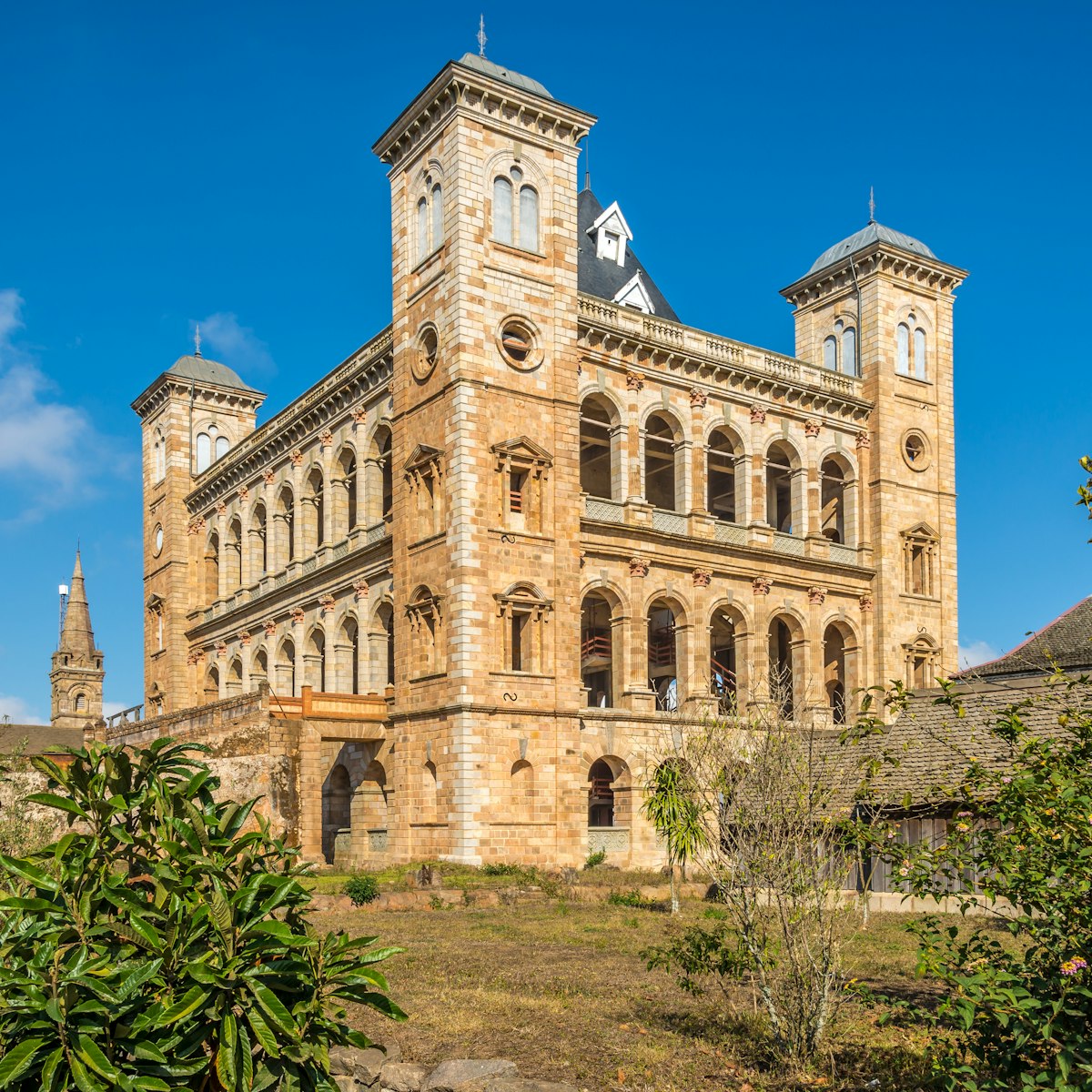
Tana’s rova (fortified palace), known as Manjakamiadana (A Fine Place to Rule), is the imposing structure that crowns the city's highest hill. Gutted in a…
Parc National Masoala-Nosy Mangabe
Eastern Madagascar
This 2100-sq-km national park contains one of the best primary rainforests in the country. It is famous for its vegetation, which includes rare hardwoods,…
Parc National Analamazaotra
This is the most popular park within Parc National Andasibe Mantadia. The real draw of this reserve is the rare indri, Madagascar’s largest lemur, whose…
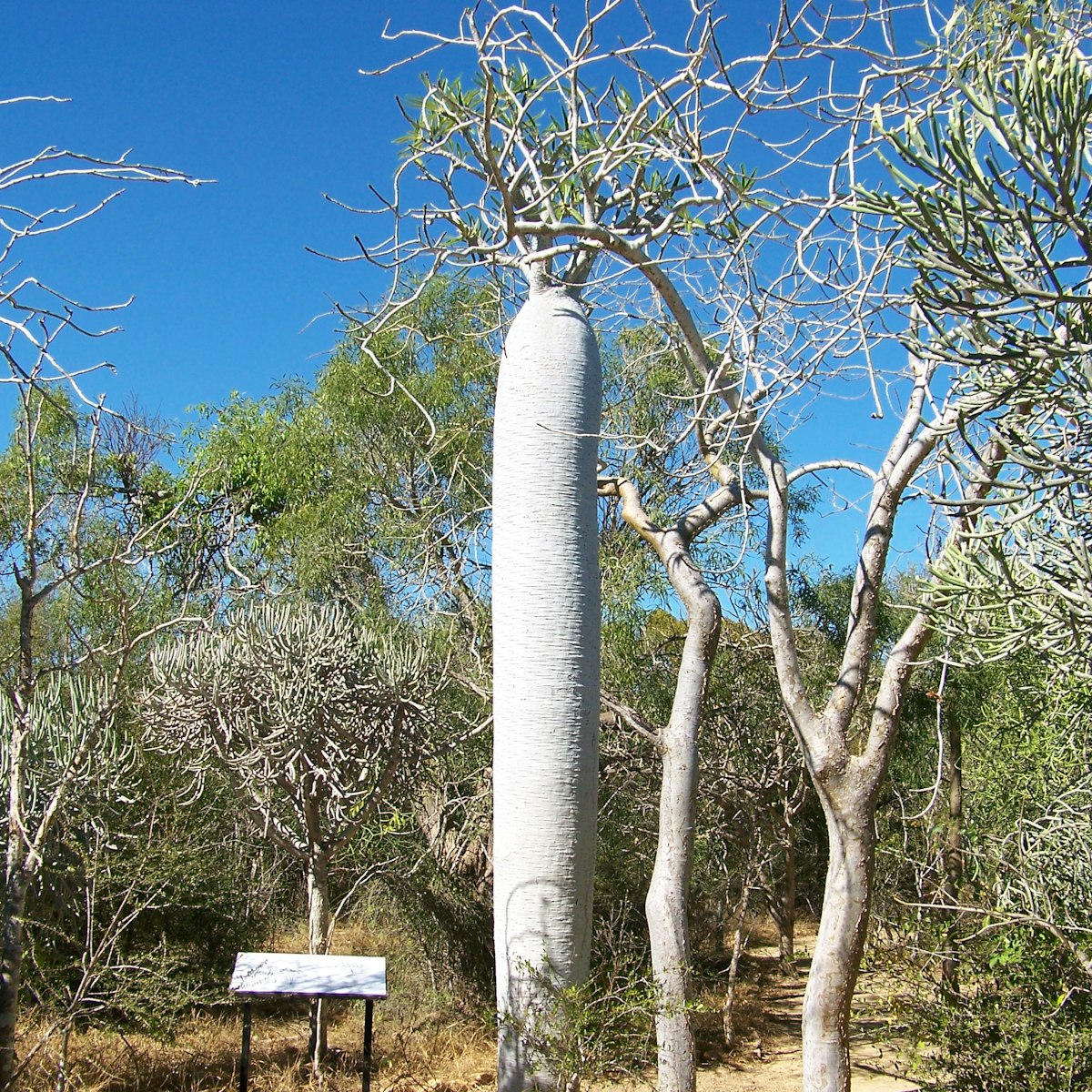
Arboretum d'Antsokay
The Great Reef
This is the one must-see attraction in Tuléar. Essentially a 400,000-sq-metre distillation of the entire spiny forest in one place, it's a fantastic…
Nosy Mangabe
Part of Parc National Masoala-Nosy Mangabe, this thickly forested and mountainous tropical island is one of the crown jewels of the Antongil Bay. With…
Parc National Mantadia
Part of the Parc National Andasibe Mantadia, this park is about 17km north of Andasibe. Created primarily to protect the indri, Mantadia also hosts the…
Réserve d'Anja
This 370,000-sq-metre reserve encompasses three mountain-size granite boulders (the three sisters) ringed at the base by a forest full of ring-tailed…
Parc National Andohahela
This 760-sq-km park protects some of the last remnants of rainforest in southern Madagascar, as well as spiny forest and a remarkable 12 species of lemurs…
Parc National Ranomafana
The Parc National Ranomafana is a steamy hothouse of jungle bio-diversity where the hum of insects of is ever present and the wail and squeal of a dozen…
Haute-Ville
The oldest and most attractive part of town is the pedestrian Haute-Ville (known as Tanana Ambony in Malagasy). Utterly removed from the hustle of the…
Parc National Andringitra
Parc National Andringitra is the pièce de résistance of the wider Massif de l'Andringitra. It encompasses a high-altitude granite plateaux of epic beauty,…
Domaine de la Cascade
This gorgeous park, about 9km from the Total station on the road to Ambovombe from Fort Dauphin (Taolagnaro), covers 136 hectares, and with a budding…
Cirque Rouge
Dramatic Cirque Rouge is one of western Madagascar’s most famous sights. This amphitheatre of eroded rock is tinted in a rainbow hue of colours, including…
Réserve Forestière de Kirindy
This reserve, 60km northeast of Morondava, covers about 12,500 hectares and is a protected area that's popular with scientists and travellers for its…
Piscines Naturelles d'Ambodiatafana
Île Sainte Marie
In the north of Sainte Marie, near Ambodiatafana village, these natural pools are separated from the Indian Ocean by a granitic gate of about 100m. During…
Chez Mamy Miniatures
For 30 years this family workshop has been creating miniature objects (cars, rickshaws, bicycles etc) made from recycled materials – anything from…
Maison Blanche
No stay on the island would be complete without a sundowner at Maison Blanche: this atypical house has a rooftop terrace with 360-degree views of the…
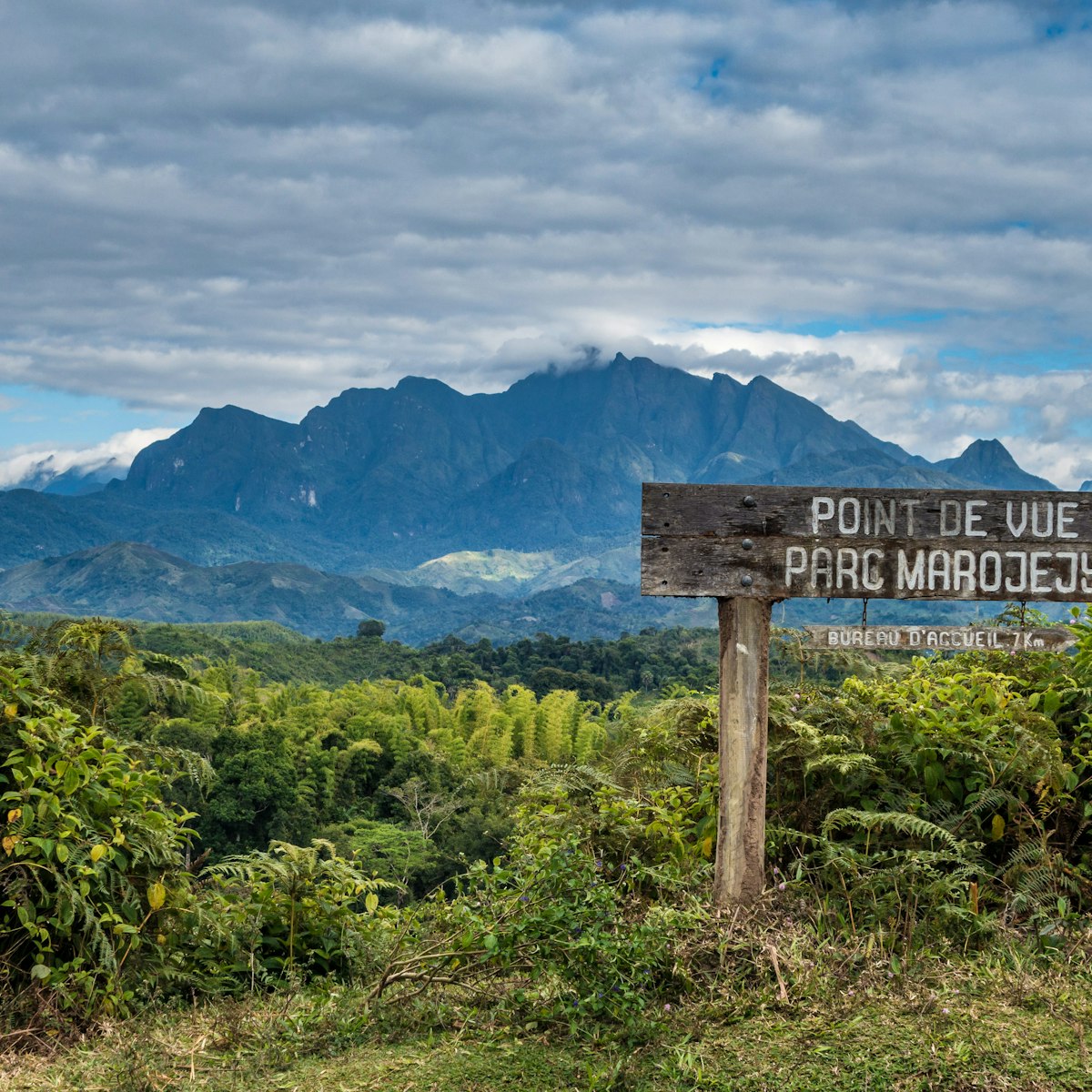
Parc National Marojejy
Northern Madagascar
This is one of Madagascar’s flagship parks. Consisting of more than 550 sq km of pristine mountainous rainforest, it covers the Marojejy massif, an area…
Far and away Nosy Be’s best beach, Andilana, at the island’s northwest tip, is a long stretch of pearly white sand, with water that’s true azure and clear…
Réserve Spéciale Anjanaharibe-Sud
Réserve Spéciale Anjanaharibe Sud
A place of outstanding beauty and solitude, this little-visited 286-sq-km reserve is the northernmost outpost of the black indri. It is also home to the…
Parcs Nationaux Baie de Baly et Tsingy de Namoroka
This isolated park is home to that peculiarly Malagasy landform, the tsingy, a dense forest of jagged rocky pinnacles interwoven with deep canyons filled…
Grottes d'Anjohibe
This series of subterranean rooms and galleries, some of them the size of buildings, are among Madagascar's most impressive. Stretching over 5km, and…
Lemurs' Park
You'll find nine species of lemur at this private reserve, 22km west of the capital. It's a good place to visit if you haven't yet seen lemurs elsewhere,…
Parc National Montagne d’Ambre
This wonderful national park is literally a breath of fresh air from the arid northern plains: at 1000m, it is generally 10°C cooler than Diego or…
Mahay Mitia Ala
The Mahay Mitia Ala (VOIMMA) park, opened in 2011, is managed by a local association to promote biodiversity, conservation and local development. The…
Parc National Marin de Nosy Tanikely
Nosy Tanikely is a protected marine reserve 10km south of Nosy Be. It's one of the best snorkelling sites in the area, with coral, numerous fish and sea…
Camp Andrafiamena Andavakoera
Located 60km south of Diego Suarez, then 20km east, this camp is perched on a ridge overlooking the rainforest. This is the last refuge of the black…
Réserve Spéciale Ankarana
This striking and undeveloped fantasy land is home to uniquely Malagasy sights: psychedelic fields of spiky tsingy (limestone pinnacle formations) next to…
Réserve de Nahampoana
This 0.67-sq-km forest reserve, 7km north of Fort Dauphin (Taolagnaro), deserves much greater recognition. Its exotic tropical setting, with mountains for…
Nosy Iranja
The gorgeous Nosy Iranja, southwest of Nosy Be, consists of two islands: larger, inhabited Nosy Iranja Be (about 2 sq km) and tiny Nosy Iranja Kely (0.13…
Parc National Ankarafantsika
Ankarafantsika (130,026 hectares) is the last strand of dry western deciduous forest in Madagascar. Its excellent wildlife viewing and hiking…
La Fenêtre de l'Isalo
La Fenêtre de l’Isalo is a popular natural rock window that frames the setting sun, although we actually prefer it for the surrounding views of sweeping…
Parc National Zombitse-Vohibasia
Parc National Zombitse-Vohibasia protects one of the last stands of dense dry forest in all of southern Madagascar, a bird-rich island of foliage in the…
Baobab Tree
At the T-junction with Ave de France, there is an enormous baobab tree (circumference, 21m!) thought to be well over 700 years old. It is considered fady …
On a small bay just north of Madirokely, Ambondrona is more tranquil than its southern neighbours, with lovely views of the mainland hills across the sea.
More destinations you need to see
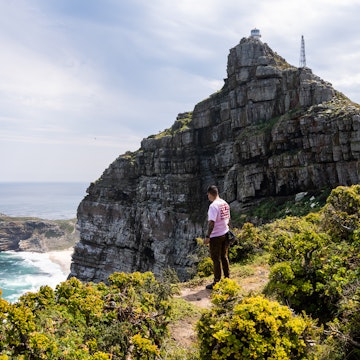
Nomadic Matt's Travel Site
Travel Better, Cheaper, Longer
The Top Things to See and Do in Madagascar
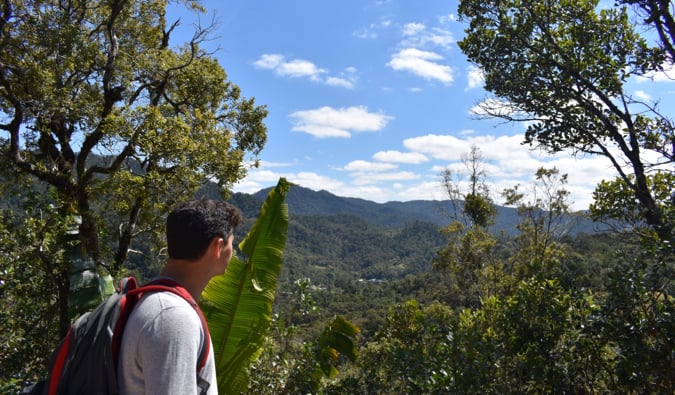
Madagascar , a country famed for lemurs, baobab trees, birding, and jungles, offers visitors a rich playground to explore. I was enthralled by its beauty : the sweeping canyons and gorges, the grand waterfalls, and the sheer diversity of the landscape.
One day you’re in a tropical jungle, the next you’re in an arid plain, and a few hours later you’re in a subtropical forest! Plus, there really are seemingly endless varieties of lemurs.
Though Madagascar is remote and finding cheap flights is tricky, with only 350,000 visitors per year, you get a lot of the country to yourself. (And it’s always better to go to a place sooner rather than later because you never know where the next “it” destination is going to be!)
Though I didn’t get as much time there as I’d like (the roads are terrible; it takes eight hours to go 250 kilometers/155 miles), here are some of the wonders you can expect on your visit!
1. Avenue of the Baobabs
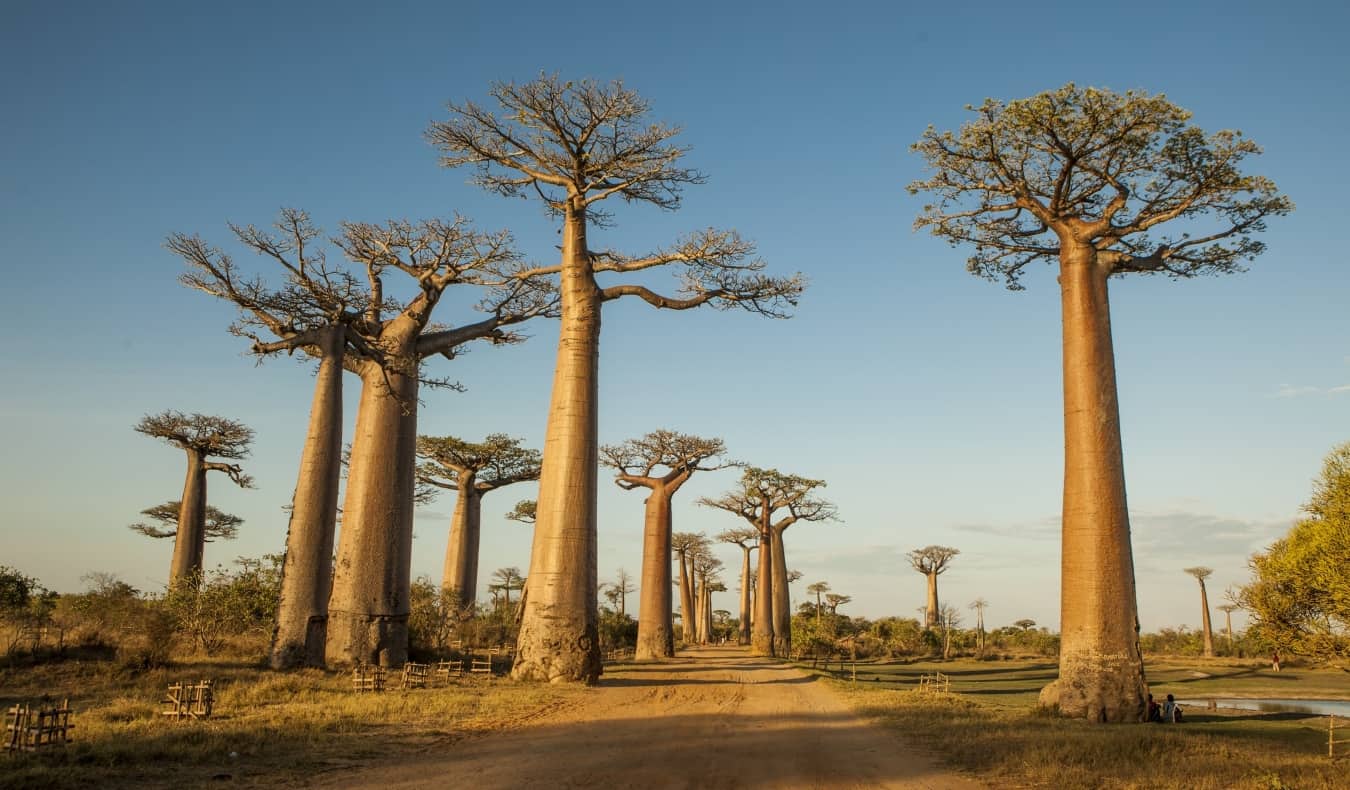
While there are similar trees in the genus, baobabs are completely unique to Madagascar. They’re an impressive sight, especially when your guide casually mentions that the massive one you’re hugging is just a baby — at 400 years old. Unfortunately, the trees are an endangered species due to clearcutting and agriculture.
While the trees can be found throughout the country, this road lined with them (just an hour outside Morondava) — and straight out of a postcard — is one of those iconic images of Madagascar. The best time for photos is during sunrise or sunset. The worst time for crowds? Those same times. Pick your poison.
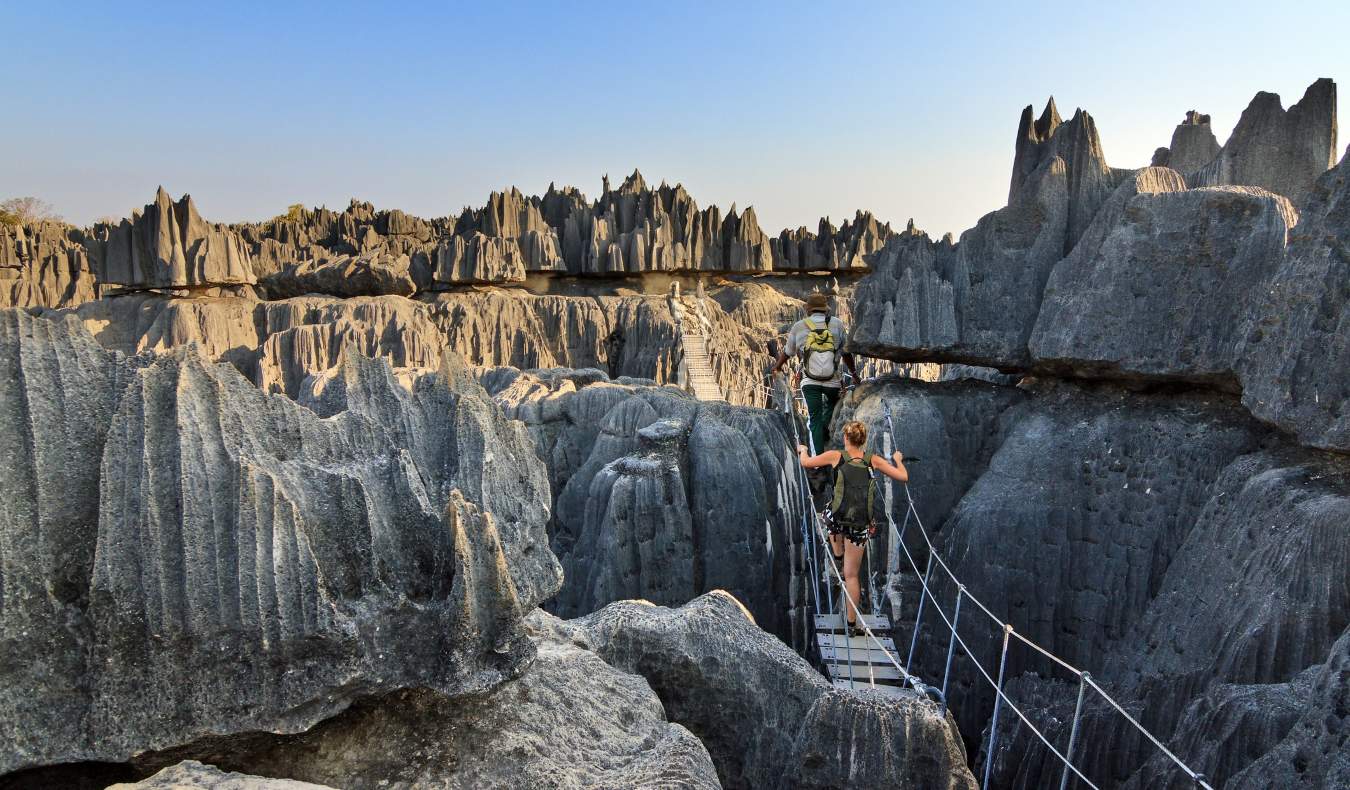
The plus side? It’s one of the most incredible sites in the country.
Water and wind spent over 200 million years carving the limestone into jagged peaks that look like a row of never-ending knives (hence the name Tsingy, which means “where one cannot walk barefoot”). To get around, you use rope bridges, ladders, and fixed cables. The area also has a lot of caving, and often people pair a trip here with a slow boat down the Tsiribihina River (send photos of that if you go, because sadly, due to time, I missed visiting the river).
Note: The park is only open during dry season (April-November) when the roads are passable.
3. Isalo National Park
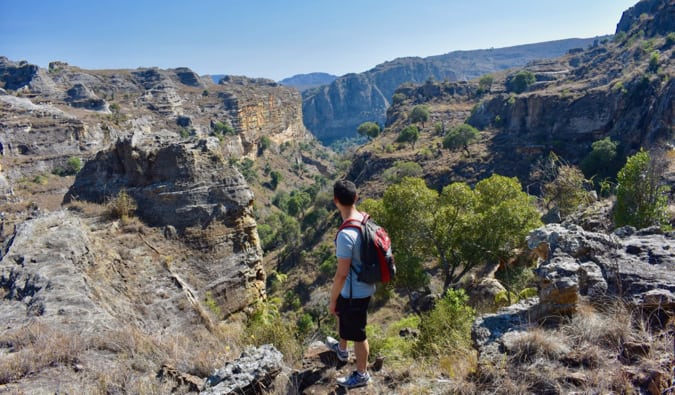
There are three waterfalls you can cool off in after your walks and a variety of lemur species (they get pretty close as they are desensitized to humans, so watch your food!). You are required to hire a guide (they are found at the entrance), but they were great explainers of the land and the local culture.
Added bonus: the clear sky and lack of light pollution make for some incredible sunsets and star-filled nights. I never saw the Milky Way so clearly.
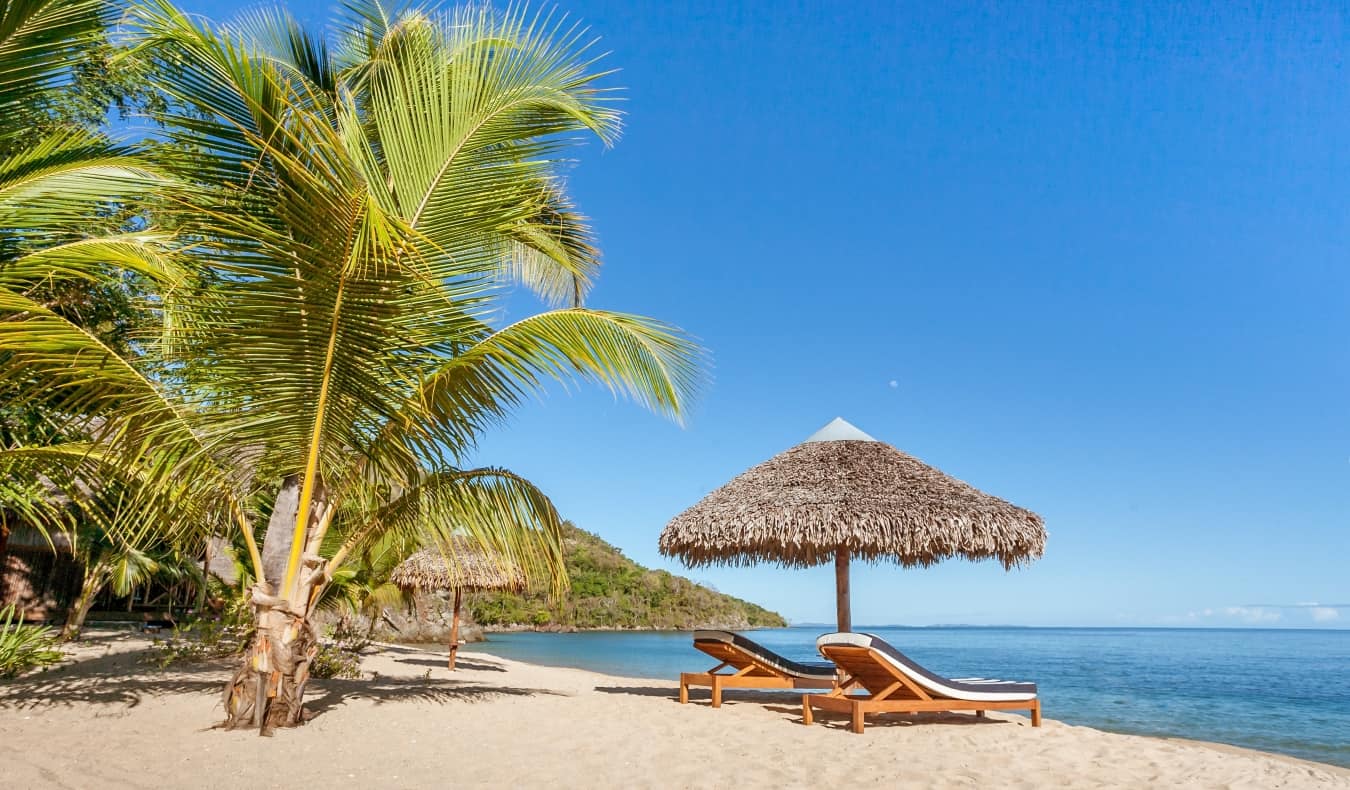
Here you’ll find white-sand beaches and a more upscale, Western environment. There are expensive restaurants, big resorts, and lots of couples and families (which is generally who visits Madagascar). Beach parties erupt each Sunday, and there’s some amazing snorkeling, diving, fishing, and whale watching (the waters around Nosy Be are home to humpback and dwarf fin whales). It’s the quintessential tropical island paradise — with the quintessential cost (but it’s the best beach in the country!).
5. Île Sainte Marie
While everyone goes to Nosy Be for the better beaches and fancier resorts, if you want something a little more local, cheap, and relaxed, check out Île Sainte Marie off the eastern coast.
Known as Nosy Boraha, this former pirate capital (Captain Kidd, the 17th-century Scottish pirate, sank nearby) is a cool island full of little coves, a pirate graveyard, delicious seafood, and a laid-back Caribbean-like atmosphere. It’s home to over 26,000 people and spans over 220 square kilometers (85 square miles). While the beaches aren’t as good as Nosy Be, there’s a beautiful, pristine white-sand beach in the south of the island near the airport that few people visit. This is also the best part of the country for whale watching too (humpback whales come here to breed between July-September).
When coming here, fly. The slow boat is almost always late and lands nowhere near a major town on the mainland. Taking the boat wastes an entire day.
6. Ranomafana National Park
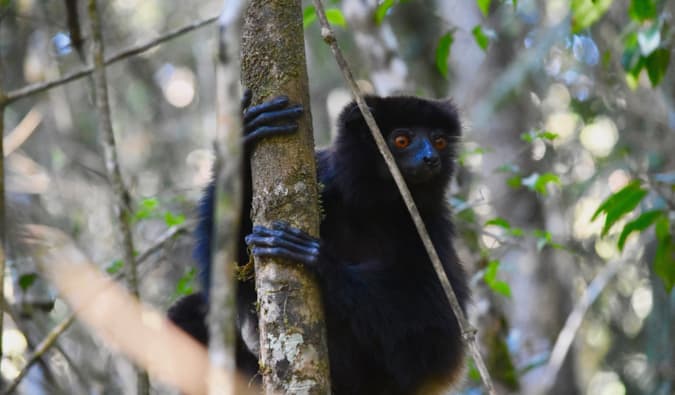
Besides lemurs, there were the famous giraffe beetles and lots of birds, chameleons, and other wildlife. As with all national parks in Madagascar, you’re required to hire a guide (you’ll want to anyway so they can point out wildlife to you). Of the multiple trails available, I would do the morning hike, then the afternoon and night hikes at the secondary entrance, as the majority of tours skip that and you get more of the park to yourself. There are also hot springs in the nearby town to relax in.
Due to the park’s popularity, there’s a daily limit on the number of people who can visit, so it’s best to go in the low season. While the park covers 415 square kilometers (161 square miles), you only get to see a few square miles of it, so it can still be crowded, especially in the morning when the tour buses come.
7. Andasibe-Mantadia National Park (Lemur Island)
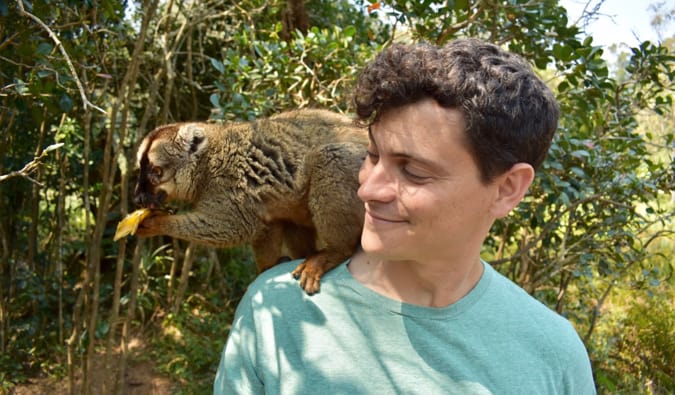
Established in 1989, the park spans over 60 square miles (155 square kilometers) and is a protected area. It receives over 210 days of rain each year on average. Here the lemurs let you get up close and personal since they have been domesticated. However, they are also released back into their natural habitat to be wild again when they’re ready. But, if for some reason they can’t adapt, they live freely in the park and are safe from outside threats as logging and agriculture have isolated the park from nearby natural landscapes, threatening the wildlife that calls the park home.
Down on the west coast, this small port town is famous for the expats who move there, the pizza (it’s a seriously popular dish in the country), and for being a launching pad for diving excursions to the Great Reef offshore. There’s not much else to do except sit by the beach or go into the water.
The city was founded in the 17th century by French buccaneers (pirates) for commercial trading purposes, with the city expanding during the French occupation.
The drive getting here on the N7 (the only north-south highway) is also pretty amazing, as you can take in Ranomafana, Isalo, and other spots along the way.
9. Antananarivo
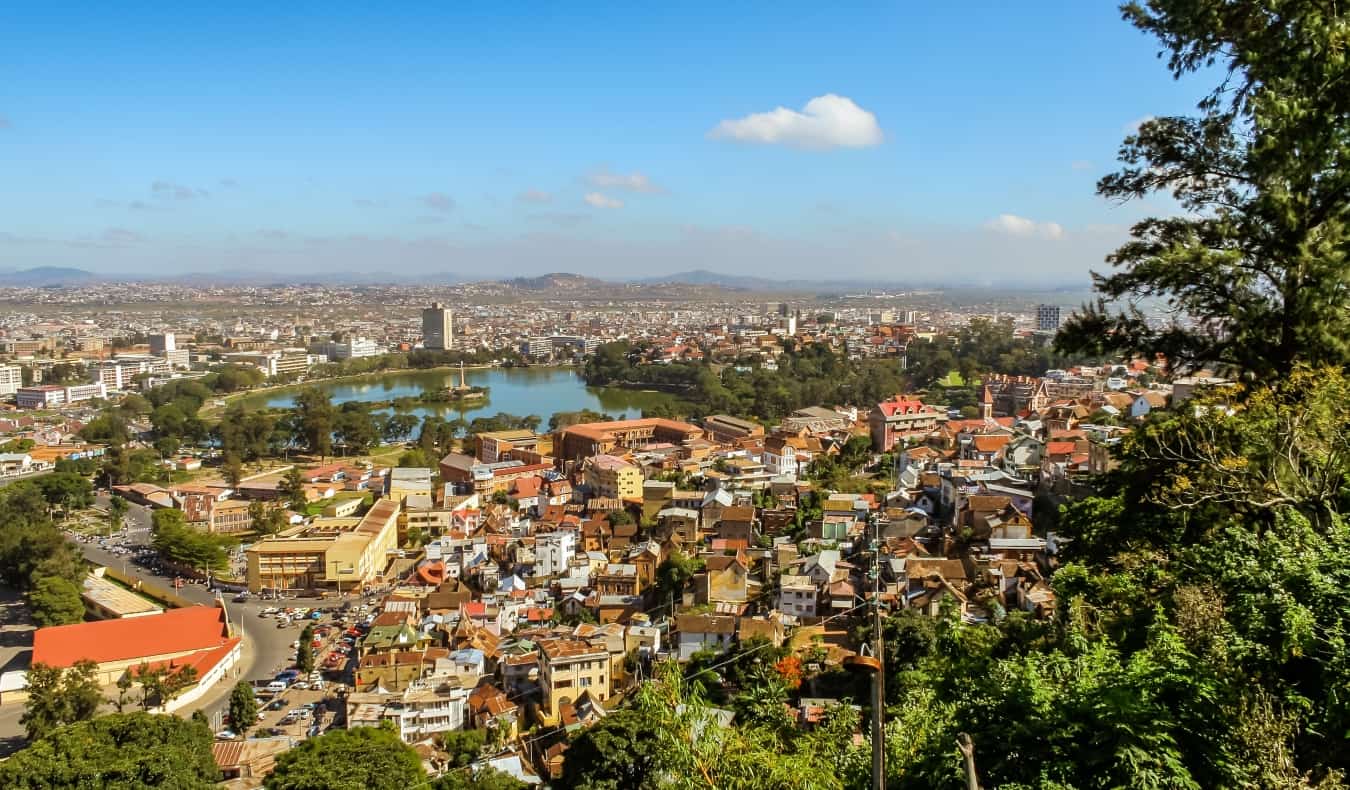
Today, it’s a chaotic place with not a lot to do, but it’s a good stop to see the lemur park and the Rova (the old palace), get a sense of the international scene in the city, and use it as your launching pad for stops further afield.
To learn more about the city and Malagasy culture, take a private walking tour guided by a local . You’ll come away with a much deeper understanding of Malagasy people and their culture.
10. Overload on zebu
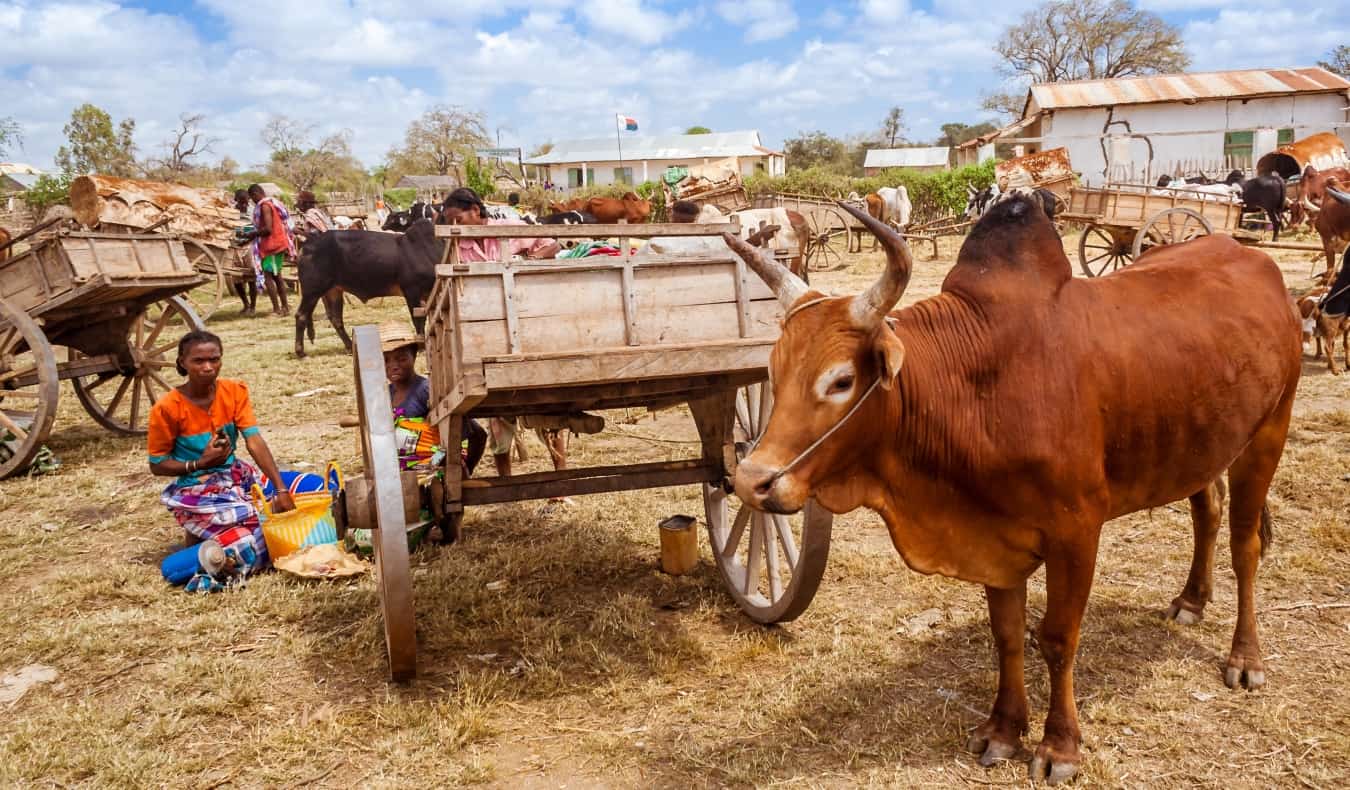
However, the meat is really tough, thanks to all the work the animals do in the fields, and so it’s best in a stew or as a steak. I can’t say I loved it. But often it was either that or pasta. I had so much zebu that I’m good for the rest of my life.
11. Drive the N5
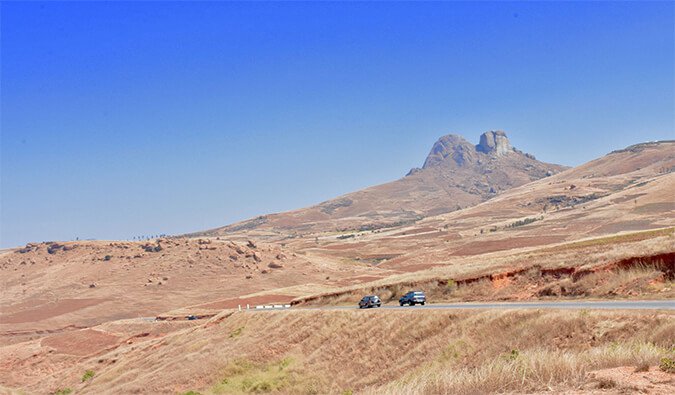
You’re really off the beaten path here. Many sections are often impassable so budget a lot of time. The road quickly turns bad outside of Toamasina and doesn’t get much better as you progress. They say it takes over 24 hours to drive the entire “road.” I’m surprised it’s even that quick!
12. Go whale watching
Between June and November, more than 7,000 humpback whales migrate from Antarctica to Madagascar to breed (they can migrate upwards of 25,000 kilometers/15,500 miles each year). The whale watching is some of the best in the world. While we were taking the boat to Île Sainte Marie, we saw a couple breach the water and it was stunning to see.
Adults can grow up to 16 meters (52 feet) and weigh over 30 metric tons (66,000 pounds). You can also find the less-common (and recently discovered) Omura whale (dwarf fin whale) around Madagascar as well.
Best of all, with so few tourists in the country, you aren’t one of 9,384,732 boats vying for a photo!
13. Enjoy the long drives and vistas
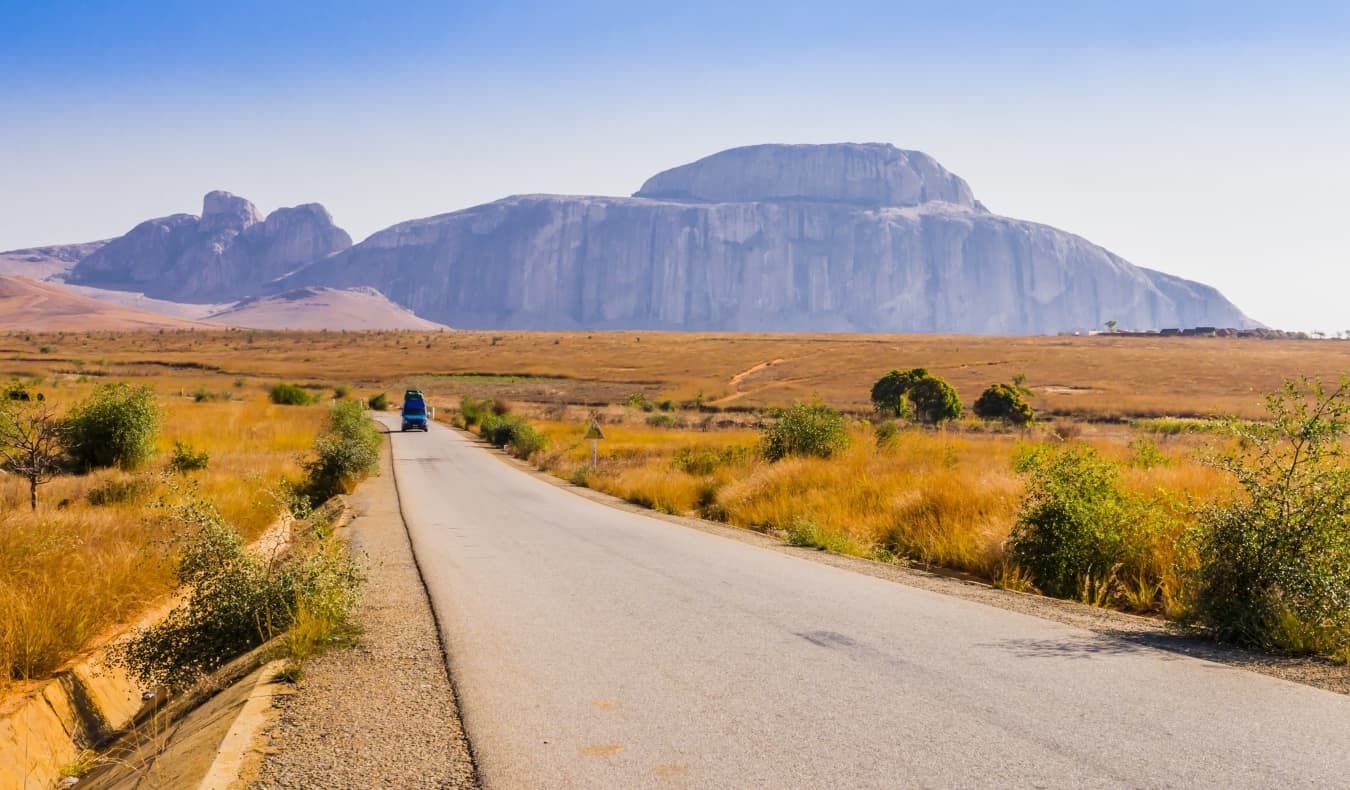
While I hate long drives, I did enjoy pulling over every few minutes to take too many photos of every mountain and valley I saw.
Madagascar has a lot to see and do. Despite the years of environmental degradation (which remains a serious, serious problem), you can still see a lot of wonderful native plants and exotic animals that are indigenous to the third largest island in the world. Though Madagascar’s quite a journey to get to, these highlights will give you a trip to remember.
Book Your Trip to Madagascar: Logistical Tips and Tricks
Book Your Flight Use Skyscanner to find a cheap flight. They are my favorite search engine because they search websites and airlines around the globe so you always know no stone is left unturned.
Book Your Accommodation You can book your hostel with Hostelworld as they have the biggest inventory and best deals. If you want to stay somewhere other than a hostel, use Booking.com as they consistently return the cheapest rates for guesthouses and cheap hotels.
Don’t Forget Travel Insurance Travel insurance will protect you against illness, injury, theft, and cancellations. It’s comprehensive protection in case anything goes wrong. I never go on a trip without it as I’ve had to use it many times in the past. My favorite companies that offer the best service and value are:
- Safety Wing (best for everyone)
- Insure My Trip (for those over 70)
- Medjet (for additional evacuation coverage)
Looking for the Best Companies to Save Money With? Check out my resource page for the best companies to use when you travel. I list all the ones I use to save money when I’m on the road. They will save you money when you travel too.
Want More Information on Madagascar? Be sure to visit our robust destination guide on Madagascar for even more planning tips!
Note: I went to Madagascar with Intrepid Travel as part of our ongoing partnership. They paid for the tour and my expenses during the trip. I paid for my flights to and from Madagascar.
Got a comment on this article? Join the conversation on Facebook , Instagram , or Twitter and share your thoughts!
Disclosure: Please note that some of the links above may be affiliate links, and at no additional cost to you, I earn a commission if you make a purchase. I recommend only products and companies I use and the income goes to keeping the site community supported and ad free.
Related Posts
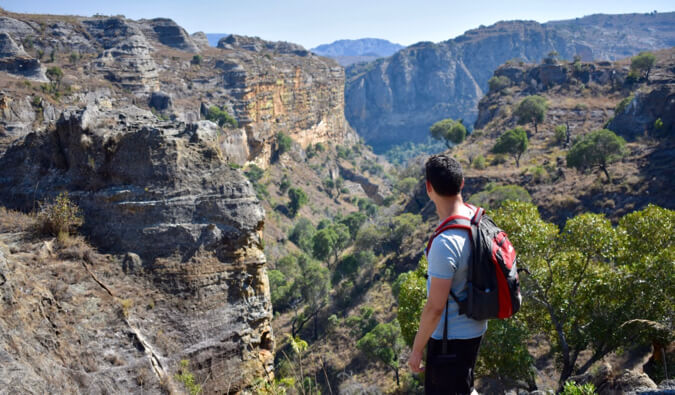
Get my best stuff sent straight to you!
Pin it on pinterest.
Madagascar Travel Guide: Essential Facts and Information
:max_bytes(150000):strip_icc():format(webp)/anoukmarrakech-56a373305f9b58b7d0d20299.jpg)
Madagascar is undoubtedly one of Africa's most fascinating countries, and certainly one of the continent's most unique. An island nation surrounded by the crystalline waters of the Indian Ocean , it's most famous for its incredible flora and fauna - from its charismatic lemurs to its towering baobab trees. Much of the country's wildlife is found nowhere else on Earth, and as such eco-tourism is one of Madagascar's key attractions. It is also home to unspoiled beaches, breathtaking dive sites and a colorful kaleidoscope of local Malagasy culture and cuisine.
The fourth-largest island on the planet, Madagascar is surrounded by the Indian Ocean and situated off the east coast of Africa. The country's closest mainland neighbor is Mozambique , while other islands in the nearby vicinity include Réunion, the Comoros and Mauritius.
Madagascar has a total area of 226,660 square miles/587,041 square kilometers. To put that into perspective, it's just less than twice the size of Arizona and similar in size to France.
Capital City:
Antananarivo
Population:
In July 2017, the CIA World Factbook estimated Madagascar's population at just over 25 million people.
French and Malagasy are the official languages of Madagascar, with various different dialects of Malagasy spoken throughout the island. French is generally spoken only by the educated classes.
The majority of Madagascans practice either Christian or indigenous beliefs, while a small minority of the population (around 7%) are Muslim.
The official currency of Madagascar is the Malagasy ariary. For up-to-date exchange rates, check out this helpful conversion site .
Madagascar's weather changes dramatically from region to region. The east coast is tropical, with hot temperatures and plenty of rain. The highlands of the central interior are cooler and less humid, while the south is the driest region of all. Generally speaking, Madagascar has a cool, dry season (May to October) and a hot, rainy season (November to April). The latter brings frequent cyclones.
When to Go:
The best time to visit Madagascar is during the May to October dry season, when temperatures are pleasant and precipitation is at its lowest. During the rainy season, cyclones can be a threat to visitor safety.
Key Attractions
Parc National de L'Isalo
Parc National de L'Isalo offers more than 315 square miles/800 square kilometers of breathtaking arid scenery, complete with fantastic sandstone rock formations, canyons and crystal clear pools perfect for swimming. It is one of Madagascar's most rewarding destinations for hiking.
The shores of this idyllic island are washed by clear turquoise waters and the air is fragrant with the scent of exotic blooms. It's home to many of Madagascar's most exclusive hotels, and is the destination of choice for wealthy beachgoers wishing to go snorkeling, sailing and scuba-diving. Nosy Be is also one of the best places in Africa to swim with whale sharks .
Avenue of the Baobabs
In Western Madagascar, the dirt road that connects Morondava and Belon'i Tsiribihina is home to a rare botanical spectacle, comprised of dozens of giant baobab trees. Many of these magnificent roadside trees are several hundred years old and over 100 feet/30 meters high. Because the avenue isn't yet part of a national park, you can view the trees for free.
Parc National d'Andasibe-Mantadia
Parc National d'Andasibe-Mantadia combines two separate parks, which together provide one of the best opportunities for a close encounter with Madagascar's largest lemur species, the indri. A total of 13 lemur species live in the park, as well as over 100 bird species, many of them endemic (including the Madagascar yellowbrow and the Madagascar serpent eagle).
Fondly referred to as "Tana", Madagascar's capital city is busy, chaotic and well worth a few days' visit at the beginning or end of your trip. It is a hub of Malagasy culture, known for its colonial architecture, vibrant art scene and surprising number of high-quality gourmet restaurants. Top attractions include the Rova palace complex and Analakely Market.
Tsingy de Bemaraha National Park
Located in the remote northwest, Tsingy de Bemaraha National Park is famous for its astonishing karstic plateaus. These petrified forests are crafted from razor-sharp spires of limestone and can be explored via a series of suspension bridges. Keep an eye out for 11 species of lemur or endemic mammals such as the fossa and falanouc.
Getting There
Madagascar's main airport is Ivato International Airport, located 10 miles/16 kilometers northwest of Antananarivo. The airport is home to Madagascar's national airline, Air Madagascar. From the United States, most flights connect via Johannesburg's O.R. Tambo Airport or Paris, France.
Non-nationals need a tourist visa to enter Madagascar; however, these can be purchased upon arrival at all international airports or harbors. It is also possible to organize a visa in advance at the Madagascan embassy or consulate in your home country. Check the government's visa information page for more information.
Medical Requirements
There are no compulsory vaccinations for travelers to Madagascar, however the Center for Disease Control and Prevention (CDC) recommends certain vaccines including hepatitis A, typhoid and polio. Depending on the region you plan to visit, anti-malaria medication may be necessary, while visitors travelling from a yellow fever country will need to carry proof of vaccination with them.
This article was updated by Jessica Macdonald on August 27th 2018.
The Top 8 National Parks in Madagascar
Tanzania Travel Guide: Essential Facts and Information
12 Best Things to Do in Madagascar
Top 18 Things to Do in Antananarivo, Madagascar
Tsingy de Bemaraha National Park: The Complete Guide
Weather in Madagascar: Climate, Seasons and Average Temperatures
Amber Mountain National Park: The Complete Guide
Mauritius Travel Guide: Essential Facts and Information
Rwanda Travel Guide: Essential Facts and Information
Isalo National Park, Madagascar: The Complete Guide
Botswana Travel Guide: Essential Facts and Information
Gabon Travel Guide: Essential Facts and Information
Ghana Travel Guide: Essential Facts and Information
Senegal Travel Guide: Essential Facts and Information
DRC Travel Guide: Essential Facts and Information
Nigeria Travel Guide: Essential Facts and Information
You will be redirected to your dashboard shortly. We will also call you back in 24 hrs .
- 10 Places To Visit In Madagascar That Are A Perfect Blend Of Nature And Wildlife!
23 Mar 2023
The slight mention of Madagascar creates a picture of a place adorned with pristine beaches, lush green rainforests, bulging-eyed golden lemurs, and the settlements of age-old French colonies. Marked as the fourth largest island in the world, this place has something to offer to every traveler.
For the water babies, there is an archipelago of white sand beaches, the wildlife lovers can explore the rainforests and the varied creatures that give a closer glimpse of the animal kingdom while the history admirers have UNESCO heritage sights to witness on this island. And to experience the best of this island, do not miss out on these 10 amazing places to visit in Madagascar .
Top 10 Tourist Places In Madagascar
Here is an interesting list of places to go in Madagascar covering all the Madagascar highlights and Madagascar points of interest.
The Bustling Capital City
1. antananarivo.
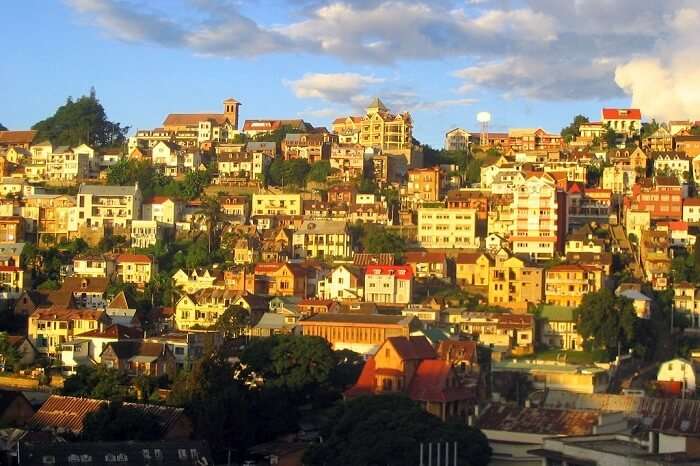
Image Credit: oledoe by flickr
Must Read: 15 Best Things To Do In Sentosa To Make The Most Of The Island Paradise
Reflecting a beautiful blend of traditions and culture, this capital city is the melting pot of Madagascar. Also called Tana it is settled at the slopes of the surrounding mountains, this city is situated at an altitude of 1400 metres. The older part of the city still showcases the French colonialism and Parisian structures lined on the slopes of the hills. As compared to the rest of the Madagascar island, Antananarivo is one of the developed cities.
Must Visit Attractions: Ambohimanga, Rova, and Musée Andafiavaratra
Looking To Book An International Holiday?
Book memorable holidays on TravelTriangle with 650+ verified travel agents for 65+ domestic and international destinations.

Trip to Sri Lanka at Rs 13,500/-
Plan Your Vacation Today!

Trip to Singapore at Rs 20,499/-
Get Quotes From Local Experts

Mauritius Holiday Starting at Rs 65,000/-
Talk to Our Experts Today

Maldives Honeymoon Trip at Rs 39,800/-
Pay with easy EMI Option

Europe Trip at Rs 89,999/-
All Inclusive Deals

Vacation in Dubai at Rs 27,499/-

Hong Kong Holiday at Rs 24,999/-
Money Safe Guarantee

Thailand Holiday at Rs 7,999/-
Flights Excluded

See more at TRAVELTRIANGLE.COM
Splendours Of Nature
2. avenue of the baobabs.
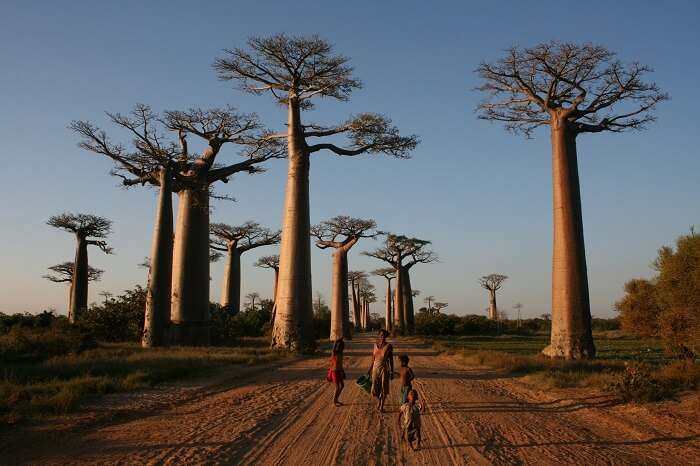
Image Source
In the western side of Madagascar stands these tall Baobab trees symmetrically lined up on a dirt road lying between Morondava and Belon’i Tsiribihina. Its unusual and raw beauty draws the attention of many tourists and makes it one of the best places to visit in Madagascar. The Baobab trees are locally known as Renala which means, ‘Queens of the forest’. These 30 meters tall strangely shaped trees have existed since 1000 years, and the view of these trees during the sunset is worth to capture.
Location: Madagascar, Morondava Best Time To Visit: July-August (In the evening)
Suggested Read: 17 Things To Do In Madagascar That You Won’t Get To Do Anywhere Else
3. Tsingy Of Bemaraha
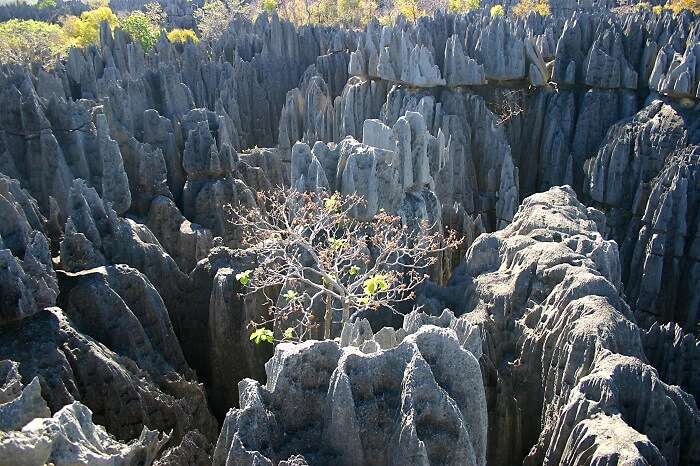
Suggested Read: 14 Reasons Why Madagascar Honeymoon Is The Ultimate Dose Of Romance
Nature’s finest beauty lies here amidst this dramatic landscape which is beautifully carved fossil deposits and colossal monoliths. This natural park consists of huge and spiked rocks formed limestones which were moulded 5 million years ago and locally known as Tsingies from which the name derived. Declared as a World Heritage Site by UNESCO, this natural wonder is one of the hyped places in Africa for the adventurers.
Established In: 1997 Best Time To Visit: April to November Location: Western Madagascar
Into The Wild
4. ranomafana national park.
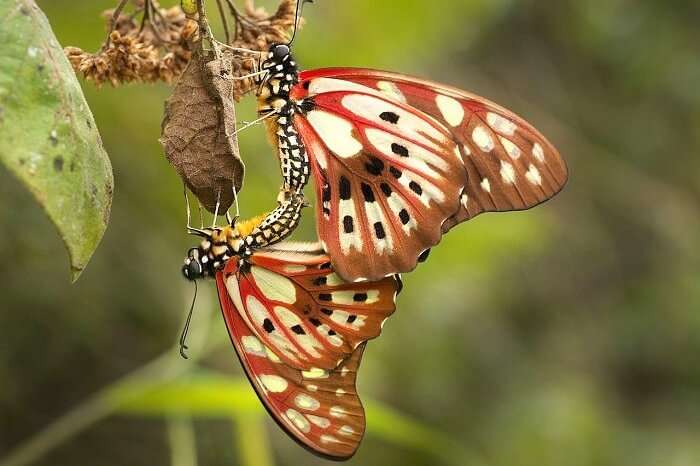
Enriched with a varied range of flora and fauna, the Ranomafana national park spreads across an area of 400 kms. Sq. The word Ranomafana means ‘hot water’ in the local language and one can enjoy a relaxing bath under hot running water in any of the waterfalls inside the park. This park is also a home to the endangered species of golden bamboo lemur.
Best Time To Visit: April to December Location: Ranomafana Village, Madagascar
5. Zahamena National Park
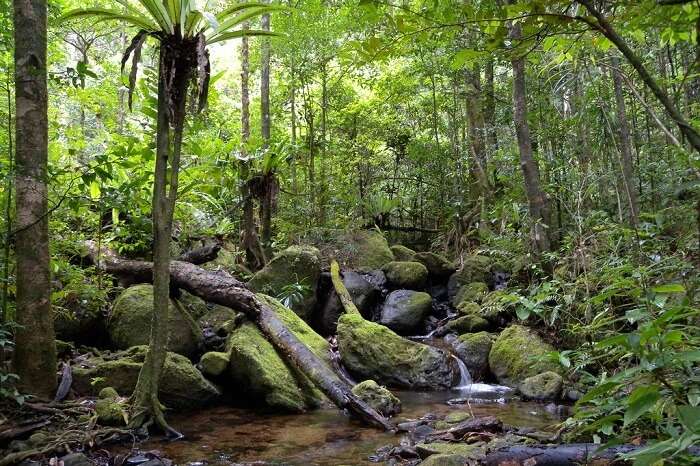
Image Credit: Frank Vassan by flickr
Suggested Read: 12 Best Beaches In Seychelles For An Euphoric Holiday Experience!
Stepping at this rainforested national park, you will get the feeling of walking on the sets of a Hollywood movie. Surrounded by mist and rain clouds, this national park is a home to some of the wide array of birds. To get the best view of wildlife and birds, bed in at Vavatenina or Ambatondrazaka.
Established On: 1997 Location: Rain forests of Atsinanana
6. Masoala National Park
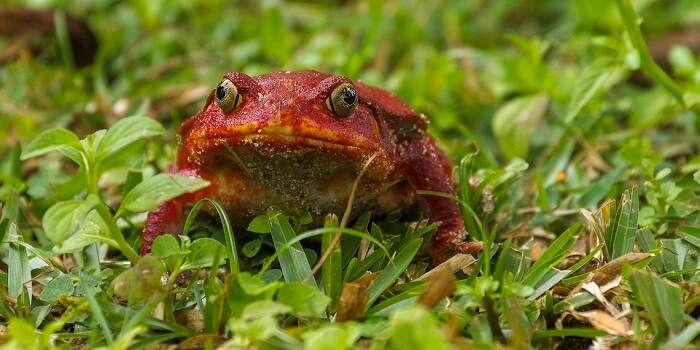
Suggested Read: Seychelles Island: All You Need To Know About This Gem Of The Indian Ocean
The serene view of the Rainforests and the catching the sight of rare species like the Falanouc and leaf-tailed geckos. This natural paradise is spread across a region of 250 miles of rainforest and also shelters three marine parks. Apart from the varied range of wildlife species, the park also shelters birds and reptiles like the Tomato Frog. The marine parks in the vicinity are a perfect resort for the adventure enthusiasts as it offers activities like snorkelling and kayaking activities.
Established On: 1997 Location: North-East Of Madagascar
Planning your holiday but confused about where to go? These travel stories help you find your best trip ever!
Real travel stories. Real stays. Handy tips to help you make the right choice.

Ramya Narrates The Story Of 6 Girls On An Extraordinary Trip To Thailand
Bangkok. Phi Phi. Krabi. Why should guys have all the fun?

Sandeep Illustrates On The Best Activities For A Family Trip To Mauritius
Water sports. Cocktail parties. And unlimited fun at Casela.

Nisarg Can't Stop Praising His Honeymoon Trip To Maldives
There was snorkeling, sightseeing, luxury, comfort, & much more!

Sabyacsachi's Romantic Trip Proves Europe To Be The Mother Of All Vacations
For Art, Culture, Luxury, & more...

Srishti Talks Of Her Amazing Trip To Singapore With Her Mother & Niece
A fun-filled destination for ages indeed!

67-Year Old Sridhar Tells How He Beat The Odds & Took A Solo Trip To Dubai
Desert safari. Burj Khalifa. Welcoming locals. Tell me more!

Not Adventure Lovers? Saurabh's Family Trip Proves Hong Kong To Still Be Full Of Fun
Your kids will love Disney Land & Ocean Park!

Ravi's Tale Of A Sri Lanka Family Tour Is All You Need To Know About Ramayana Tour
For the love of Ramayana & Travel!
7. Isalo National Park
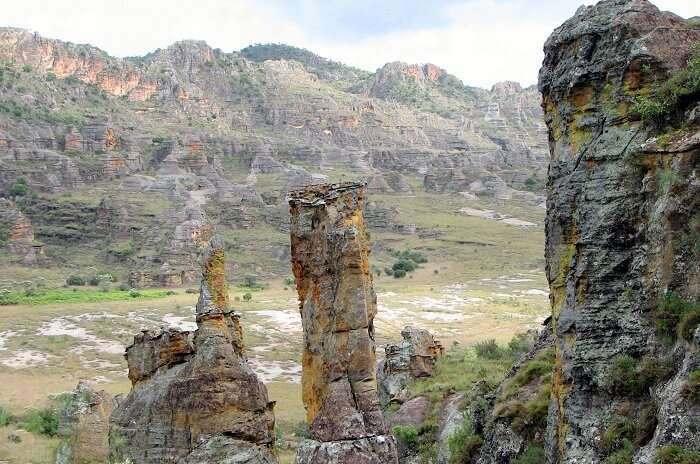
The surreal beauty of this national park makes it one of the best places to see in Madagascar. Tucked between Toliara and Fianarantsoa, this national park is considered the jewel of nature for its rock plateaus and an oasis of waterfalls. Giving a break from the usual rainforests, this place appears as an inert desert. The main highlight of the place is the natural pool which is located on the western side of the reserve.
Best Time To Visit: September-October Location: Ihorombe Region, Madagascar
The Coastal Gems
8. ifaty and tulear.

Suggested Read: 10 National Parks In Kenya: Experience The Unsurpassed Charm Of African Wildlife!
A perfect getaway for the delightful travelers, this small beach located at the southwest coast of Madagascar is a safe haven situated on the island. Settled at the vicinity of the Tulear which is the fifth largest city on the island, this beach gives the best view of the local’s daily life and a chance to taste the scrumptious flavours of Madagascar’s seafood.
Things To Do In Ifaty and Tulear Snorkeling, catamaran tours at the Mozambique channel, visit the traditional reed villages, and more
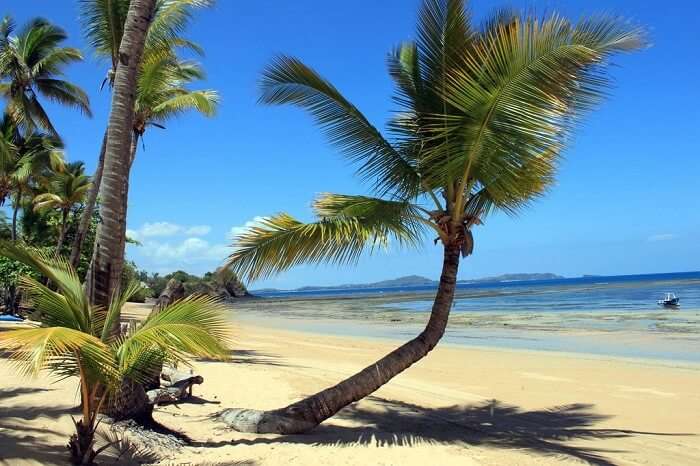
Image Credit: Marco Assini by Flickr
A gem of the north-coast of Madagascar, this place is a home to an archipelago of beaches which attracts thousands of enthusiastic tourists around the globe. Situated 10 kms from the mainland, this place is known for its pristine beaches, exotic hotels and nature lodges.
Things to do in Nosy Be Scuba diving, snorkeling, visit the Lokobe Nature Special Reserve, and more
10. Nosy Boraha
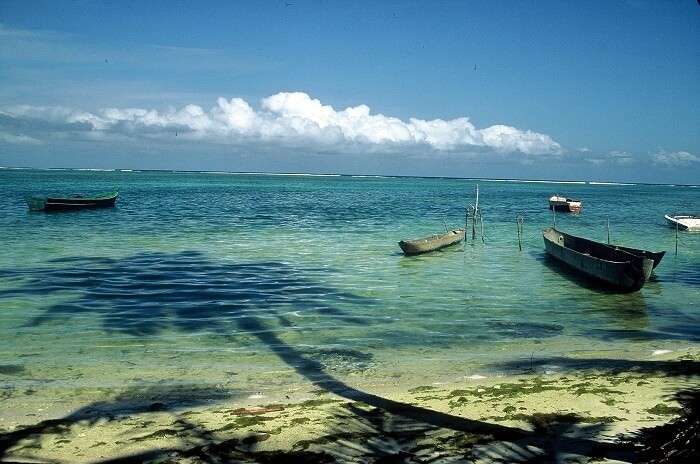
Suggested Read: 10 Things To Do In South Africa To Convince You For Your Next African Adventure!
Also known as Sainte Marie Island, this pristine beach is stretched along the eastern coast of Madagascar. The lined palm-trees and the lapis lazuli lagoons make this beach an all-year-round destination for the beach lovers.
Things To Do In Nosy Boraha: Whale watching, speedboat ride, swimming with Cetaceans, and more
Further Read: 7 Mystical National Parks In Madagascar To Explore The Best Of African Wildlife
Can’t wait to explore this island and take a ride amidst the tranquility of nature? Then don’t waste time and browse through the exclusive South-Africa tour packages that will add wings to your vacation to the Great Red Island!
Disclaimer: TravelTriangle claims no credit for images featured on our blog site unless otherwise noted. All visual content is copyrighted to its respectful owners. We try to link back to original sources whenever possible. If you own the rights to any of the images, and do not wish them to appear on TravelTriangle, please contact us and they will be promptly removed. We believe in providing proper attribution to the original author, artist or photographer.
Please Note: Any information published by TravelTriangle in any form of content is not intended to be a substitute for any kind of medical advice, and one must not take any action before consulting a professional medical expert of their own choice.
Frequently Asked Questions About Places To Visit In Madagascar
What is the best part of Madagascar?
Antananarivo, Avenue Of The Baobabs, Tsingy Of Bemaraha, Zahamena National Park are some of the best parts of Madagascar, that you must visit on your next trip.
What are the most popular tourist attractions in Madagascar?
Isalo National Park, Ambohimanga, Mont Passot, Lokobe Nature Special Reserve are some of the popular tourist attractions in Madagascar.
Is it safe to visit Madagascar, given the covid situation?
Yes, it is safe to visit Bishkek given that you follow all guidelines and take all the necessary precautions. Make sure to get yourself vaccinated before planning a trip, also wear masks at all times, maintain social distance at public places and sanitize your hands regularly.
Is Madagascar safe for tourists?
Yes, Madagascar tourist attractions are safe. The locals are very hospitable and warm making it very safe for tourists to plan a trip.
Do people live in Madagascar?
Yes, people do live in Madagascar. There are Twenty-two million people living in Madagascar as per the recent data.
What is the climate like in Madagascar?
Madagascar has two seasons, hot and rainy and dry and cool.
What is Madagascar famous for?
Madagascar is famous for pepper, vanilla & lemurs.

Looking To Book A Holiday Package?

Spellbinding Cochin Family Tour 2D/1N Package @ Rs 2,750
Plan your trip today!

Himachal Family Tour Package 4D/3N @ Rs 8,750
Get quotes from multiple travel experts.

Exciting Andaman Family Trip 5D/4N @ Rs 10,250
Compare & customize quotes before booking.

Gangtok & Darjeeling Tour Package 5D/4N @ Rs 13,000
Have Questions? Talk to our travel experts today.

Wonderful Goa Family Package 3D/2N @ Rs 6,500
Best prices guaranteed.

Riveting Rajasthan Vacation 3D/2N Package @ Rs 6,499
EMI option available.

Enchanting Uttarakhand Tour 4D/3N Package @ Rs 7,199
Explore best destinations with our experts.

Delightful South Weekend Tour 3D/2N Package @ Rs 4,999
Thrilling weekend full of fun.

Marvelous Gujarat Tour 3D/2N Package @ Rs 4,999
Talk to our experts today.
Recent Posts
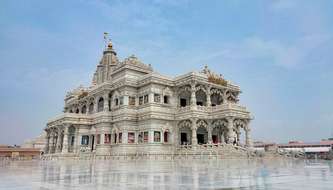
7 Tips For Exploring Prem Mandir The Right Way – A Visitor’s Guide
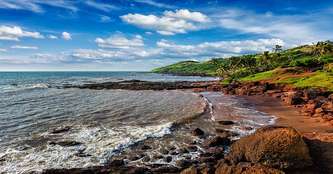
North Goa To South Goa Road Trip: A Coastal Indian Trip Itinerary
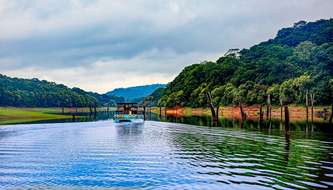
Exploring The Coastal Wonders Enroute Goa To Kerala Road Trip
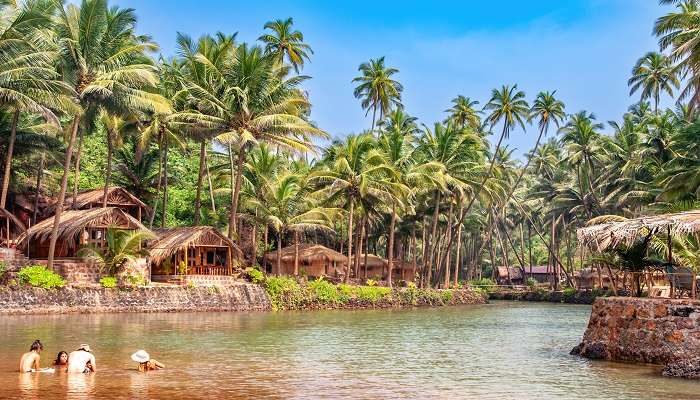
Goa To Gokarna Road Trip: An Adrenaline-Fueled Experience Awaits!
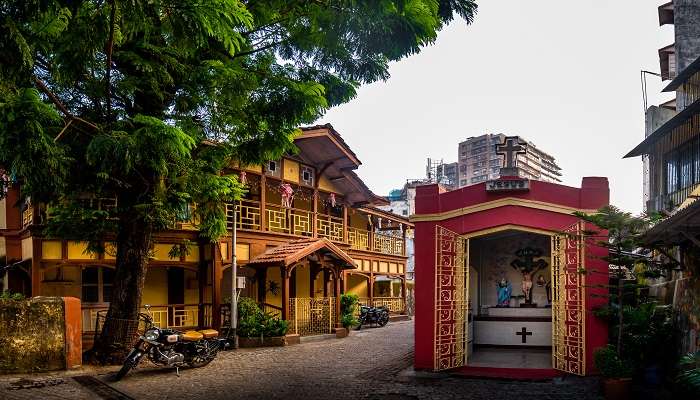
10 Offbeat Places In Mumbai That Unfolds Its Spectacular Charm

Sree Poornathrayeesa Temple And Its Enchanting Legacy
Trending Blogs

20 Mysterious Places In India To Visit In 2023 More Bizarre Than The Bermuda Triangle

10 Scariest Roads In India That Are A Driver’s Nightmare

101 Places To Visit In India Before You Turn 30 in 2024

35 Exotic Places To Visit In December In India 2024 To Enjoy A Surreal Vacation

60 Best Honeymoon Destinations In India In 2024

95 Best Honeymoon Destinations In The World In 2023 For A Romantic Escape!
Best Places To Visit In India By Month
Best places to visit outside india by month.
- TravelTriangle
- International
- Places To Visit »
- Tour Packages
- Honeymoon Packages
- Family Packages
- Budget Tour Packages
- Luxury Tour Packages
- Adventure Tour Packages
- Group Tour Packages
- Maldives Tour Packages
- Bali Tour Packages
- Dubai Tour Packages
- Singapore Tour Packages
- Thailand Tour Packages
- Europe Tour Packages
- Sri Lanka Tour Packages
- Tour Packages From Delhi
- Tour Packages From Mumbai
- Tour Packages From Bangalore
- Tour Packages From Chennai
- Tour Packages From Kolkata
- Tour Packages From Hyderabad
- Tour Packages From Ahmedabad
- Thailand Tourism
- Bali Tourism
- Singapore Tourism
- Maldives Tourism
- Mauritius Tourism
- Dubai Tourism
- Europe Tourism
- Hotels in Thailand
- Hotels in Maldives
- Hotels in Mauritius
- Hotels in Bali
- Hotels in Dubai
- Hotels in Singapore
- Hotels in Sri Lanka
Travel Guide Madagascar
Book your individual trip , stress-free with local travel experts
- roughguides.com
- Travel guide
- Itineraries
- Local Experts
- Travel Advice
- Accommodation
Plan your tailor-made trip with a local expert
Book securely with money-back guarantee
Travel stress-free with local assistance and 24/7 support
Travel to Madagascar and discover an extraordinary storehouse of natural and cultural riches. Separated from Africa and Asia at the time of the dinosaurs, Madagascar's animal life has evolved in a startling myriad of forms, with endemic species found nowhere else on earth.
Madagascar travel facts
Where to go in madagascar, best time to go to madagascar.
- How to get to Madagascar
How to get around Madagascar
Best places to visit in madagascar, itineraries for madagascar, accommodation in madagascar, food and drink in madagascar, activities in madagascar, travel visa requirements for madagascar.
Humans first colonized this huge island less than 2000 years ago. Before then, Madagascar was a primal Eden, inhabited only by its bizarre and marvellous zoological cornucopia. As biologists continue to discover more about this remarkable place, calling Madagascar the eighth continent barely does it justice: second planet seems more appropriate. Read our Madagascar guide for everything you need to know before you go.
- Size: Madagascar is the fourth-largest island in the world. Measuring 587,040 square kilometres, it is more than double the size of Texas and nearly two-and-a-half times the size of the UK.
- Population: At the last official estimate in 2011, Madagascar’s population was just under 21 million, with a population density of 35 per square kilometre.
- Language: The country’s official languages are Malagasy and French, though English is increasingly important.
- Conservation: Madagascar has more than 40 national parks and reserves, managed by Madagascar National Parks.
- Religion: Traditional religious beliefs are still widely upheld in Madagascar, with some 4 million Roman Catholics, and 3.5 million members of the FJKM (the Church of Jesus Christ in Madagascar).
- Politics: Madagascar’s independence was returned to it, from France, on June 26, 1960. After years of chaotic dictatorship, the country now has a presidential, multi-party democracy.
- Biodiversity: Dozens of new species are discovered in Madagascar every year: more than 100 species of lemurs are now recognized and nearly 80 species of chameleons are endemic to the island.
- Leaping ahead: While Andasibe-Mantadia National Park’s most famous resident is the lemurs, the forests are also home to at least a hundred species of frogs – a figure that makes this the most frog-rich area on earth.
- Exports: Madagascar is associated with vanilla or rum and sugar cane, but the national crop with no equal is rice (vary in Malagasy), with the highest consumption per capita in the world – around 150kg per person (400g) or a pound of rice a day.
Madagascar has an entrancing tableaux of landscapes: dripping emerald rainforests, baobab trees like giant windmills towering over the savannah, and crazy outcroppings of limestone pinnacles, like a million wonky Gothic church spires.
The human landscapes are equally captivating. In the highlands, a thousand shades of green dazzle from the terraced rice fields, framed by dykes of red earth; water-filled nursery paddies reflect a cerulean blue sky and towering granite mountains, daubed by the pastel images of rows of multicoloured Hauts Plateaux houses.
On the east coast, you’ll find golden beaches framed by huge boulders and palm trees, lapped by the bath-warm Indian Ocean.
Out to the west and south, rolling plains of dry savannah and range lands intersperse with dense and alien spiny forest and carved by broad meandering rivers.
Here are some of the best places to visit in Madagascar :
Antananarivo
There’s no other capital in the world like Antananarivo (Tananarive to the French, “Tana” colloquially to everyone). A necklace of emerald rice paddies trails around lakes, canals and jagged hills, while a huddle of pastel-coloured houses crowds the still-partly cobbled streets of a crumpled central lattice. Even the sprawling shanties seem somehow prettier than the average urban slum: still largely built in the traditional manner, using fired-clay bricks, they blush radiantly pink in the afternoon sun, packed together between the glimmering rice fields.
Central Madagascar
The highlands of central Madagascar stretch from north of Antananarivo far towards the south of the island, undulating wildly across dramatic granite mountain ranges, lava ridges and outcrops. While there’s very little indigenous natural forest left, the human landscape is captivatingly beautiful. Deep valleys are filled by terraced rice fields and traditionally built towns, from the busy provincial agricultural hub of Antsirabe to the historical city of Fianarantsoa. Explore towns by horse-drawn buggy and immerse yourself in cultural traditions such as Malagasy crafts and famadihana (reburial) ceremonies. Beyond these urban centres lies the Réserve Villageoise Anja, where you can hike through the home territories of delightful ring-tailed lemurs, and rugged Parc National de Ranomafana, whose rainforest conceals the rare golden bamboo lemur.
Southern Madagascar
Southern Madagascar has some of the island’s most compelling attractions, from the gaunt sandstone plateau of Parc National d’Isalo to the towering mountain fastness of Parc National d’Andringitra. Elsewhere, you’ll discover spiny forests and glorious beaches, surfing and diving in the dry southwest, and the seductive rolling landscapes and scalloped bays wrapping around the port of Fort Dauphin in the far southeast. This is also Madagascar’s poorest region, however, and more prone to lawlessness – generally manifested in cattle rustling and highway banditry – than the rest of the country.
Western Madagascar
Way off the tourist trail, the vast region of western Madagascar has some unexpected surprises for those who slog to this barely visited backcountry. Western Madagascar may not be blessed with interesting towns or picturesque beaches, but its weird and wonderful natural spectacles make up for it. Hikers can strike out among the giants at Morondava’s Allée des Baobabs, where 300-plus baobabs loom above scattered bush and farmland, some reaching heights of 20 metres. After dark, seek out the exhilarating nocturnal animal life of Kirindy Private Reserve, whose rich wildlife includes fossas. But, without a doubt, the region’s crowning glory is Tsingy de Bemaraha, an extraordinary expanse of otherworldly limestone pinnacles, cut through by winding rivers.
Northeastern Madagascar
The rainforests of northeastern Madagascar are some of the most biodiverse areas on the planet. These hilly landscapes support a riotous display of jungle trees, lianas and other flora, which shelter extraordinarily rich wildlife, from minuscule chameleons to weighty indri lemurs. While the northeast’s natural vegetation is dense forest, the majority of trees had been cut by the time of independence, and today rice paddies, sugar-cane fields and plantations of vanilla and fruit trees account for much of the more level ground. The sizeable remaining pockets of forest are major strongholds of Madagascar’s natural heritage, now flagged by UNESCO as the “Rainforests of the Atsinanana” group of World Heritage Sites in Danger.
Off the sheltered west coast lies the fabled island of Nosy Be , with smaller and even more alluring islands dotted around the warm waters of the Mozambique Channel. Madagascar is swathed in largely deciduous dry forest, interspersed with pockets of highland and lowland rainforest – a biome known as the Sambirano ecosystem. The southeast corner of Nosy Be is still shrouded by a cloak of primary rainforest sheltering a number of rare and endemic species. The majority of those who visit Madagascar make a beeline here, lured by the balmy weather and warm seas, plus regular charter flights from France and Italy. Diving and snorkelling are popular pursuits, and kite- and windsurfing are big around Diego.
Far out on the west coast, the town of Morondava has some compelling assets nearby that draw visitors from across the globe. Foremost among these is the iconic Allée des Baobabs, or Avenue of the Baobabs, just a short drive out of town. As you arrive by plane, you’ll see the big baobabs as you descend, looking like stumpy wind turbines on the flat plain among the fields of sugar, cotton and rice. Further north is the lesser-known Kirindy Private Reserve, the only place you can travel in Madagascar with the near-guarantee of seeing a fossa – a ferocious puma-sized creature that looks like a cross between a cat and a mongoose.
Ambatolampy
Ambatolampy was a traditional Merina iron-smelting and forging town, and is still associated with metalwork and crafts – and nowadays souvenirs. Clusters of craft-sellers gather along the roadside, selling basketry and raffia-ware, brightly painted metal toys, even statues of the Virgin Mary. The stalls of musical instruments are particularly appealing, with nicely made local violins, banjos and other instruments on offer for around 20,000–40,000ar. South of Ambatolampy, you can trace the meandering Onive River by car, passing picturesque rural scenes of verdant emerald-tinted rice paddies; rust-red hillsides brimming with iron oxide; and rows of colourful houses.
Up to the west of Ambatolampy, you can see the looming mountains of the Massif de l’Ankaratra. This ancient volcanic range is occasionally dusted in snow and still bubbles with a little activity in Antsirabe’s hot springs. Antsirabe was founded in 1869 by Norwegian missionaries attracted by the curative powers of its mineral-rich thermal springs, and today is Madagascar’s third-largest town – and one of its most prosperous. Relatively clean and quiet, this is a town where many Tananariviens aspire to live, and where a few have holiday pads. The thermal baths are currently closed, but there’s no shortage of good hotels, restaurants and interesting crafts and jewellery shops.
Vehicles arriving from the north plunge down the road to Ambalavao, with the valley spread out beyond and the peaks of the Massif d’Iandrambaky poking up dramatically on the horizon. The town makes a good base from which to stock up if you’re heading into the Parc National d’Andringitra. Otherwise, you don’t need to stop here for long, but the town’s crafts workshops are accessible and worthwhile, and its famous old Betsileo houses, with their ornate verandas known as lavarangana, are very photogenic.
Andasibe-Mantadia National Park
The country’s most famous national park, Andasibe-Mantadia is located in the eastern rainforest and is home to twelve species of lemurs, including the largest – the wonderful, wailing indri. The otherworldly chorus of a family of indris, reverberating through the misty early-morning forest, is an unforgettable sound. Two hundred species of orchids bloom magnificently here, and the forests are also home to around 110 species of birds, over seventy species of reptiles and at least a hundred species of frogs – a figure that makes this the most frog-rich area on earth.
Isalo National Park
One of the best places to travel in southern Madagascar is Parc National d’Isalo. Midway between Fianarantsoa and Tuléar, this 810-square-kilometre sandstone plateau is a dramatic spectacle; its towering mesas and sculpted pillars creating a Monument Valley-style landscape. It is especially striking at its southern extremity, where the tarmac highway twists past the cliffs. The whole region, however, is a hiker’s mecca, cut by streams and springs into countless, forest-filled canyons, dotted with alluring natural swimming holes of crystal-clear water.
Tsingy de Bemaraha
The huge Parc National de Bemaraha and its far-flung northern extension, the Réserve Naturelle Intégrale du Tsingy de Bemaraha, are located on Madagascar’s largest plateau of tsingy (limestone) karst pinnacles. It’s a region that competes for remoteness with the most inaccessible parts of the island, incorporating a spectacularly strange landscape that is home to a host of endemic plants and animals. In recognition of its uniqueness, it was the first region in Madagascar to be designated a UNESCO World Heritage Site.
Sheltered on what were once mud and sand flats behind straggling stands of mangroves, the port of Tuléar (also known as Toliara or Toliary) is not the most prepossessing place to visit in Madagascar. This former slaving port has been sidelined by recent history – a fact reflected in the rebellious political stance often taken by the townspeople to matters being decided in Tana. As you wander around, look out for the town’s zebu carts, sometimes painted with bright, symbolic imagery derived from popular culture – typically music and film stars. The best attraction in Toliara is the Arboretum d’Antsokay, a 25-acre patch of spiny forest heavily planted with the flora from a lifetime’s botanical collecting by its Swiss founder, Hermann Petignat.
Discover more places in Madagascar

- Western Madagascar Travel Guide
- Antananarivo and around Travel Guide
The best time to visit Madagascar depends on where you are going and your interests. A hot, wet summer, from November to March, drenches the eastern slopes and highlands in heavy rain. Ferocious cyclones hit the east coast and ravage their way inland, making travel extremely difficult. However, down in the southwestern semi-desert, rain barely spatters the parched earth. From April to October, Madagascar experiences a dry, cool season, which is overall the best time to travel to Madagascar for bright, warm days and mild nights.
However, if you’re travelling to Madagascar for the wildlife, whale-watching is best from June to September when the creatures pass the east coast during their northerly migration. November is often recommended as the best time to visit Madagascar for wildlife, with the first rains bringing out an explosion of courting, mating and spawning among amphibians, reptiles, birds and the fabulous fossa. August to October are ideal months for diving and snorkeling.
Read our guide on the best time to travel to Madagascar .
The only practical way to travel to Madagascar is by plane. There are no direct flights from the UK or Ireland to Madagascar, but you can fly to Nairobi or Paris and connect onwards. Similarly, visitors from the east coast of North America will have to fly via London or Paris, but from the west coast it may be cheaper to fly via Bangkok. From South Africa, there are direct flights to Madagascar from Johannesburg. There are various options for travelling to Madagascar from Australia and New Zealand, notably flying via Johannesburg or Nairobi, or hubbing through Bangkok; however, the best-value route is via Mauritius and/or Réunion.
Read more in our Madagascar travel guide .
In this section, we’ll look at how to travel around Madagascar .
When considering how to travel around Madagascar, the most important thing is to give yourself time. It’s a big country, and most of the roads (such as they are) radiate out like spokes from the capital, so getting around needs planning, you’ll probably need to include some internal flights.
Most transport, however, is by road, and the road network is steadily improving. There are various options for getting around by car, the easiest (but most expensive) of which is hiring a vehicle and driver – many of whom double up as local Madagascar guides.
Budget travellers are better off using the slow and cheap shared taxis brousse (bush taxis, or taxi-be in Malagasy). These are privately or cooperatively owned minibuses running regular services to a vague timetable. Urban transport varies from town to town, but the main options are car taxis (t axis-ville ), Bajaj motorized trishaws (tuk-tuks), cyclo-pousses (cycle rickshaws) and pousses-pousses (handcarts).
Fianar’s hilltop old town is one of Madagascar’s most picturesque, with narrow lanes and views across the modern city and its rice fields.
The best place to visit in Madagascar for lemur-watching, including troops of habituated indris. Night walks and decent hotels make this as easy diversion, just a three-hour drive from Antananarivo.
This beautifully unspoiled island is quieter than Nosy Be, with the jewel of Île aux Nattes at its southern tip.
Heaven on a plate for beach-bum natural-history buffs, with leaf-tailed geckos camouflaged obligingly on every other branch and a glorious golden beach.
The real-life version of your local rainforest experience, complete with tumbling streams, buttress-rooted forest giants and thousands of life forms.
Madagascar’s most developed concentration of tourist resorts is low-key by global standards. Get away from the beach hotels and out to the offshore reefs or up to the hilly interior.
Two of the finest places to visit in Madagascar, these are worth the special journey for the towering “tree-elephants” and the exhilarating nocturnal animal life of Kirindy, including fossas.
Hard to get to, but worth every ounce of effort for the extraordinary expanses of weirdly eroded limestone pinnacles, cut through by winding rivers.
A park of big landscapes, lush canyons and wide horizons in the dry savannah. Plus, it’s easy to access and has good hotels and camping.
- Sainte Luce Reserve Moist coastal forest and creeks, home to lemurs and chameleons, with glorious beaches and onshore whale-watching, as well as some excellent Madagascar guides.
Our Madagasca r travel guide wouldn’t be complete without mentioning our Madagascar itineraries . These routes will take you to every corner of the island – and you’ll learn plenty about the country no matter where you want to go or what you want to do. You’re unlikely to complete the list, but it will give you a flavour of how to travel around Madagascar and a deeper insight into the country’s natural and historic wonders.
Tailor-made travel itineraries for Madagascar, created by local experts

18 days / from 3663 USD
Wild Madagascar
This trip is a tour of Wild Madagascar: discover dusty desert canyons, lush rainforests teeming with wildlife and trek through national parks. Explore the bustling capital Tana, then stop by the beach at Ifaty where you'll encounter forests of baobab trees and wandering tribesmen.
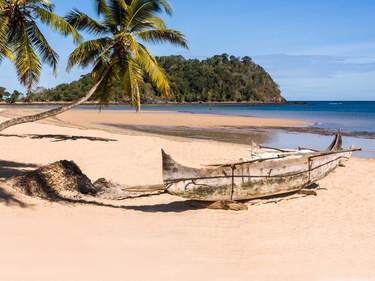
11 days / from 2417 USD
Dreaming of Madagascar
Tropical island beaches, lush rainforest, stunning wildlife, and the bright red clay houses of Antananarivo await you as you arrive on the beautiful island of Madagascar. Get your fill of culture in the capital Tana, snap beguiling wildlife, and revive and reboot on stunning white-sand beaches.

6 days / from 1268 USD
A Taste of Madagascar
An unforgettable journey through Madagascar's enchanting landscapes and cultural treasures. From the lush rainforests of Andasibe to the vibrant streets of Antananarivo, this adventure combines wildlife encounters with rich history, creating a diverse and immersive experience.
Want some help with the travel planning? Speak to us about our Tailor-made itineraries , where a local expert can plan your route and transport for you.
Itinerary 1: The North – parks and beaches
Almost all Madagascar trips start and end in Antananarivo. Allow 3–4 weeks to cover the north by a mixture of road and air travel, or skip half these stops and do it in 10–14 days.
- Antananarivo Give yourself a couple of days to visit the Rova palace compound and the old royal capital of Ambohimanga.
Get up early to walk into the indris’ territory and hear their extraordinary call. Then plan a night walk looking for chameleons and mouse lemurs.
Fly or ferry out to this old pirates’ hideaway, then rent a scooter and explore its jungle paths, clean beaches and limpid waters.
Organize a boat and local Madagascar guide to this fabled, forest-stacked island. You’ll discover aye-ayes, leaf-tailed geckos and a host of other species, some almost certainly still to be discovered.
The steep paths of the Masoala rainforest start at the doorstep of Nosy Mangabe, with every minute of every hike yielding wonderful sights and discoveries, from vangas to boas, from tenrecs to sportive lemurs.
Diego Suarez is the perfect rest stop between national parks, with its picturesque views and superb watersports.
Much easier to explore than the other rainforest parks, and still bursting with life, the Amber Mountain and the little town of Joffreville are worth a day and a night.
If you don’t have time to take a boat trip to the Tsingy de Bemaraha, then this fascinating eroded plateau is the next best thing. Lemurs and plenty of reptiles inhabit this rocky fortress.
Nosy Be’s beaches are beautiful, the resort trappings pretty tame and the interior well worth exploring. Don’t forget a trip to the wonderful Lokobé reserve.
Deciduous dry forest meets lakes and erosion gulleys in this enjoyable and accessible park between Majunga and Antananarivo.
Madagascar has no shortage of hotels, and on the whole they offer good value, certainly by international standards. There’s only a handful of top-end options scattered across the island, from urban city hotels to beach resort hotels through to national park lodges and tourist safari camps. The highest concentrations of luxury accommodation are in Tana and on Nosy Be and Île Sainte Marie. A good step down in standards will give you mid-range places, stretching from charming and extraordinarily good value to very ho-hum and rather overpriced. The budget accommodation in Madagascar is plentiful and typically great value; mostly consisting of a group of wooden, thatched bungalows; some en-suite, some with the option of air-conditioning.
Madagascar’s food culture is built around the country’s national staple, rice ( riz , or vary in Malagasy), and even enthusiastic rice lovers tend to tire of it eventually. Happily, there are plenty of interesting flavours to accompany it.
The main options for eating out in Madagascar are hotelys (local Malagasy restaurant with a simple menu of staple favourites); your hotel dining room; and foreign imports. These range from pizzerias and crêperies to Italian, French, Indian and Chinese specialist restaurants. Street food can be very good and very cheap, and may include rice and sauce, brochettes of beef, fish or prawns, roasted or baked plantains, bananas, cassava or sweet potato, stews and vegetable fritters.
Madagascar’s two great drink offerings are spiced and flavoured rum in an almost infinite variety of flavours, known as rhum arrangé, and THB beer pronounced “Tay-Ash-Bay” (short for Three Horses Beer).
Read our Madagascar guide to food and drink .
Though most travellers visit Madagascar for its wildlife – lemurs and chameleons in particular – the island has so much more to offer besides curious critters. If it were only for its landscapes, beaches and warm seas, the island would still be one of the world’s most alluring destinations, and there’s plenty here to please adrenalin junkies and outdoor enthusiasts. This part of our Madagascar guide will look at the best activities on offer.
Walking is the default way in which to explore the national parks dotted across the island. Multi-day park hikes, with a local Madagascar guide and porters, are not difficult to arrange, especially in the national parks of Andringitra, Marojejy and Masoala.
Rock climbing
With its many sheer granite and sandstone rock walls, Madagascar is full of excellent climbing opportunities. Standout areas include the Montagne des Français near Diego Suarez, and the Isalo and Andringitra national parks.
Mountain biking
Mountain biking is only allowed in some areas of the national parks but cycling can be a great way to get around remoter areas where the rewards combine a mixture of culture, nature and landscape, rather than providing a more purely wildlife experience. Many hotels also have a few mountain bikes to loan or rent for short trips, but for something longer, check out Rando Raid , based in Antsirabe who also offer horse riding, or VTT Madagascar who organize bike tours in remote parts of southeast Madagascar.
Snorkelling and diving
If you’re travelling to Madagascar for underwater adventures, the easiest diving and snorkelling is around Nosy Be. The best options are less from the main island itself, and more from some of its smaller neighbours – Nosy Tanikely, Nosy Mitsio and Nosy Radames are particularly good. The reefs of southwest Madagascar, between Andavadoaka and Anakao, are also spectacular, and the waters around Diego Suarez have numerous wrecks to explore.
Watersports
Most larger beach hotels around Madagascar can offer windsurfing, or organize it for you. Surfing tends to be a speciality of the south, notably the areas around Tuléar and Fort Dauphin. The other key spot for kitesurfing is the Mer d’Émeraude, near Diego Suarez. Kayaking and rafting can be pursued on larger rivers such as the Namorona, Tsiribihina and Manambolo.
Spectator sports
Several traditional sports are still popular with visitors to Madagascar. Moraingy, a bare-fisted combination of boxing and kick-fighting, comes from the Sakalava country of western Madagascar and can be seen on weekends in the dry season.
Travel advice for Madagascar
From travel safety to visa requirements, discover the best tips for traveling to Madagascar
- Eating and drinking in Madagascar
- Getting around Madagascar: Transportation Tips
- National Parks in Madagascar
- Travel Tips Madagascar for planning and on the go
For visitors to Madagascar, staying healthy should not be a big issue. You need to be aware of malaria but generally, so long as you take sensible precautions, you should have no problems beyond the occasional stomach upset.
Despite warnings from some official government travel advisories, most people visit Madagascar without incident. However, you should certainly heed warnings about night-time travel and avoid it if you can, particularly the lonely dirt roads in the south, which are prone to banditry. Also be aware of pickpocketing, muggings and hotel thefts (especially your hotel has no safe), avoiding late arrivals in towns or taking a taxi.
Lastly, if you’re travelling Madagascar during cyclone season (December to March) and a storm is forecast, cancel any boat trips, get yourself as far inland as possible and take shelter on the ground floor of a solid building.
A few items to avoid when shopping are timber products, which often have a dubious source, and anything with a wildlife origin, which is likely to get you in trouble when leaving Madagascar. Other items on the banned exports list are all items connected to the country’s many funerary customs, including grave posts.
Read more advice and tips to make your Madagascar trip stress-free and safe.
This section will look at travel requirements for Madagascar. Visas are required by all nationalities. Non-immigrant visas are currently granted free on arrival for most nationalities at Ivato airport for stays of up to thirty days, and it’s generally easier to get one there than in advance (which usually requires photos and possibly a processing fee). If you want to stay longer, the fees are €55 for up to 60 days or €77 for up to 90 days. Longer than that, you’ll need to leave the country in order to re-enter (Réunion is the cheapest place to fly to and an overseas French département so part of the EU and the Eurozone). The only health requirement is a yellow fever certificate if you’ve been visiting a country in the yellow fever transmission zone.
Top image © Ava Peattie/Shutterstock
The Rough Guides to Madagascar and related travel guides
In-depth, easy-to-use travel guides filled with expert advice.

Find even more inspiration here

Planning your own trip? Prepare for your trip
Use Rough Guides' trusted partners for great rates

written by Andy Turner
updated 26.04.2021
Ready to travel and discover Madagascar?
Get support from our local experts for stress-free planning & worry-free travels.
- Where to stay
- Travel advice
Tour To Planet
Explore The World
Top 14 Tourist Attractions in Madagascar
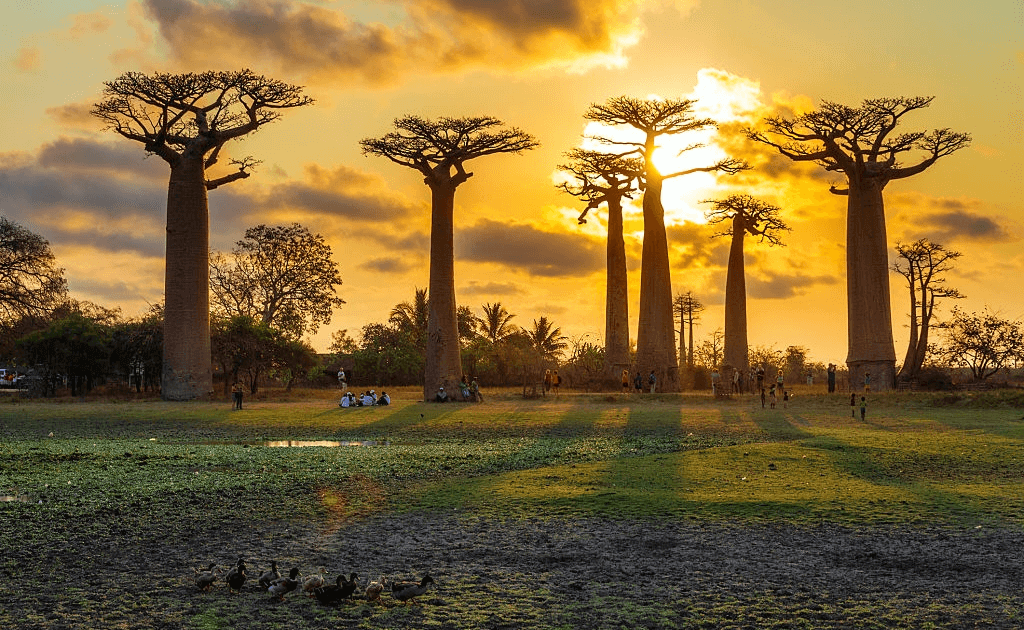
Madagascar is often called a “continent in miniature” because of its wide variety and unique nature of its endemic animals that are inhabited of islands. Excursions to these national parks of this state will interest tourists inclined to contemplation and research as well as its active tourist who are love trekking. Madagascar can be also considered the best place for beach holidays. However, you need to know that the hotels base on the islands are quite scarce and the beach infrastructure is very poorly developed. There are a few tourists that are preferred to stay on these islands of Nosy Be, Where there are more entertainment and better service. Here is an overview of the Top 14 Tourist Attractions in Madagascar.
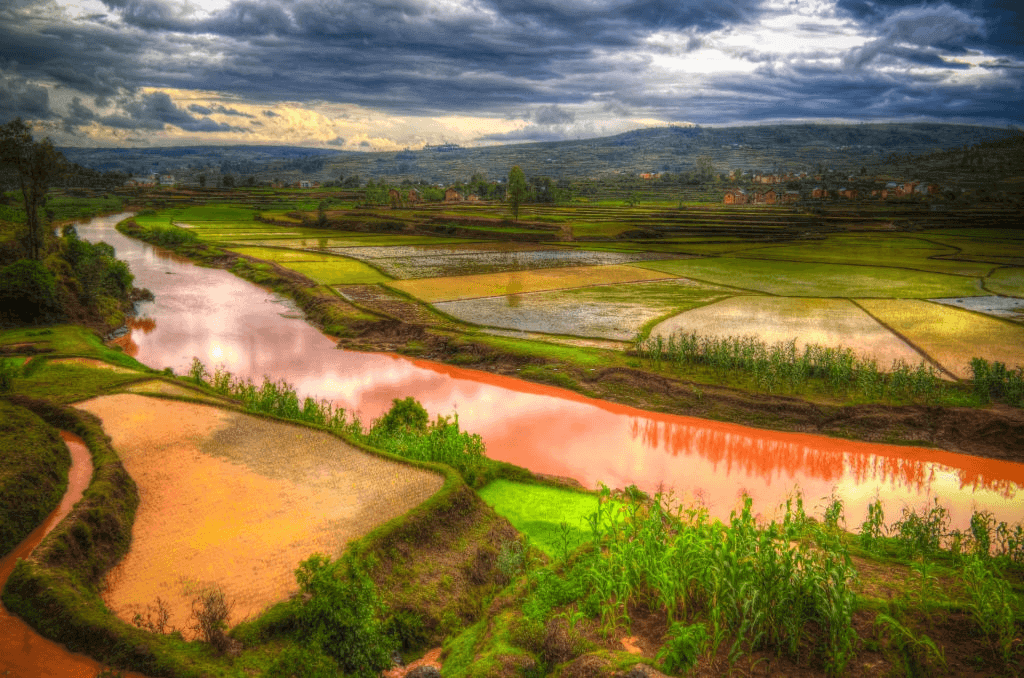
14. Lemurs – Symbol of Madagascar
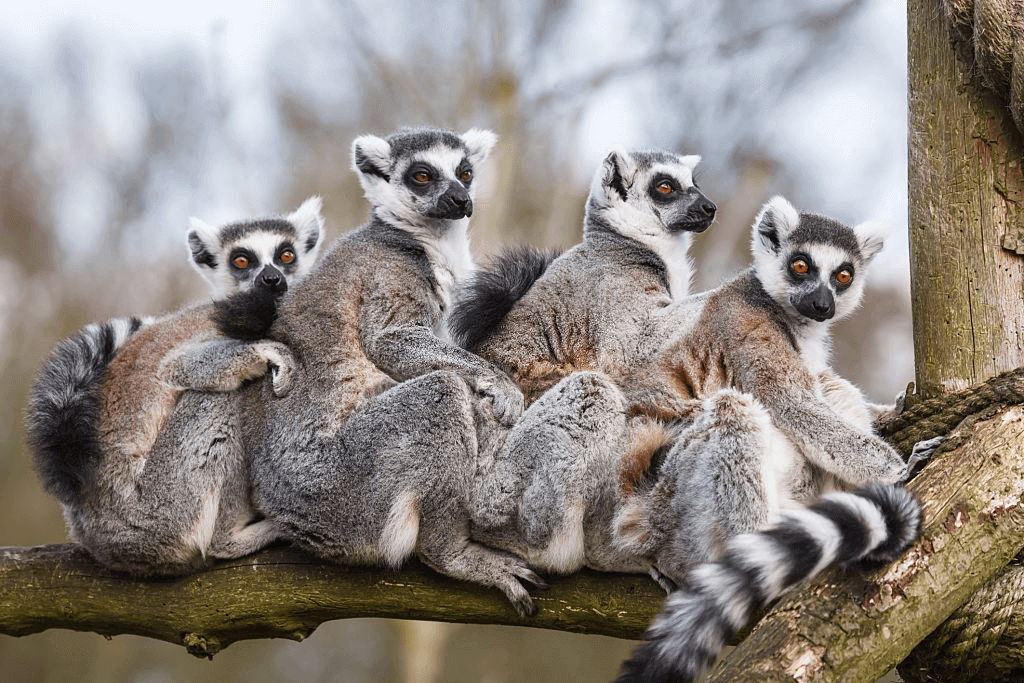
These funny animals are only live in the Comoros and Madagascar. That is considered to be the ancestors of a monkey. There are many species of these lemurs on these islands. One of the rarest of them is a small ah-ah. Which is according to mythology was considered the death of harbinger. This small animal is distinguished by a large surprised eye, long tail, and a flexible body. Thanks to the funny facial expression of the lemur that becomes a hero of many popular internet memes.
13. The Island of St. Mary
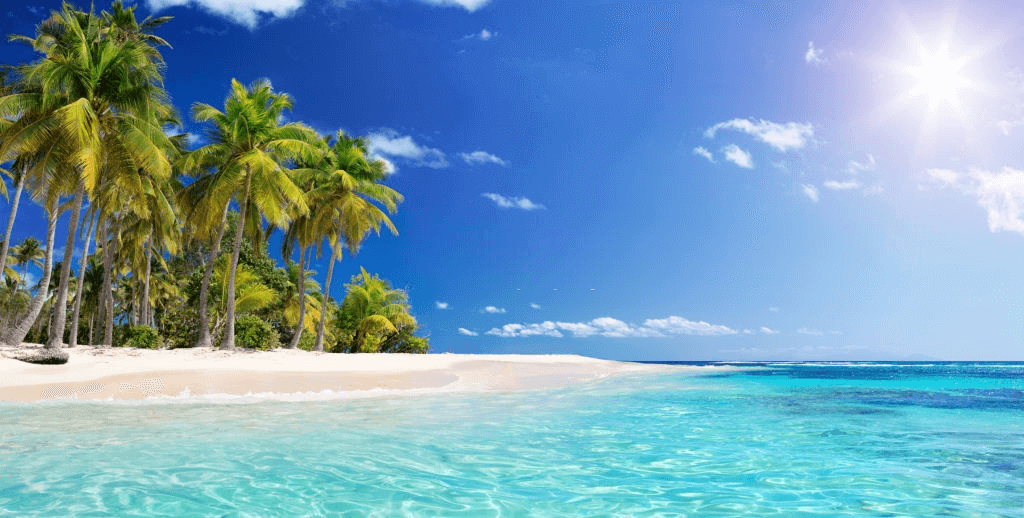
This island was located seven kilometers on the east coast of Madagascar. In orders to the virgin Mary, This island was named by French, The local Malagasy was name sound like a “Nosy Boraha”. Nowadays this place was a beach resort of a popular primarily among these Madagascans are themselves, But you can also see foreigners here in these islands. There is also a legend that is buried pirates several millions of pounds of treasure on St Mary’s island.
12. Nosy Be Island
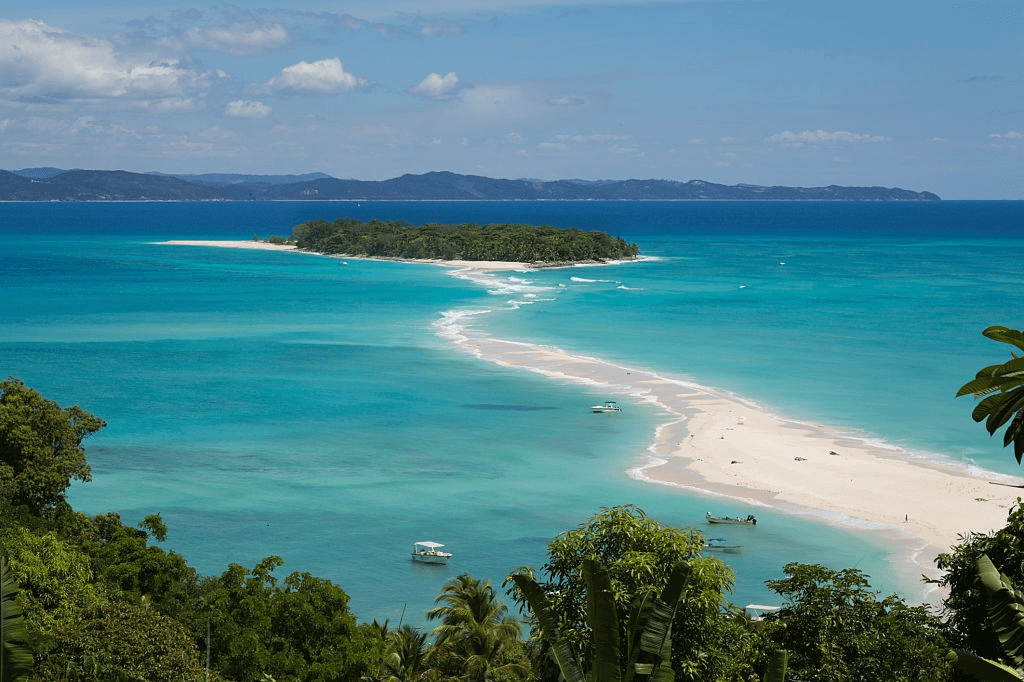
Nosy Be is a small island and one of the top premier tourist attractions places in Madagascar. Secluded places with its beautiful beaches are popular for foreign tourists. One of the largest Coffee and Ylang plantations are is in the country that is cultivated here. The local reserve of luck is you can find rare species of lemurs. There is a tired of lying on these beaches and its traditional holiday entertainment for travelers that are invited to visit this native village, that will ruin for a Portuguese fort and also a silver waterfall.
11. Lake Tritriva

Volcanic pond with its many hot springs in the central part of Madagascar. It was located in a former volcanic crater. The maximum depth of its about 180 meters. It was also the unknown source of replenishment water reserves Possibly it was underground. Since it was a dry season in water level rises. If you will throw an object into these lakes then you can find it in a valley which is lying below on this coast.
10. Volcano Ankaratra
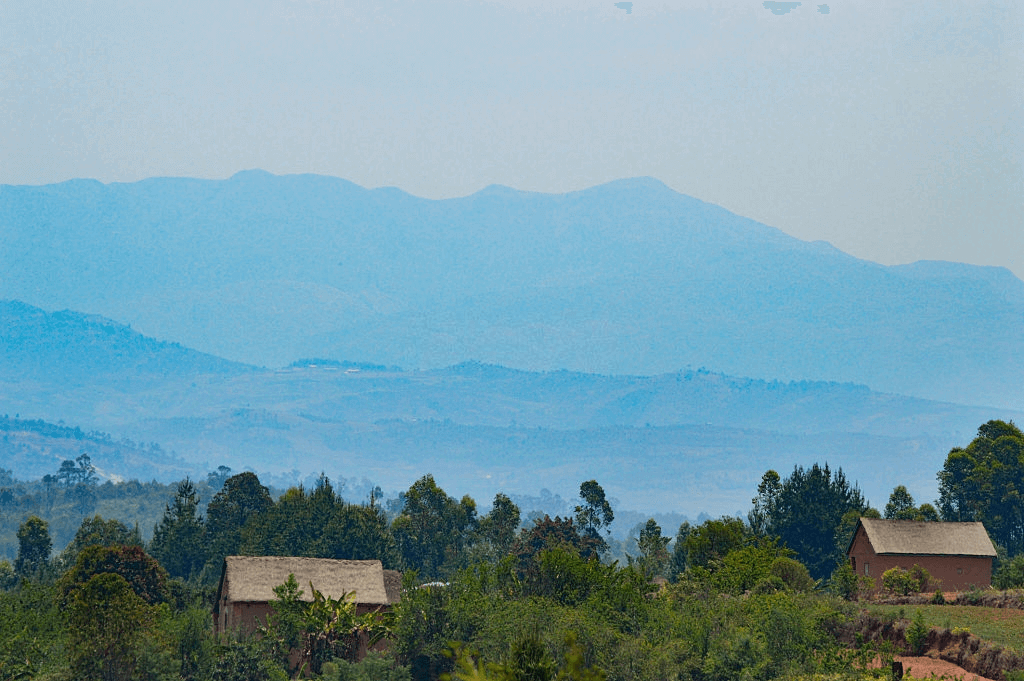
It was a part of Ankara massif. Which are formed as a result of this split of continents millions of years ago during the great formation of modern appearance to this planet. This volcano has been also extinct for a long time, Now it reminds itself of only the rate of earthquakes and steam emissions. The non-hazardous crater was a natural attraction that attracts its tourists. Who wants to “conquer” once it was raging Ankaratra.
9. Amber Mountain National Park
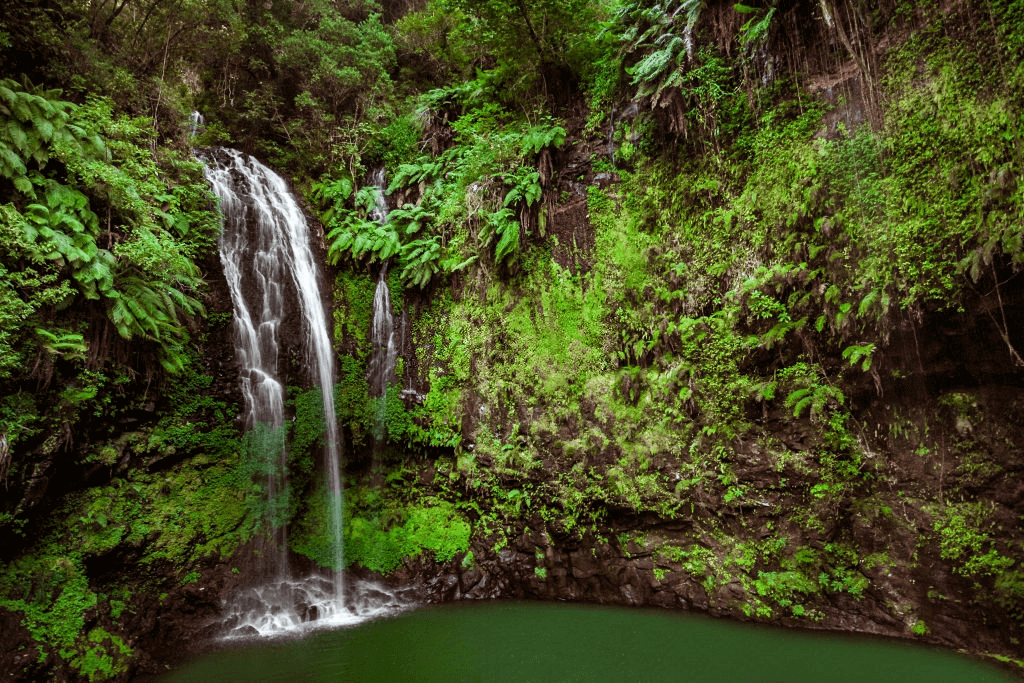
This natural landmark was located in the northern part of Madagascar. Unlike there is an adjacent arid valley, this park has a humid climate and rains every day. A huge amount of water is collected here that is provided to the nearest city. That’s is also around the 71000 hectares of rice fields and cultivated. On this territory of Montagnes D’Ambra. There is a miniature chameleon of Brukesia that is only about 3cm in length.
8. Rainforests Atsinanana
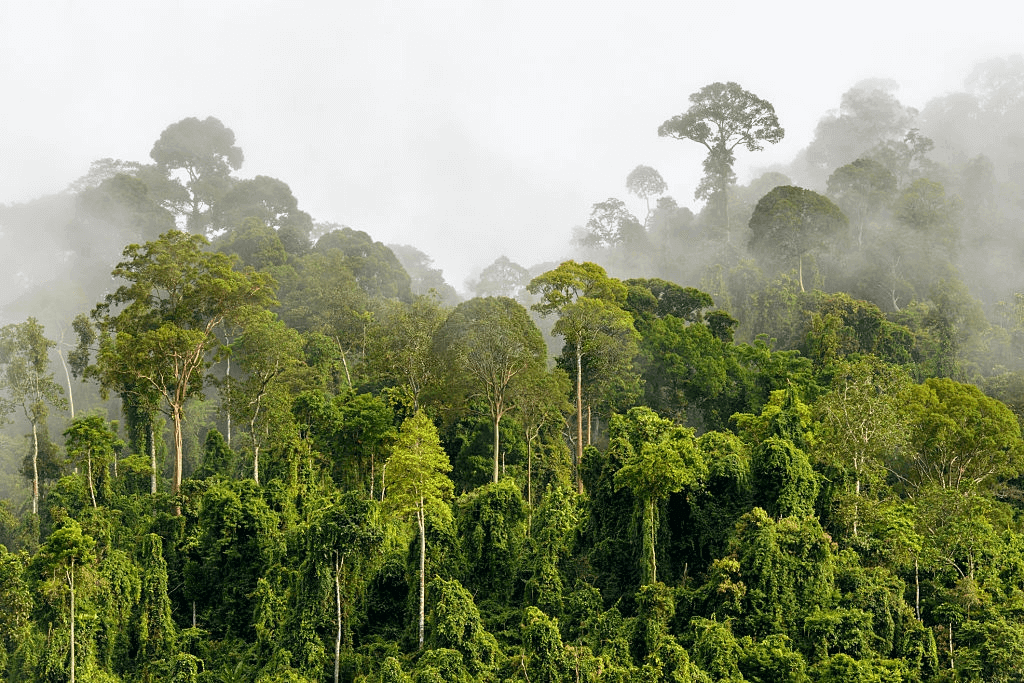
These prehistoric forests were located on the east coast of this island in Madagascar. There are More than 13, 000 plant species are recognized as endemic and unique. It was believed that an isolated ecosystem of this region was formed 61 million years ago. Rare species of animals are also found here, some of these are facing the threat of extinction. In 2011 these forests were included in the list of objects that are very soon disappeared from this earth.
7. Isalo National Park
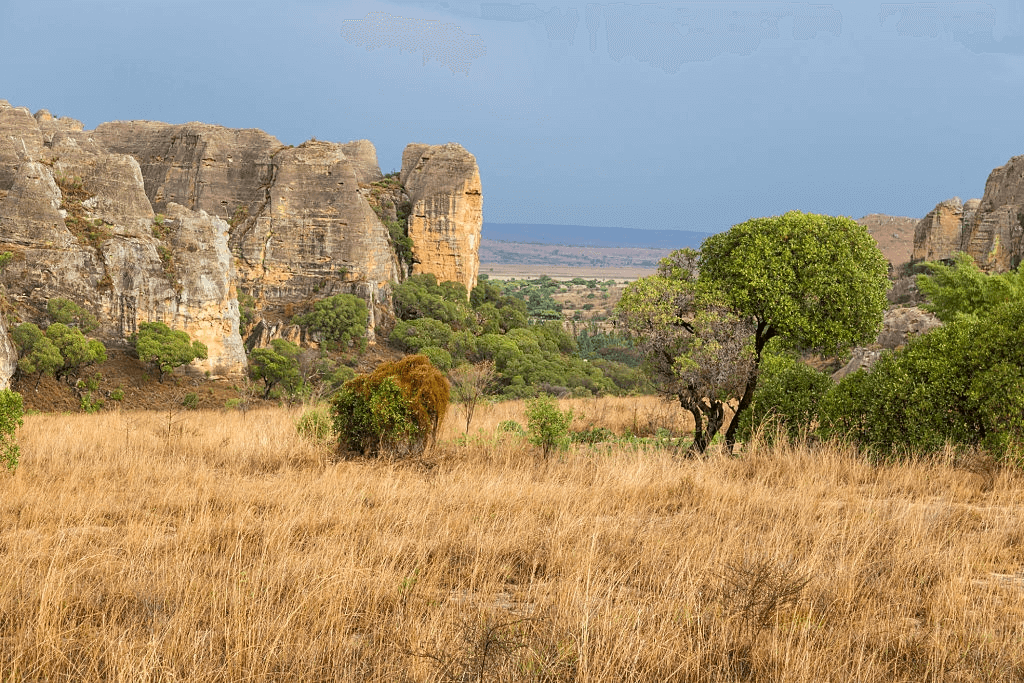
This nature reserve was created in 1963, Its landscapes have resembled an African shroud. There are almost no animals, rather a poor flora due to its inappropriate weather conditions. This Izalo was created to preserve the natural landscapes of the area. As they were recognized as valuable and unusual. This reserve has many scenic tourist routes along the natural river of these channels.
6. Rova of Antananarivo
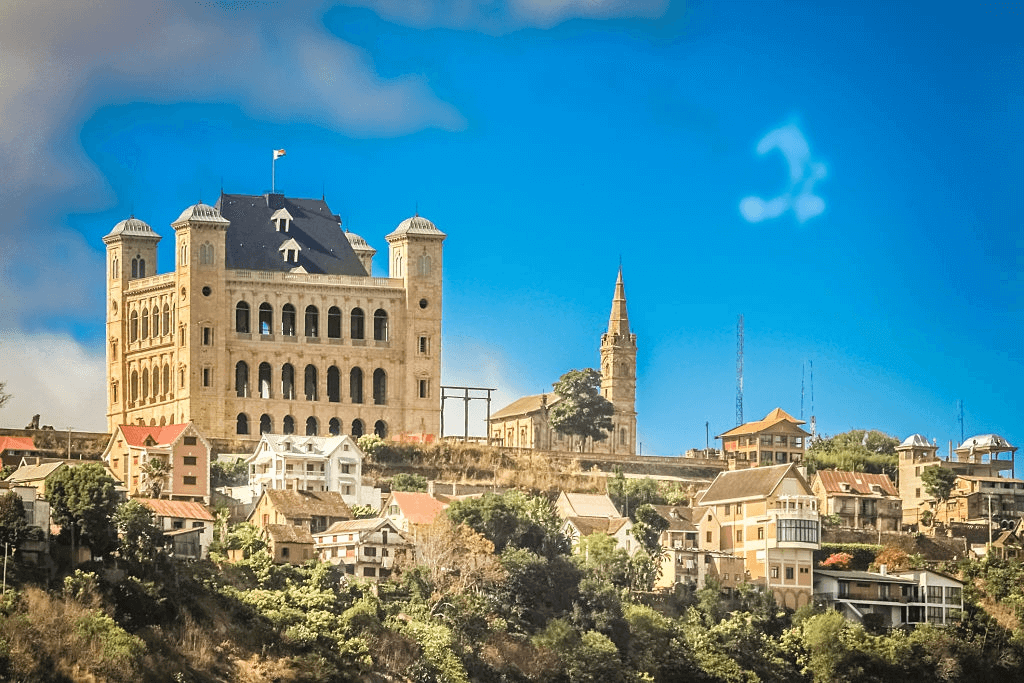
It was located in Antananarivo on Mount Analamanga that is almost 1.5km from above sea levels. This palace was originally made of wood and later it was lined with stone. This building was built in the 19th century by the first queen of Ranavaluna island. After the fire in 1994 but it still did not restore. From the mountains of Analamanga offers panoramic views of surroundings from here you can view the whole city that is clearly visible.
5. Andafiavaratra Palace
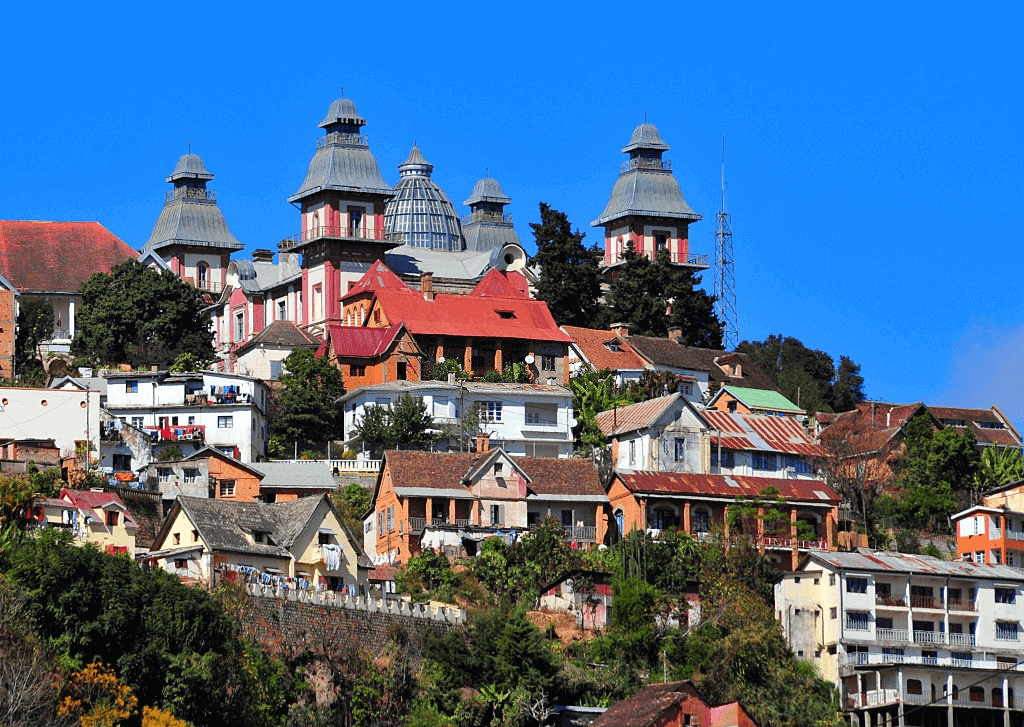
This palace was located in the capital. It was used to be the residence of Prime Minister Rainilayarivuni. Who headed this government at the end of the 19th century. Now there was a museum is in this building. Where more than 1476 exhibits are exhibited. These artifacts are of great historical importance for the history and culture of this country. Several items were restored and came here after one of the great fire of 1996 at this Ruva Palace.
4. Royal Hill of Ambohimanga
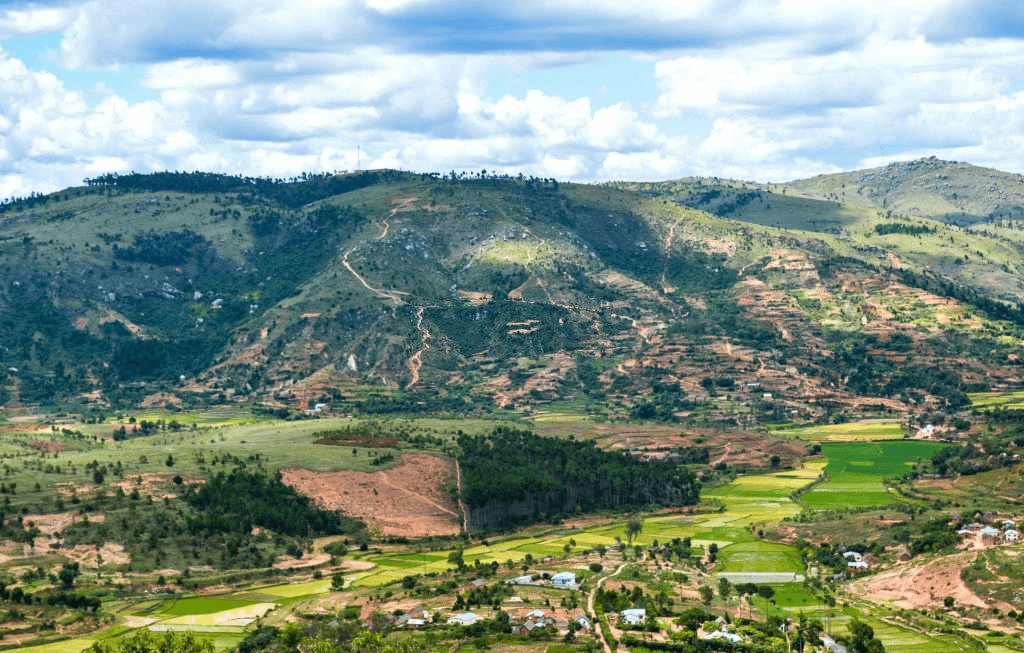
The historical monuments of valuable evidence of Malagasy culture. Previously it was a large city all around the hill. Where the royal residence of these island rulers was located. It was believed that a settlement flourished by the 16th century. This hill was ritual significance rituals and scared actions were held here for many centuries. This area is of particular importance to the identity of Malagasy, as it will keep the secrets of their traditional cultures.
3. Tsingy de Bemaraha Nature Reserve
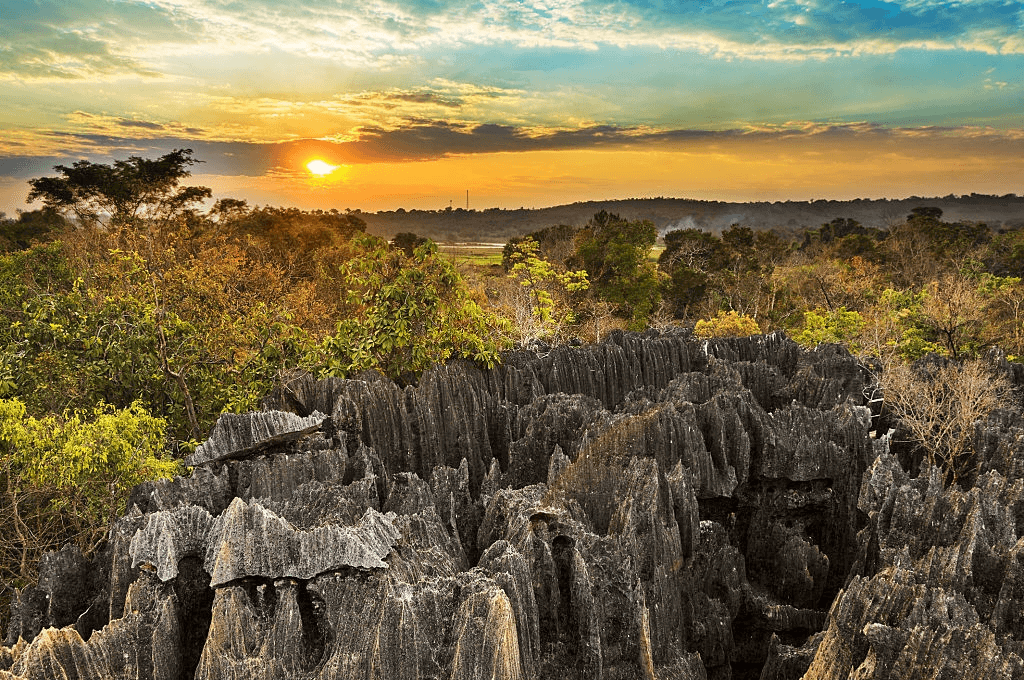
This territory was unusual karst landscapes of rocks that resemble a stone forest. The road of the reserve is a separate adventure. Since you will have to overcome several kilometers of impassability and difficult walking routes. So hikers physically prepared to tourists that will master on such a trip.
2. Baobabs Avenue
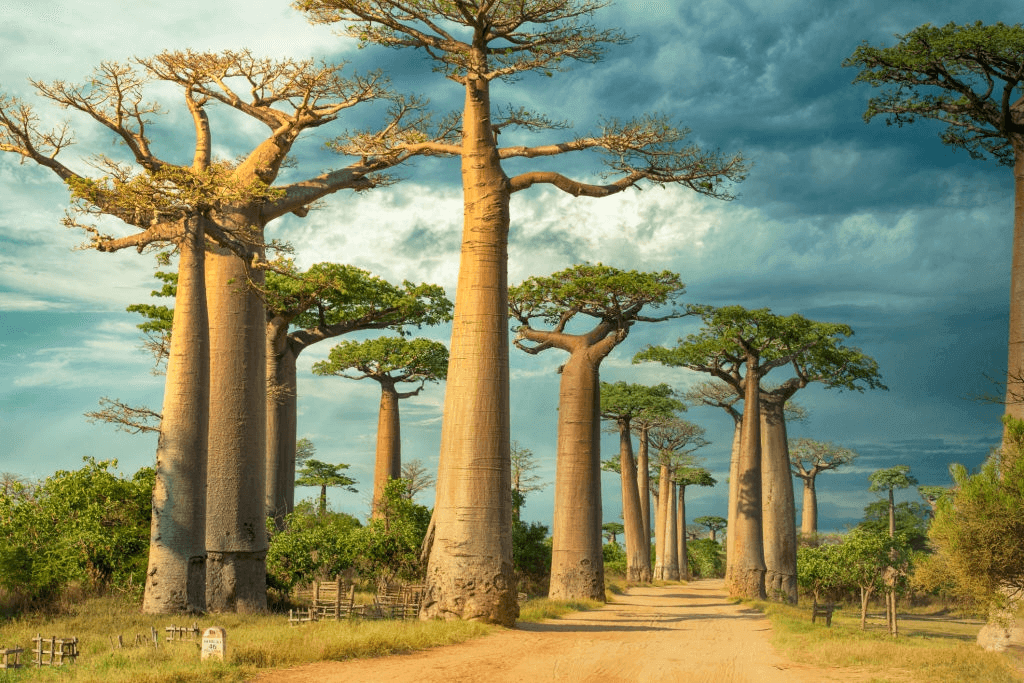
The road between the settlements of Beloni and Morondava that are attracting tourists from all over the world. This baobab is also popular for Tourist Attractions in Madagascar. There is a giant baobab are also grows on the edges of this “avenue” many of these are hundreds of years old. The height of these unusual trees reaches about 35 meters, The trunk girth can also be a couple of 11 meters. The alley was in a protected area. The local people believe that all of the Madagascar forests from this baobab.
1. Antananarivo
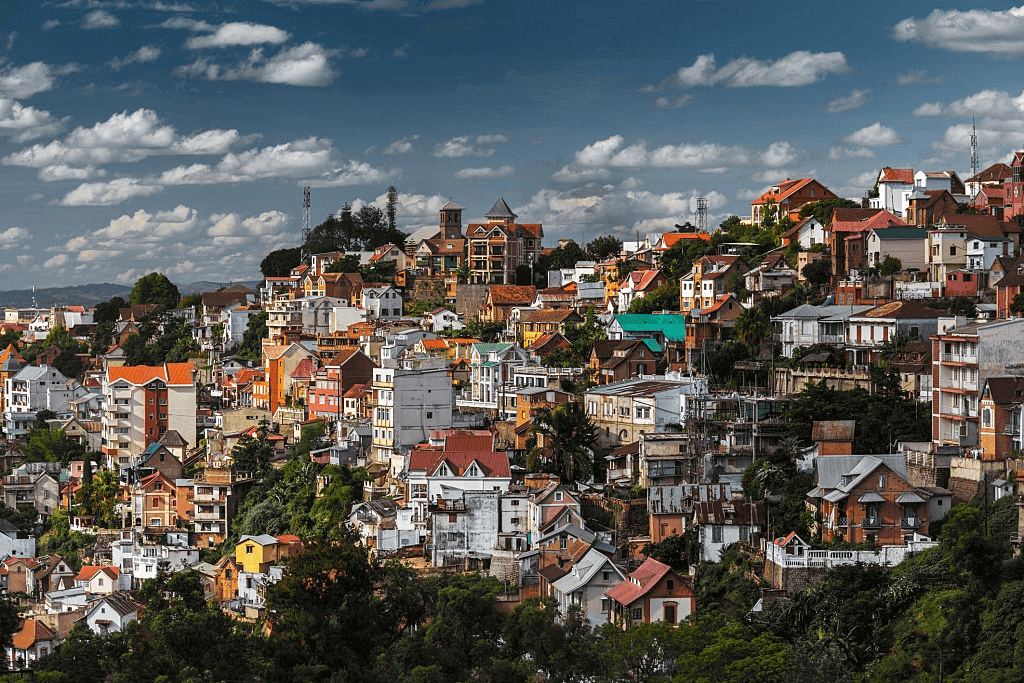
The capital of the state is translated from the local languages as “City of a Thousand.” Among these are the inhabitant’s walks to the affectionate diminutive name of this city is “Tana.” The city was strongly influenced by the French, Who left it only in the 1961s. In the centers of the city, you can easily find several shops with their french names. There are also french hotels and many bakeries offering fresh croissants. Therefore Antananarivo is one of the Top Tourist Attractions in Madagascar.
Related Articles
Leave a reply cancel reply.
Your email address will not be published. Required fields are marked *
Save my name, email, and website in this browser for the next time I comment.

The Ultimate Guide to a 24-Hour Visit In Casablanca

10 Common Mistakes To Avoid On Santorini Island

Relaxing On The Red Beach in Santorini, A Must-Visit Destination In Greece

A Vacation in Fira – Navigating The Charming Streets Of Santorini, Greece

Top 10 Serene Beaches To Visit In Santorini Island

10 Unforgettable Experiences On Santorini Island
- Travel in Romania

How To Find The Best Tapas In Barcelona

What to eat in Thailand. Thai dishes recommended for travelers

Best travel destinations for vegans

Experiencing the tea ceremony in Japan, a spiritual tradition

Japanese food. Culinary habits in Japan

What to drink in Iceland. Which are the most famous Icelandic drinks

What Not to Do in A Safari

How to Hitchhike Safely When Traveling

Photography Etiquette: What Not to Capture When Traveling

Mistakes to Avoid in Mount Everest Base Camp

What Not to Do When Visiting the Egyptian Pyramids

How much does a holiday in Iceland cost? Is Iceland an Expensive Country to Visit?
- Travel Stories
Top 10 tourist attractions in Madagascar
Madagascar - Nosy Be / Photo: Canva Pro
Madagascar , the fourth largest island in the world, is a treasure trove of natural wonders and unique wildlife. With its stunning landscapes, diverse ecosystems, and rich cultural heritage, it offers many tourist attractions. In this article, we will explore the top 10 tourist attractions in Madagascar , showcasing the country’s remarkable beauty and captivating experiences.
Five interesting and intriguing facts about Madagascar

1. Madagascar is the fourth largest island in the world , located off the southeastern coast of Africa in the Indian Ocean. It is known for its unique and diverse ecosystem, with most of its plant and animal species found nowhere else on Earth. 2. The island is home to the famous lemurs , primates found only in Madagascar. There are over 100 different species of lemurs, ranging from the tiny mouse lemurs to the larger indri lemurs known for their haunting calls. 3. Madagascar is also known for its baobab trees , which are iconic symbols of the island. These ancient and distinctive trees can live for thousands of years and have unique adaptations to survive the arid conditions in certain parts of Madagascar. 4. The country has a rich cultural heritage . The Malagasy people, who comprise most of the population, have a unique blend of African, Arab, and Southeast Asian influences in their traditions, language, and cuisine. 5. Madagascar is a biodiversity hotspot with a staggering flora and fauna. It is estimated that around 90% of the island’s wildlife is endemic, meaning it cannot be found anywhere else. This includes the famous chameleons, colorful frogs, and numerous species of reptiles and birds.
Best tourist attractions in Madagascar
10 historical wonders of antananarivo, the capital city of madagascar.

Antananarivo , the capital city of Madagascar, is a treasure trove of historical wonders that will transport you back in time. From ancient palaces to sacred sites , this vibrant city offers a glimpse into the rich cultural heritage of the island nation. Here are the top 10 tourist attractions in Antananarivo that you shouldn’t miss.
1. Rova of Antananarivo : Perched on a hilltop, the Rova is the city’s iconic symbol. This royal palace complex was once the residence of the Merina kings and queens. Although a fire partially destroyed it in 1995, ongoing restoration efforts have revived its former glory.
2. Andafiavaratra Palace : Located within the Rova complex, this palace was the Prime Minister’s official residence during the monarchy. Today, it houses a museum that showcases artifacts and exhibits related to Madagascar’s history and culture.
3. Ambohimanga : Just a short drive from the city, Ambohimanga is a UNESCO World Heritage site and a sacred hill that holds great significance for the Malagasy people. Explore the royal palace, ancient tombs, and the stunning panoramic views of the surrounding countryside.
4. Independence Avenue : This bustling street is the heart of Antananarivo, lined with shops, restaurants, and historical buildings. Take a stroll along the avenue, soak in the lively atmosphere, and admire the colonial architecture.
5. Analakely Market : Immerse yourself in the vibrant local culture at this bustling market. You’ll find many goods to browse and purchase from fresh produce to handicrafts. Don’t forget to haggle for the best prices!
6. Queen’s Palace Museum : Located in the heart of the city, this museum offers a fascinating insight into the lives of the Merina royalty. Admire the intricate woodwork, royal costumes, and historical artifacts on display.
7. Tsimbazaza Zoo : If you’re traveling with family, visiting Tsimbazaza Zoo is a must. This zoological and botanical park is home to a diverse range of Madagascar’s unique wildlife, including lemurs, chameleons, and various bird species.
8. Lake Anosy : Take a break from the city’s hustle and bustle at Lake Anosy. This picturesque lake is surrounded by lush greenery and offers a tranquil setting for a leisurely walk or a picnic. Don’t miss the iconic Monument of Independence, which stands proudly on an island in the lake.

9. Soarano Train Station : Step back in time at this charming train station, which dates back to the early 20th century. Marvel at the vintage locomotives and explore the small museum that showcases the history of Madagascar’s railway system.
10. Faravohitra Church : This beautiful Catholic church is perched on a hill and offers panoramic city views. Admire the stunning stained glass windows and the peaceful ambiance of this sacred place.
Antananarivo’s historical wonders are a testament to the island’s rich and diverse heritage. Whether you’re a history enthusiast or simply curious about the local culture, these top 10 tourist attractions will leave you with lasting memories of visiting Madagascar’s capital city. So, pack your bags and get ready to embark on a journey through time in Antananarivo!
9 Exploring the Rich Marine Life of Nosy Tanikely

Located off the northwest coast of Madagascar, Nosy Tanikely is a small island boasting some of the region’s most diverse and vibrant marine ecosystems. The island is part of the Nosy Be archipelago and is a popular destination for snorkeling and diving enthusiasts.
As you approach Nosy Tanikely, you’ll be greeted by crystal-clear turquoise waters teeming with life. A coral reef, home to various marine species, surrounds the island. Snorkeling in these waters is like entering a new world, where you’ll encounter colorful coral formations, schools of tropical fish, and even the occasional sea turtle or dolphin.
One of the highlights of exploring the marine life of Nosy Tanikely is the opportunity to swim with whale sharks. These gentle giants, which can grow up to 40 feet in length, migrate to the waters around Nosy Tanikely between September and December. Swimming alongside these magnificent creatures is an experience that will stay with you for a lifetime.
For those who prefer to stay dry, glass-bottom boat tours are available, allowing you to observe the underwater world without getting wet. These tours provide a unique perspective on the marine life of Nosy Tanikely, as you’ll be able to see the coral reefs and fish from the comfort of a boat.
Aside from the marine life, Nosy Tanikely also offers stunning beaches and hiking trails. The island is covered in lush vegetation, providing a picturesque backdrop for a stroll or a picnic on the beach. You can also climb to the top of the island’s lighthouse, which offers panoramic views of the surrounding ocean and neighboring islands.
To make the most of your visit to Nosy Tanikely, it’s recommended to hire a local guide who can show you the best spots for snorkeling and diving. These guides are knowledgeable about the area and can help you navigate the underwater world safely.
Regarding accommodation, a few options are available on Nosy Tanikely itself, including a small eco-lodge. However, most visitors stay on the nearby island of Nosy Be, which offers a wider range of hotels and resorts.
8 Cultural Delights in the Royal Hill of Ambohimanga

Madagascar, the fourth largest island in the world, is a treasure trove of natural wonders and cultural delights. While the country is famous for its unique wildlife and stunning landscapes, it also boasts a rich cultural heritage worth exploring. One of the must-visit destinations for cultural enthusiasts is the Royal Hill of Ambohimanga .
Perched on a hill just outside the capital city of Antananarivo, the Royal Hill of Ambohimanga is a UNESCO World Heritage site that offers a glimpse into Madagascar’s royal history. This ancient city was once the residence of the Merina kings, who ruled over the central highlands of Madagascar for centuries.
As you make your way up the hill, you’ll be greeted by a series of stone gates, each representing a different stage of the royal journey. These gates, known as “rova,” are adorned with intricate carvings and serve as a testament to the craftsmanship of the Merina people. Walking through these gates, you can’t help but feel a sense of awe and wonder at the grandeur of the place.
At the heart of the Royal Hill of Ambohimanga lies the Rova of Ambohimanga, the royal palace. This impressive structure, built entirely out of wood, is a masterpiece of Malagasy architecture. Inside, you’ll find a collection of artifacts and historical objects that offer a fascinating insight into the lives of the Merina kings.
One of the highlights of a visit to the Royal Hill of Ambohimanga is the chance to explore the sacred sites that dot the hill. These sites, known as “fady,” are of great spiritual significance to the Malagasy people. From the sacred spring to the tomb of the first Merina king, each site has its unique story.
As you wander through the hill, you’ll also come across several traditional houses preserved to showcase the daily life of the Merina people. These houses, made of local materials such as bamboo and thatch, provide a glimpse into the traditional architecture and way of life of the Malagasy people.
To truly immerse yourself in the cultural delights of the Royal Hill of Ambohimanga, be sure to visit during one of the many festivals that take place throughout the year. From the lively music and dance performances to the colorful processions, these festivals offer a unique opportunity to experience the vibrant culture of Madagascar.
As you explore the Royal Hill of Ambohimanga, take a moment to soak in the breathtaking views of the surrounding countryside. From the hilltop, you can see the sprawling city of Antananarivo, with its bustling markets and vibrant street life. It’s a reminder of the rich tapestry of cultures that make up Madagascar.
7 Unforgettable Experiences at Isalo National Park

Another great experience when visiting Madagascar can be found at Isalo National P ark. This place will leave you in awe of its beauty and diversity and one of the best tourist attractions in Madagascar.
Isalo National Park is located in the southern part of Madagascar and covers an area of over 800 square kilometers. It is known for its dramatic sandstone formations, deep canyons, and natural pools. The park is a haven for hikers and nature enthusiasts, offering a variety of trails that lead to breathtaking viewpoints and hidden waterfalls.
As you enter the park, you will be greeted by towering cliffs and rugged landscapes that seem straight out of a movie. The sandstone formations, shaped by wind and water over millions of years, create a surreal atmosphere unlike anything you have ever seen. It’s no wonder Isalo National Park has been dubbed the “Grand Canyon of Madagascar.”
One of the most popular trails in the park is the Canyon des Singes, or Monkey Canyon. As you hike through this narrow canyon, you will be surrounded by towering cliffs on both sides, creating a sense of adventure and excitement. Keep an eye out for the ring-tailed lemurs that call this place home – they are a common sight known for their playful antics.
Another must-visit spot in Isalo National Park is the Piscine Naturelle, a natural swimming pool in the park’s heart. After a long day of hiking, there’s nothing better than taking a refreshing dip in the crystal-clear waters of this pool. Surrounded by lush vegetation and towering cliffs, it’s a truly magical experience that will leave you feeling rejuvenated.
For those seeking a more challenging adventure, the trek to the Namaza viewpoint is a must. This trail takes you through dense forests and rocky terrain, rewarding you with panoramic views of the park and surrounding landscapes. It’s a strenuous hike, but the breathtaking vistas at the top make it all worthwhile.
If you’re lucky, you might even spot some of the park’s unique wildlife during your visit. Isalo National Park is home to various species, including the Verreaux’s sifaka, a type of lemur known for its acrobatic skills. Keep your eyes peeled and your camera ready – you never know what you might encounter on your journey through this natural wonderland.
As you explore Isalo National Park, you will be struck by its beauty and tranquility. The park offers a sense of serenity that is hard to find in today’s fast-paced world. Whether hiking through canyons, swimming in natural pools, or simply taking in the breathtaking views, you will immerse yourself in a world of natural wonders that will stay with you long after you leave.
6 Witnessing Unique Wildlife at Ranomafana National Park

Another top tourist attraction in Madagascar is Ranomafana National Park , a haven for nature enthusiasts and wildlife lovers alike.
Located in the southeastern part of Madagascar, Ranomafana National Park is a lush rainforest covering over 160 square miles. It was established in 1991 to protect the critically endangered golden bamboo lemur found only in this region. Since then, the park has become a hotspot for ecotourism, attracting visitors from all over the globe.
As you step into the park, you are immediately greeted by a symphony of sounds. The air is filled with the calls of various bird species, the rustling of leaves, and the occasional roar of a lemur. The dense vegetation creates a sense of mystery and adventure, as you never know what fascinating creature you might encounter next.
One of the highlights of visiting Ranomafana National Park is the opportunity to spot lemurs in their natural habitat. With over 12 species of lemurs residing in the park, you are almost guaranteed to see these charismatic primates during your visit. From the playful ring-tailed lemurs to the elusive aye-aye, each species has its unique characteristics and behaviors that will leave you in awe.
The park offers guided tours led by experienced local guides with intimate knowledge of the area. These guides are experts at spotting lemurs and other wildlife, and they will share their knowledge and stories with you as you explore the park. They will point out hidden treasures, such as chameleons camouflaged in the foliage or colorful frogs hopping along the forest floor.
The golden bamboo lemur is one of the most popular lemurs to spot in Ranomafana National Park. This rare and endangered species is known for its distinctive golden fur and its love for bamboo. Watching these lemurs gracefully leap from tree to tree, munching on bamboo shoots, is a truly mesmerizing experience.
Apart from lemurs, the park is also home to various other wildlife. You might come across colorful reptiles, such as the panther chameleon or the leaf-tailed gecko, blending seamlessly into their surroundings. If you’re lucky, you might even spot a fossa, a cat-like carnivore that is the top predator in Madagascar.
As you explore the park, you will also be treated to breathtaking views of cascading waterfalls, crystal-clear streams, and picturesque landscapes. The park is crisscrossed by numerous hiking trails, allowing you to immerse yourself in the beauty of nature. Whether you choose a short, leisurely walk or a more challenging trek, you will be rewarded with stunning vistas and unforgettable memories.
5 Adventures in the Rainforests of Masoala National Park

Covering an area of over 2,300 square kilometers, Masoala National P ark is located in the northeastern part of the island. It is home to various flora and fauna, including several endangered species. As you step into this lush rainforest, you will be greeted by the symphony of chirping birds and the rustling of leaves, creating a magical atmosphere that will transport you to another world.
One of the highlights of exploring Masoala National Park is the opportunity to encounter the iconic lemurs. These charismatic primates are endemic to Madagascar and can be found in various species within the park. From the playful ring-tailed lemurs to the elusive aye-ayes, you can observe these fascinating creatures up close in their natural habitat.
As you venture deeper into the rainforest, you will see breathtaking waterfalls cascading down moss-covered rocks. The crystal-clear pools beneath the falls invite you to take a refreshing dip, providing a welcome respite from the tropical heat. The lush vegetation surrounding the waterfalls creates a picturesque backdrop, making it a perfect spot for nature enthusiasts and photographers.
For those seeking a more adrenaline-fueled adventure, Masoala National Park offers thrilling hiking trails that will take you through dense forests and rugged terrains. As you navigate the winding paths, you will encounter many plant species, some of which are found nowhere else on Earth. The knowledgeable guides will share their expertise, pointing out medicinal plants and explaining the intricate relationships between the flora and fauna.
One of the most unique experiences in Masoala National Park is the opportunity to explore the marine ecosystem. The park encompasses much of the coastline, including pristine coral reefs and mangrove forests. Snorkeling or diving in these waters will reveal a vibrant world teeming with colorful fish, sea turtles, and even the occasional whale or dolphin sighting.
To truly immerse yourself in the wonders of Masoala National Park, consider spending a night or two in one of the eco-lodges within the park. These rustic accommodations offer a chance to disconnect from the outside world and fully embrace the tranquility of the rainforest. Falling asleep to the sounds of nature and waking up to the melodious songs of birds will be an experience you will cherish forever.
As you explore Masoala National Park, it is important to remember that conservation efforts are crucial to preserving this unique ecosystem. The park authorities have implemented strict regulations to protect the flora and fauna, and visitors are encouraged to follow responsible tourism practices. By respecting the environment and supporting local communities, you can contribute to the long-term sustainability of this natural treasure.
4 Immersing in Nature at Andasibe-Mantadia National Park

Located in the eastern part of the island, Andasibe-Mantadia National Park is a protected area that encompasses two distinct parks: the smaller but more accessible Andasibe National Park and the larger, more remote Mantadia National Park. Together, they cover over 150 square kilometers, making it a perfect destination for nature enthusiasts.
As you step into the park, you’ll be greeted by a symphony of sounds. The air is filled with the calls of various species of lemurs, the most famous of which is the Indri. Known for its hauntingly beautiful song, the Indri is the largest lemur species and can only be found in Madagascar. Watching these charismatic creatures leap from tree to tree is an experience you won’t soon forget.
But lemurs are not the only inhabitants of this lush forest. Andasibe-Mantadia National Park is also home to various bird species, reptiles, and amphibians. If you’re lucky, you might spot the colorful Parson’s chameleon or the tiny Mantella frog, both endemic to Madagascar. The park is also a haven for birdwatchers, with over 100 species of birds, including the rare Madagascar serpent eagle and the vibrant blue coua.
As you explore the park, you’ll be surrounded by a breathtaking display of flora. Towering trees, some over 800 years old, create a dense canopy that filters the sunlight, casting a magical glow on the forest floor. The park is also known for its orchids, with over 100 species within its boundaries. Walking along the well-maintained trails, you’ll be treated to a kaleidoscope of colors and scents, a true feast for the senses.
For those seeking a more adventurous experience, the Mantadia National Park offers a rugged and challenging terrain. Its steep slopes, dense vegetation, and hidden waterfalls make it a paradise for hikers and nature enthusiasts. The park is home to several species of lemurs, including the diademed sifaka and the black-and-white ruffed lemur. Exploring this remote part of the park will give you a sense of adventure and a deeper appreciation for Madagascar’s natural wonders.
3 Discovering the Pristine Beauty of Nosy Be Island

As you step on Nosy Be Islan d, you’ll immediately be greeted by its pristine beauty. The island is surrounded by crystal-clear turquoise waters, which are perfect for snorkeling and diving. The coral reefs teem with colorful fish and other marine life, creating a mesmerizing underwater world. Whether you’re an experienced diver or a beginner, plenty of dive centers on the island offer courses and guided tours.
If you prefer to stay above water, you can take a boat trip to Nosy Komba Island. This small island is home to a population of lemurs, the iconic primates of Madagascar. As you explore the lush forests, you’ll have the opportunity to see these adorable creatures up close and personal. Just be sure to follow the guidelines the local guides provide to ensure your and the lemurs’ safety.
You can trek through the Lokobe Nature Reserve on Nosy Be Island. This protected area is a haven for endemic species, including the black lemur and the leaf-tailed gecko. As you hike through the dense rainforest, you’ll be surrounded by the sounds of exotic birds and the scent of tropical flowers. It’s an immersive experience that will leave you in awe of Madagascar’s biodiversity.
After exploring, you can unwind on one of Nosy Be’s stunning beaches. Ambatoloaka Beach is a popular spot for sunbathing and swimming, with its soft white sand and calm waters. If you’re feeling adventurous, you can try your hand at kitesurfing or windsurfing, as the island’s breezy conditions make it an ideal destination for these water sports.
As the sun sets, you can head to Hell-Ville, the main town on Nosy Be Island. Here, you’ll find a vibrant nightlife scene, with bars and restaurants offering delicious local cuisine and live music. Don’t miss the opportunity to try some of the island’s specialties, such as zebu steak and vanilla-infused rum.
If you want to learn more about the local culture, you can visit the Nosy Be Museum. This small museum showcases the island’s history and traditions, including its ties to the Sakalava people. You can also browse through the local markets, where you’ll find an array of handicrafts and souvenirs to take home.
No trip to Nosy Be Island would be complete without a visit to the Mont Passot viewpoint. Located at the highest point on the island, this viewpoint offers panoramic views of the surrounding landscape. On a clear day, you can see as far as the neighboring islands and the mainland of Madagascar. It’s a breathtaking sight that will leave you with lasting memories.
2 Unveiling the Mysteries of Tsingy de Bemaraha National Park

Located in the western part of the country, Tsingy de Bemaraha National Pa rk is a UNESCO World Heritage Site covering over 1,500 square kilometers. The park is known for its otherworldly landscape, characterized by sharp limestone formations that resemble a forest of stone needles. These formations, known as tsingy , were created over millions of years through erosion.
Exploring Tsingy de Bemaraha National Park is like stepping into another world. As you venture into the park, you’ll find yourself surrounded by towering limestone pinnacles, deep canyons, and hidden caves. The park is home to many plant and animal species, many of which are found nowhere else on Earth. From lemurs to chameleons, the park is a haven for wildlife enthusiasts.
One of the highlights of visiting Tsingy de Bemaraha National Park is the opportunity to hike through the tsingy. The park offers a trail network that allows visitors to explore this unique landscape up close. As you go through the narrow canyons and climb up the limestone formations, you’ll be rewarded with breathtaking views of the surrounding countryside.
For those seeking an adrenaline rush, the park also offers the chance to go rock climbing and rappelling. Scaling the sheer limestone cliffs is not for the faint of heart, but the exhilaration of reaching the top is well worth the effort. Just bring your sense of adventure and a good pair of hiking boots!
In addition to its natural wonders, Tsingy de Bemaraha National Park is also home to several cultural sites. The park is inhabited by the local Sakalava people, who deeply connect to the land. Visitors can learn about their traditions and way of life by visiting nearby villages and interacting with the locals.
To make the most of your visit to Tsingy de Bemaraha National Park, it’s best to hire a local guide. They can provide valuable insights into the park’s history, geology, and wildlife. They can also help you navigate the trails and ensure your safety during your visit.
As with any natural attraction, respecting the environment and following the park’s rules and regulations is important. Tsingy de Bemaraha National Park is a fragile ecosystem, and it’s our responsibility to preserve it for future generations. So, remember to stay on designated trails, avoid littering, and refrain from disturbing wildlife.
1 Exploring the Marvels of Avenue of the Baobabs in Madagascar

Located in the Menabe region of western Madagascar, the Avenue of the Ba obabs is a stretch of dirt road lined with majestic baobab trees. Some over 800 years old, these ancient giants tower above the landscape, creating a surreal and magical atmosphere. As you drive along the avenue, you can’t help but feel a sense of wonder and awe at the sheer size and beauty of these trees.
The baobabs, also known as “upside-down trees” for their peculiar shape, symbolize Madagascar. They have been featured in countless photographs and documentaries, captivating the imagination of people worldwide. Standing up to 30 meters tall, with massive trunks and branches that resemble roots, these trees are truly a sight to behold.
The best time to visit the Avenue of the Baobabs is sunrise or sunset when the golden light bathes the landscape, creating a magical ambiance. As the sun rises or sets, the baobabs cast long shadows on the road, adding to the mystical atmosphere. It’s a photographer’s dream come true, and you’ll find yourself snapping away, trying to capture the beauty of this place.
Aside from its visual appeal, the Avenue of the Baobabs also holds cultural significance for the local communities. The baobab trees are considered sacred by the Malagasy people, and they believe that these trees possess spiritual powers. Many locals come to the avenue to perform rituals and seek blessings from the trees, adding a spiritual dimension to the experience.
Exploring the Avenue of the Baobabs is not just about admiring the trees from a distance. Several walking trails allow you to get up close and personal with these giants. Walking among the baobabs, you’ll be amazed by their sheer size and the intricate patterns on their trunks. It’s a humbling experience that reminds us of the power and beauty of nature.
While the Avenue of the Baobabs is undoubtedly the main attraction, there are other things to see and do in the area. Nearby, you’ll find the Kirindy Forest, a biodiversity hotspot home to many wildlife, including lemurs, fossas, and various bird species. Exploring the forest is like stepping into a different world, where you can observe these unique creatures in their natural habitat.
Is it safe to go to Madagascar?
Madagascar is generally considered a safe destination for travelers. However, as with any other travel destination, it is important to take necessary precautions to ensure personal safety. While the country has a lower crime rate than other African nations, petty theft and pickpocketing can occur, particularly in crowded areas and tourist hotspots.
It is advisable to be vigilant, especially in urban areas, and take common-sense measures such as keeping valuables out of sight and avoiding walking alone at night. Additionally, it is recommended to stay informed about local conditions and follow any advisories issued by the government or embassies. Overall, exercising caution and being aware of one’s surroundings can provide a safe and enjoyable experience while visiting Madagascar.
Is Madagascar a cheap holiday destination?

With its unique and diverse landscapes, rich wildlife, and vibrant culture, Madagascar offers an incredible holiday experience. In terms of affordability, Madagascar can be considered a relatively budget-friendly destination.
While the cost of flights to the island may vary depending on the departure location, once there, accommodation, food, and transportation options tend to be quite affordable. A range of accommodations is available, from budget-friendly guesthouses and hostels to mid-range hotels, allowing travelers to find options that suit their budget.
Additionally, local street food and small restaurants offer inexpensive yet delicious meals, providing a taste of the local cuisine without breaking the bank. While certain activities, such as guided wildlife tours, may have higher costs, there are also many free or low-cost attractions, such as national parks and stunning beaches, where travelers can immerse themselves in the island’s natural beauty. Overall, Madagascar can be seen as an affordable holiday destination that offers incredible value for money.
When is the best time to visit Madagascar?
The best time to visit Madagascar is during the dry season, typically from April to November . During this time, the weather is generally warm and pleasant, with less rainfall and lower humidity. This makes it ideal for exploring the country’s diverse landscapes, including its stunning national parks, pristine beaches, and unique wildlife.
The dry season is also the best time for activities such as hiking, wildlife spotting, and snorkeling or diving in the crystal-clear waters. However, it’s important to note that Madagascar is a large island with varying climates, so depending on the region you plan to visit, it’s advisable to check the specific weather patterns for that area.
What is the biggest problem in Madagascar?

One of the biggest problems in Madagascar is extreme poverty. The majority of the country’s population lives below the poverty line, struggling to meet their basic needs. High unemployment rates, limited access to education, and inadequate healthcare services further exacerbate the poverty crisis.
Additionally, the country faces challenges in addressing environmental issues, such as deforestation and loss of biodiversity, which not only impact the well-being of the local population but also hinder economic development. Tackling poverty in Madagascar requires comprehensive strategies that focus on improving education, creating employment opportunities, and implementing sustainable environmental practices to alleviate the hardships faced by its people.
In conclusion, Madagascar offers diverse tourist attractions showcasing its unique natural beauty and cultural heritage. The top 10 tourist attractions in Madagascar include the Avenue of the Baobabs, Tsingy de Bemaraha National Park, Isalo National Park, Ranomafana National Park, Andasibe-Mantadia National Park, Nosy Be, Ifaty and Mangily, Antananarivo, Morondava, and the Royal Hill of Ambohimanga. These attractions allow visitors to explore stunning landscapes, encounter rare wildlife, immerse in local culture, and relax on beautiful beaches. Madagascar truly is a destination that captivates and delights travelers worldwide.
TukTuk Driver
Related posts.

Explore the Top 7 Most Beautiful Villages of Japan
Leave a reply cancel reply.
Your email address will not be published. Required fields are marked *
Save my name, email, and website in this browser for the next time I comment.

Prices in Romania. How much does a holiday in Romania cost

10 lesser-known Greek islands for a dream holiday

7 unusual places to visit in Romania

Loire Valley castles. Visiting France’s charming royale chateaux

One day trips from Athens

Top 7 Historic Edo-Era Landmarks in Tokyo

Top 10 most beautiful castles in Romania

TukTuk Travel Magazine is bringing you the best destinations in the world.
About Tuk Tuk Travel Magazine
About us, here .
Please contact us here !
TukTuk Magazine Instagram
Visit romania.

The Painted Monasteries of Northern Moldova Romania
The painted monasteries of Northern Moldova, Romania - a region called Bucovina - are a treasure trove of religious art ...

Best hotels to stay in Oradea, Romania
Looking for the best hotels in Oradea, Romania? Check out our roundup featuring Hotel B4, Hotel Glory, Ramada by Wyndham ...

Visiting the Danube Delta, in Romania
Discover the wonders of the Danube Delta, a hidden gem of vibrant flora and fauna, labyrinthine waterways, and diverse wildlife. ...

The Ultimate Guide to The Transfăgărășan Road
Discover the captivating beauty of the Transfăgărășan Road in Romania. This ultimate guide takes you on a thrilling journey through ...

Unveiling the Dark Legends of Vampire Tourism in Romania
Embark on a mesmerizing journey as we unveil the dark legends of vampire tourism in Romania. Explore spine-chilling tales and ...
Recent Posts

© 2022 TukTuk Mag Romania - TukTuk Travel Mag is the English "brother" version of TukTuk.ro .
- Destinations
- Food & Drink
- Travel Tips
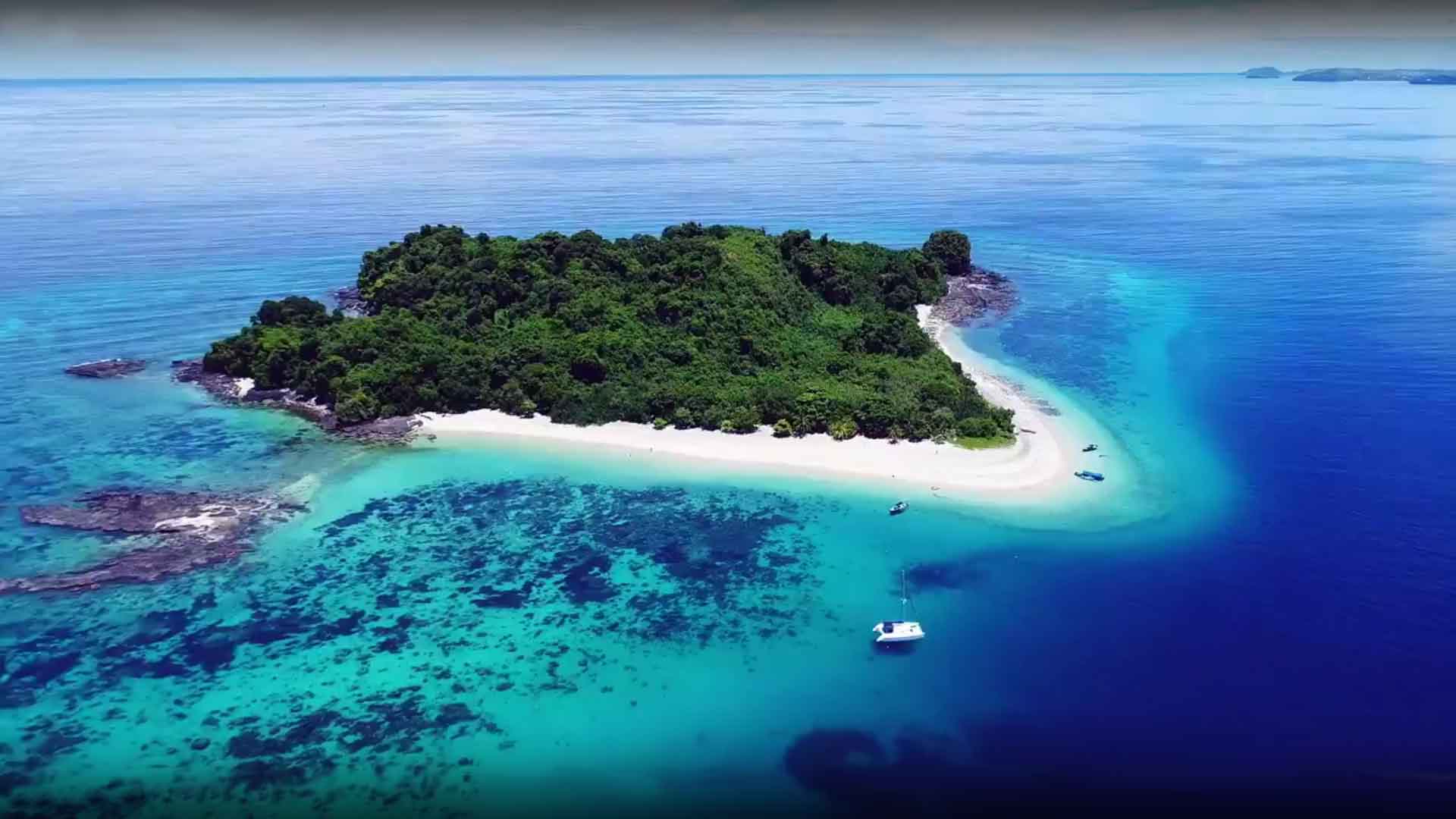
An island of passion
And also...
- Motorized raid
- Kitesurf / Windsurf
- Birdwatching
- Photography
5 good reasons to come to Madagascar
Ile paradisiaque aux couleurs flamboyantes, Madagascar vous offre un éventail de paysages tous plus incroyables les uns que les autres. Plages de sable blanc, désert sableux ou forêts tropicales, un spectacle époustouflant vous attend!
For a perfect stay
On the edge of heavenly beaches, or right next to national park borders, enjoy an unforgettable stay in some of Madagascar’s beautiful luxurious hotels. Along with your trips to uncover the island treasures, your stay will be of royal comfort with some of the following : spa, hummam, Jacuzzi, gourmet cuisine. These are at rendez-vous in Madagascar’s best hotels.
The island has hotel offers to welcome you during your holidays. Discover typical, charming, or European-style hotels along the coast, on the outskirts of parks, or in the heart of Malagasy cities. To plan your tour at its best, you’d better enjoy circuits which integrate hotels as you go on the island.
Madagascar is overflowing with falafy (palm) nuts and welcomes you to places that correspond with your budget, letting you serenely discover the wonders of the island. You will find faire-price hotels, hostels, cabins, and bungalows to rest during your stay in Madagascar.
What is a better opportunity to get in touch with the Malagasy than homestaying? There are some very beautiful homes to stay at, in Tana, as well as ones by the seaside resorts. You may also homestay in a bush village and learn a few Malagasy words, to get more comfortable with the Malagasy culture.
Along a private beach or in the heart of the forest, enjoy a warm atmosphere in a selected setting, by staying in a lodge for your holidays in Madagascar. The bungalows will guarantee intimacy and discover as well as disconnection, because they are perfectly integrated into the environment, and equipped for the best comfort.
To live... and to share !
Mada is waiting for you
587 041 km2 4 800 km of coasts
23 million inhabitants
Malagasy and French
Dry season from April to Oct. Rainy season from Nov. to March
Our partners


IMAGES
VIDEO
COMMENTS
Visit the top tourist attractions in Madagascar to discover for yourself the natural, cultural and historical diversity that is this country. You'll instantly fall in love with it. On this Page. 11. Tsingy Rouge Park. 10. Lemurs' Park in Antananarivo. 12. Ranomafana National Park.
Holly Johnson December 1, 2023. Ranking of the top 10 things to do in Madagascar. Travelers favorites include #1 Tsingy de Bemaraha Strict Nature Reserve, #2 Avenue of the Baobabs and more.
3. Isalo National Park. 675. National Parks. Distinguished by a canyon and beautiful, rolling plains, the Parc National de Isalo is an attractive reserve of Madagascar's land and wildlife. See full details. See ways to experience (14) 2023. 4.
Lets explore the best places to visit in Madagascar: 1. Ifaty. Source: flickr. Ifaty. A single name for a duo of resorts, Ifaty (and its bigger brother of Mangily, also now confusingly referred to as just Ifaty too) is a stretch of sun-kissed onetime fishing villages on the south-western edge of Madagascar island.
Madagascar is home to six types of endemic baobab. Although they can be seen all over the island, the most famous place for baobab-worshipping is the Avenue of the Baobabs. Located in the Menabe region of western Madagascar, the Avenue comprises some 25 trees strung out like sentries along the Morondava-Belon'i Tsiribihina dirt road.
Madagascar. Africa. Lemurs, baobabs, rainforest, desert, hiking and diving: Madagascar is a dream destination for outdoors enthusiasts - half the fun is getting to all these incredible attractions. 01 / Attractions.
3. Isalo National Park. 675. National Parks. Distinguished by a canyon and beautiful, rolling plains, the Parc National de Isalo is an attractive reserve of Madagascar's land and wildlife. See full details. See ways to experience (15) 2023. 4.
Discover the best attractions in Madagascar including Allée des Baobabs, Musée de la Photo, and Parc National Isalo.
3. Isalo National Park. 675. National Parks. Distinguished by a canyon and beautiful, rolling plains, the Parc National de Isalo is an attractive reserve of Madagascar's land and wildlife. See full details. See ways to experience (15) 2023. 4.
1. Visit the picturesque Fianarantsoa. Fianar's hilltop old town is one of Madagascar's most picturesque, with narrow lanes and views across the modern city and its rice fields. Fianarantsoa, the historic capital of Haute Matsiatra Region, is Madagascar's fifth-largest city, with a population estimated at around 200,000.
4. Nosy Be. Nosy Be is the place to go for Madagascar's trademark beaches. Located five miles off the coast of the main island, Nosy Be is a volcanic island that spans over 310 square kilometers (120 square miles). While it is a volcanic island, no eruptions have occurred in recorded history.
3. Tsingy de Bemaraha National Park. Tucked away in Madagascar's western region lies the awe-inspiring Tsingy de Bemaraha National Park.A UNESCO World Heritage Site, this park is a marvel of geological formations and a testament to Madagascar's beautiful places.The term "Tsingy" translates to "where one cannot walk barefoot," and once you witness the park's jagged limestone ...
A mix of the charming, modern, and tried and true. 2024. Le Grand Bleu. 782. Nosy Be, Madagascar. from $47/night. 2024. Radisson Serviced Apartments Antananarivo City Center. 170.
Madagascar's weather changes dramatically from region to region. The east coast is tropical, with hot temperatures and plenty of rain. The highlands of the central interior are cooler and less humid, while the south is the driest region of all. Generally speaking, Madagascar has a cool, dry season (May to October) and a hot, rainy season ...
Things to Do in Madagascar, Africa: See Tripadvisor's 111,785 traveller reviews and photos of Madagascar tourist attractions. Find what to do today, this weekend or in May. ... Madagascar Hotels Bed and Breakfast Madagascar Madagascar Holiday Rentals Flights to Madagascar Madagascar Restaurants Madagascar Attractions Madagascar Travel Forum ...
7. Isalo National Park. Image Source. The surreal beauty of this national park makes it one of the best places to see in Madagascar. Tucked between Toliara and Fianarantsoa, this national park is considered the jewel of nature for its rock plateaus and an oasis of waterfalls.
Isalo National Park. One of the best places to travel in southern Madagascar is Parc National d'Isalo. Midway between Fianarantsoa and Tuléar, this 810-square-kilometre sandstone plateau is a dramatic spectacle; its towering mesas and sculpted pillars creating a Monument Valley-style landscape.
2. Baobabs Avenue. The road between the settlements of Beloni and Morondava that are attracting tourists from all over the world. This baobab is also popular for Tourist Attractions in Madagascar. There is a giant baobab are also grows on the edges of this "avenue" many of these are hundreds of years old.
Madagascar, the fourth largest island in the world, is a treasure trove of natural wonders and unique wildlife.With its stunning landscapes, diverse ecosystems, and rich cultural heritage, it offers many tourist attractions. In this article, we will explore the top 10 tourist attractions in Madagascar, showcasing the country's remarkable beauty and captivating experiences.
3. Isalo National Park. 675. National Parks. Distinguished by a canyon and beautiful, rolling plains, the Parc National de Isalo is an attractive reserve of Madagascar's land and wildlife. See full details. See ways to experience (15) 2023. 4.
Tourist attractions Discovering lemurs. Madagascar has been isolated from the African landmass for approximately 165 million years and its flora and fauna evolved in isolation from that time onwards. The island is one of the world's most biologically diverse areas, and is internationally renowned as a wildlife tourism and ecotourism destination, focusing on lemurs, birds, and orchids.
Things to Do in Madagascar, Africa: See Tripadvisor's 111,388 traveller reviews and photos of Madagascar tourist attractions. Find what to do today, this weekend or in March. We have reviews of the best places to see in Madagascar. Visit top-rated & must-see attractions.
4 800 km of coasts. 23 million. inhabitants. Malagasy and. French. Dry season from April to Oct. Rainy season from Nov. to March. Come and discover all the treasures of Madagascar ! The country is full of incredible adventures to live and share : lemurs, whales, baobabs, Tsingy...